NEVER PRINTED - YOUR GREEN CHOICE



From the heart of the Blackmore Vale

After a lifelong radio career, Natalie Wheen found it a challenge choosing her Dorset Island Discs
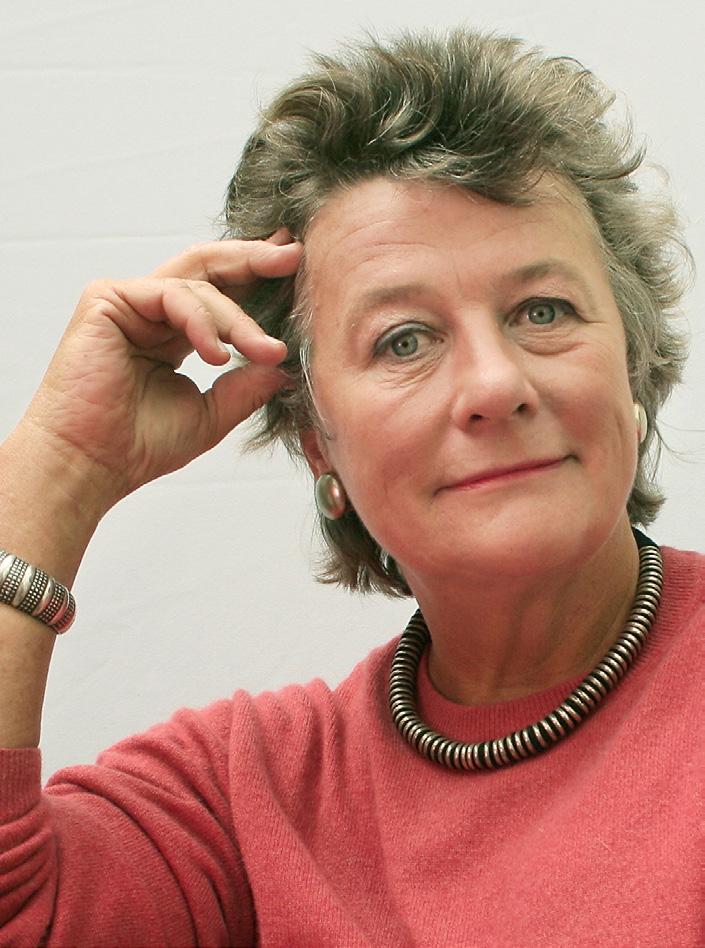
Page 34

NEVER PRINTED - YOUR GREEN CHOICE



From the heart of the Blackmore Vale

After a lifelong radio career, Natalie Wheen found it a challenge choosing her Dorset Island Discs

Page 34
Dorset one of worst counties for raptor persecution, RSPB, after poisoned birds are found

Page 6
Meet a Dorset woman working to preserve a British breed of pig which is rarer than the Giant Panda

Page 28
‘Does anyone know of an NHS dentist?’ Why is the lack of NHS dental care such an issue? Rachael Rowe investigates the problem in Dorset.

Page 10
What’s On - Brief Encounter at the Salisbury Playhouse, GMC bids farewell with an Elgar masterpiece, and Salt, Poole’s first community play Page 62

Therese Coffey lost her audience at the NFU conference in February – but does her attitude raise a bigger red flag, asks Andrew Livingston Page 83
Front cover: The happiest Poll Dorset by Lauren Morris-Bourne


We know, it’s a HUGE magazine. So we make it easy for you - just like grabbing the sections you like best from the Sunday papers, you can click the number to jump straight to the section you want. Or, y’know, just make yourself a coffee and start from the beginning ...
Is it just me, or does March seem to have been just one step too far? We weathered the winter with its relentless rolling onslaught of bad news. March started with optimism, and we all turned our faces to the sun, feeling that perhaps things were finally brightening. But no, silly. That was just a lull.
The punches keep on rolling.
On the national and international stage the news is perennially worrying, unsolvable and uncomprehendingly BIG.
Here at BV Towers we’ve been forced into a new car purchase, and our son in America has had a traumatic couple of weeks (parenting from across the world is HARD when what he needs most is someone to just pop in, put the kettle on and share the load for a bit). And like every other household there are other personal bubbles that insist on suddenly popping.
And yet - as always, I look for the silver lining. The sun is shining! We have been shortlisted for a major national award as Regional Publication of the Year! Spring is finally upon us, and with it comes a new sense of energy and hope. I try to count the small daily wins. I watch the imperceptible greening of the hedgerows and the bright scattering of yellow primroses and celandines as Dorset wakes up. On a walk this month we both stopped and gaped at countless skylarks overhead – all simply shouting lark-swears at us, no doubt, but we were thrilled nonetheless (and then it hammered down with rain, but I’m keeping it positive here) (did I mention that we’ve been shortlisted for a national award?!). I’ll leave you with my son’s cat.
Two weeks ago Mochi fell four floors from the apartment window. Miraculously, she suffered just a cracked pelvis, one snapped tooth and a fractured elbow – for which she has one leg in full plaster cast shoulder-to-toes and is confined to a box. Yesterday, in the few nanoseconds they took their eyes off her, she wriggled her broken leg OUT of her cast.
Editor: Laura Hitchcock editor@BVmagazine.co.uk

Advertising: Courtenay Hitchcock advertising@BVmagazine.co.uk
Gay Pirrie-Weir
Fanny Charles
Everything else: Try Courtenay, he’s the organised one...
Yet another emergency vet dash, and now she sports a new up-to-herchin chunky, un-escapable cast. Mochi is not happy ...
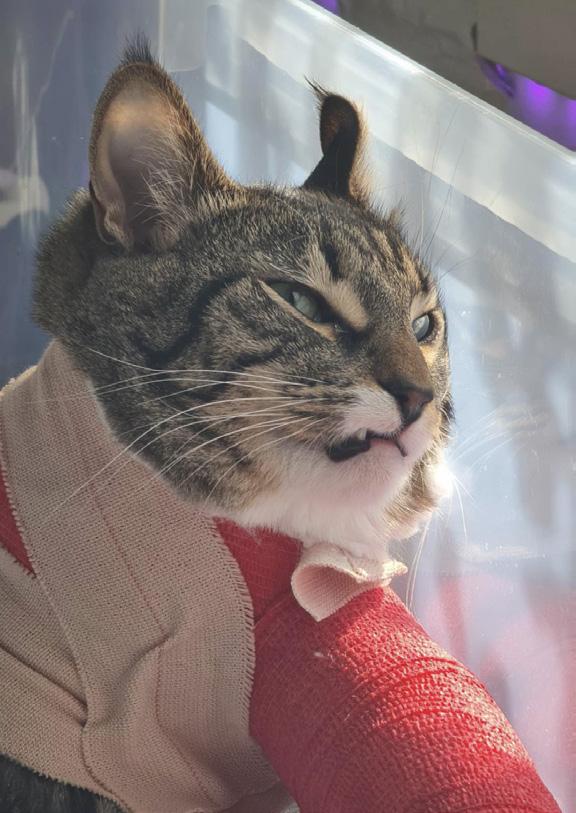
Although initial fears around the Poole Harbour oil spill have been calmed, eventual long-lasting effects are still unknown. Andrew Livingston reports
As I write, it has been 12 days since a ruptured pipeline at Wytch Farm expelled more than 30,000 litres of reservoir oil into Poole Harbour. By all reports the clean-up, overseen by the Poole Harbour Commission (PHC), has been successful. The public are back on the beaches and in the water and no serious harm seems to have occurred to the rare birds of the area.
While most of the surrounding population heaves a great sigh of a relief, there is a small community of boats moored, with no purpose till further notice.

Soon after the news broke of the oil spill from Perenco’s site into Ower Bay, the PHC announced that, with immediate effect, any shellfish harvest could not be retailed, transported or marketed –effectively locking down the local shellfish industry.
beds,
sea bass nursery, both species of seahorse
‘Let’s hope they clear it up fairly soon. I think we are fairly optimistic.’ Pete Miles, owner of Dorset Oysters, told The BV. ‘We are on stop until further notice really.’
Testing of the shellfish has been ongoing, but as Pete understands it, no results have yet been announced. ‘The last I heard, a couple of days ago, [they] should be back within seven to ten days … As all these things are when it comes to food – oysters particularly – it’s always precautionary.’
Dorset Oysters is normally 100 per cent selfsufficient in Poole Harbour, but to keep the business going, Pete has been buying oysters in from Jersey. The oysters Pete usually sells aren’t actually wild, they are grown at a sister company, Othniel Oysters, a farm in the harbour. Like all
... rare and protected species; seabedstabilising eelgrass, peacock worm
a
...Fishing boats moored in Poole Harbour
farmer’s crops, there’s a limited window when they can be harvested.
‘It will be worrisome if we can’t get into this year’s stock. What will happen is [they] will keep growing. If we can’t harvest them, then they grow to a certain size and they’re just not marketable. They simply get too big.
‘Once the water warms up and the plankton and the algae bloom then the oysters will grow quite quick … It’ll be a couple of weeks and [then] once they start we need a good, fast turnaround.’
In the short term, all the shellfish fisherman want is to get out to the oysters, cockles and clams to keep their businesses trading.
There is, however, a long term danger – not only to the molluscs of Poole Harbour, but the ecology as a whole. Emma Rance has 20 years experience of marine biology and conservation and believes that the monitoring of the shellfish in the harbour will have to continue for years to come.
When she heard the news of the oil spill she felt ‘utterly saddened and disappointed’. She says: ‘This should not occur. Oil farms are regulated to operate using the strictest of control measures. We would not expect this to happen.
‘Poole Harbour is the second largest natural harbour in the world and is home to some rare and protected species ranging from seabedstabilising eelgrass, beautiful peacock worm beds, a sea bass nursery area, both species of seahorse and many other habitats and species of conservation importance.’
Before setting up her own marine consultancy business, Noctiluca Marine, Emma worked with the Dorset Wildlife Trust and contributed to Dorset Council’s emergency Oil Spill Contingency Plan, with other government agencies and NGOs.
‘There is no full understanding on the long-term impact of petroleum hydrocarbons on the marine environment. Research has shown that this kind of pollution is known to affect species survival, reproduction and ability to function normally plus many other concerns.
‘‘Oil spills can impact habitats, locking the pollution deep into sediments, allowing for slow release over a long period of time.’
Perenco, the owners of Wytch Farm, have set up a claims line for anyone affected by the spill. In a statement, Frank Dy, the general manager at Wytch Farm, says: ‘Any spill is an extremely serious matter and a full investigation will be launched to ascertain what happened in Poole Harbour. It is important to stress that the situation is under control, with the discharge of fluids stopped and the spill is being contained.’
26th March
• Pipeline at Wytch Farm fractures, spilling oil into Ower Bay
• PHC activates its emergency oil spill plan
• A major incident is declared and agencies including Dorset Police, Dorset Council, Bournemouth, Christchurch and Poole Council, NHS, Environment Agency and Natural England are involved.
• Fishing, swimming and other leisure activities in the harbour are prohibited.
27th March
• 7am - More than 100 people were out assessing the shoreline and harbour, undertaking shoreline cleanup.
• 60-70% reduction in oil sightings in the water from drone footage.
28th March
• 3pm - 30 slightly oiled birds found in the harbour, reported by RSPB
29th March
• Clean-up teams recovered 14,000 litres of oil/ water mix and approximately 1,500kg of oil sediment.
• Key stakeholders in the shellfish industry are advised not to market shellfish harvested from Poole Harbour since the oil spill.
30th March -
• A further 31,000 litres of liquid recovered overnight.
• Oil found washing up on the beaches of Brownsea Island
31st March
• An estimated 100,000 litres of oil/water mix and two tones of sediment recovered.
• Excavation of broken pipe begins
• Oil found washing up on Arne Nature Reserve
2nd April
• Perenco set up a claims line for those affected by the oil spill
• 140,000 litres of oil/water mix and more than five tonnes of contaminated beach/soil material have been recovered
4th April
• Estimated 160,000 litres of oil/water mix and more than six tonnes of contaminated beach/ soil material have been recovered
• People are once again allowed to swim and fish in Poole Harbour
Following the successful prosecution of a Dorset gamekeeper for rural crimes, Andrew Livingston spoke to the RSPB about the scale of the issue
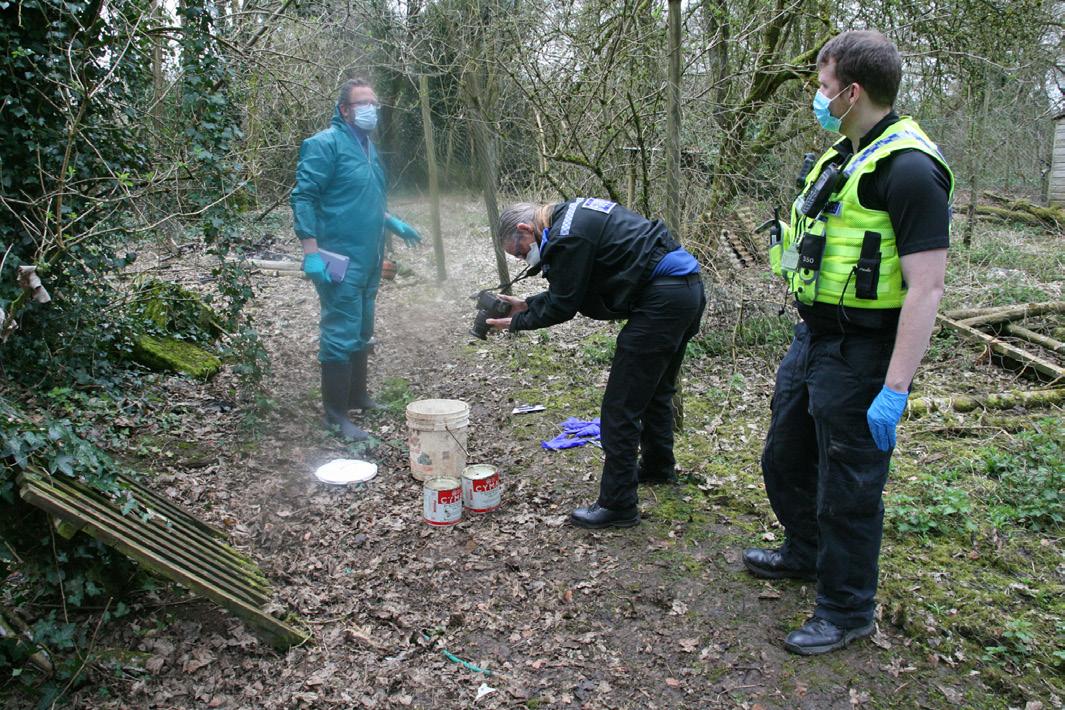

At the start of the 19th century firearms technology had developed sufficiently to create an opportunity for commercial shooting of game birds in the countryside. Many of the large estates that you walk and visit today were originally designed with the intention of shooting pheasant, partridge, duck, geese, grouse or snipe. Landowners began planting woodlands around picturesque settings from where the birds would be ‘driven’ towards a row of guns, to be shot for sport. Whatever your view on it, shooting is undeniably big business across the whole country – including in Dorset. With the amounts of money invested in commercial shoots, gamekeepers are under
... Data showed that Dorset was one of the worst counties for the persecution of raptors
increased pressure to ensure as many of the game birds survive to adulthood as possible and make it to flight on shoot days. These birds, which are bred for shooting, are not at the top of the food chain in the wild and are frequently hunted by our native birds of prey such as buzzards, harriers, eagles and kites. These birds, known as raptors, have been protected from persecution since the Wildlife and Countryside Act of 1981, meaning gamekeepers have no powers within the law to protect their game birds against their predators. Data collated in 2021 by the RSPB (Royal Society for the Protection of Birds) showed that 71 per cent of all raptor persecution in the UK occurred at the hands of gamekeepers on private or commercial shoots. The same data showed that Dorset was one of the worst counties for the persecution of raptors.
Earlier this year, Paul Allen, the gamekeeper for the Shaftesbury Estate Shoot pleaded guilty to seven offences relating to rural crimes, two of which resulted from the discovery of six dead buzzards after a search of his site.
‘It began in 2020, actually,’ Jennie Shelton, media liaison officer for the RSPB Investigations Team,
told The BV: ‘It began in 2020, when a walker found a dead kite and was concerned that the rat had been poisoned and used as bait.’
Dorset Police’s forensics team found that the kite and the rat were both poisoned with Brodifacoum, said to be one of the strongest rodenticides on the market. With this evidence, the police had suspicions that the kite was poisoned deliberately.
‘We got involved [at] that stage.’ says Jenny. ‘We give advice and so, when the search of the land took place, our RSPB Investigations Team was included, along with Natural England, the National Wildlife Crime Unit and Dorset Police. ‘On that search, they discovered dead buzzards – six of which had been shot and the remains of three more in a fire. There was also an array of poisons, many of which were banned substances, stashed away.’
The search also revealed a loaded shotgun which was left behind a kitchen door, in breach of Allen’s firearms licence.
Post-mortems on the buzzards found that they were shot rather than poisoned and Allen was never charged with causing their deaths, only for storing their bodies. For his crimes, Allen was sentenced to 15 weeks in prison, suspended for 12 months, and fined more than £2,000. There were mitigating factors in the sentencing. Allen had lost his wife to cancer around the time of
the investigation, and the court deemed that a custodial sentence would have had a significant detrimental impact on his two daughters.
Jenny Shelton believes that the sentencing was typical for crimes of this nature. She says: ‘I think only one person has ever been jailed for a raptor crime. What we find generally is that it might be a first offence, or they might have good character.
‘Our concern is that this might not be much of a deterrent for other people committing these crimes. [The fine] is not a huge amount if you consider the scale of some of these shoots.’

A red kite in flight. Native birds of prey such as buzzards, harriers, eagles and kites are seen as predators to the game birds on commercial estate shoots. Of all raptor persecution in the UK, 71 per cent occurred at the hands of gamekeepers on private or commercial shoots.

The widespread use and misuse of poisons in the countryside … are killing birds of prey
She is concerned that the UK’s sentencing guidelines do not allow magistrates to impose stronger penalties.
Even within his own community, Paul Allen was condemned. The National Gamekeepers Organisation suspended Allen’s membership and later expelled him from the organisation. The organisation declined an opportunity to speak with The BV, but states on its website: ‘We have a no-tolerance approach to any kind of wildlife crime and we expect our members to adhere to the Code of Good Shooting Practice.’ Since the COVID outbreak, there has been a spike in cases of raptor persecution, which mainly include shooting, trapping or poisoning.
Jenny fears that these reported cases are the tip of the iceberg: ‘It’s hard to say whether it’s getting worse or better because what we’re detecting is probably just a fraction of what’s happening.
‘I think what is really needed is an overhaul of the system. Instead of targeting the gamekeepers, who are usually the guys committing the crimes, it is important to impose a greater deterrent on the employers or the estates.’
Natural England, which assisted in the search of Paul Allen’s property, commented after the sentencing: ‘We are extremely pleased that he has been held to account for his appalling offences against wildlife.
‘This case, and the death in Dorset of one of the stunning white-tailed eagles reintroduced to the Isle of Wight, are clear examples of a bigger problem: the widespread misuse and abuse of poisons in the countryside, which are killing birds of prey and pose ongoing risks to the public.’
According to the RSPB, the white-tailed eagle was found dead on the same Shaftesbury Estate, after the investigation had started, and had also been poisoned by Brodifacoum.

As a result of habitat change and unchecked hunting, by 1918 there was just one single lonely white-tailed eagle male flying in the UK. He was shot and killed and the birds were officially extinct on our shores until a re-introduction programme began in the 1980s. The satellitetracked eagle, which had been released on the Isle of Wight, was found dead in 2022. ‘We don’t know where it picked up the poison,’ says Jenny. ‘It had spent time on several pheasant estates in the days leading up to his death and it hasn’t been possible to identify a suspect.’
A scheduled police search of the estate was cancelled.
‘Basically that was the end of the investigation.’ says Jenny. ‘There’s clearly an issue with rodenticides being used. They may or may not be used to target birds of prey, but they’re certainly getting into their food chain and they are killing these birds.
And that’s a crime.’
We do more than offer a range of options – we provide a clear sense of direction.
Whether you need advice on commercial or private matters, we’re here to help.

It’s now a common cry: ‘Does anyone know of an NHS dentist?’ But why is the lack of NHS dental care such an issue? Rachael Rowe investigates the problem in Dorset
When was the last time you saw a dentist? Are you even able to access an NHS dentist? With NHS dentistry becoming harder to find – but across the entire country – what is happening to the provision of dental health care?

‘After many many months of searching and calling and emailing different dentists, I am yet to find one taking on NHS patients. I have a severe need to see an NHS dentist as I’m really unable to eat because of the pain which has led to weight loss and other health complications. I
The pink dots show the 93 Dorset dentists registered on the NHS website, highlighting the gap in provision in Purbeck, and the north west, mid and north east of the county.

am a young adult who doesn’t work currently due to disability and illness and am unable to pay for private dentistry treatment which I have explored too.’ Patient comment, in the Healthwatch Dorset report.
How many see an NHS dentist? Data from NHS England shows that fewer than half the adults in the South West have seen a dentist in the last two years. If they end up with a problem, chances are they will not be able to access NHS dental care. Healthwatch Dorset has recently
published a report on the state of dental access in the county. The recent survey of Dorset’s 93 dental practices found that, at the end of 2022, none was taking new NHS patients.
So what is happening and how is care being prioritised?
Healthwatch Dorset manager Louise Bate explained what had caused her most concern about the report: ‘Last year when we did this questionnaire there were three dentists taking patients. This year, there are none. It’s getting worse. Even if the contracts are changed, there are no dentists.’ Of the 78 dental practices that responded to the Healthwatch survey, none was taking new NHS adult patients, 17 now only treat private patients and only 18 were accepting new NHS patients if they are children. Seven practices said they were accepting patients with additional needs, and 23 practices had waiting lists, half of which were more than 12 months long.
Dorset’s below average Maps indicate that there are dentists in North Dorset, but they are not taking any NHS patients right now.
The South West Dental Reform
Group is a network which sets the strategy for NHS dentistry in the west country, including Dorset. Membership includes regional and local staff. Their assessment of future needs in Dorset identified several significant issues for the future of dentistry. For example, by 2028, Dorset’s population will have increased by three per cent – or an additional 23,708 people. While the child population will have decreased by six per cent, older adults (65+) will have increased by 18 per cent, or 35,504 additional people. So, in addition to finding dentists to serve more residents, there will also be a need to provide extra services to manage the complex dental needs of older people. Louise identified a further issue. ‘Because of the way the dental contract is currently set up, dentists see the easiest people to manage – those needing basic check ups. That means it is much harder for people with complex needs to get an appointment.’ How many people can actually get to see a dentist? The SW Dental Reform Group reviewed the data and found that access to children’s dental services in the last year was 48.9% in below the average for England (53%) average. Access to adult NHS dentistry in Dorset is also below the national average at 45.6% (England average 47.1%). That’s a significant gap between those who should be able to see
Map shows dental clinics in Dorset that accept children as new NHS patients. None said they were accepting adult patients, unless very elderly or had additional needs.

a dentist and those who don’t or cannot.
Until April this year, NHS dentistry was commissioned by NHS England. From April, dentistry is under the control of the local Integrated Care System (ICS). Louise is encouraged by this: ‘I’m more positive now the ICS is taking over responsibility. There’s an opportunity to use local incentives. I’d like to see children prioritised; if we don’t, we are setting ourselves up for a generation of dental problems. I’d also like to see better access for vulnerable people.’
With local commissioning of dental services, there are also opportunities to design services to meet the needs of the population. Louise already has thoughts. ‘I’d like to see more joint working with the voluntary sector. For example,
people access mental health services because their teeth are problematic. People are unable to eat properly, they become malnourished, and voluntary groups contact us for advice.’ Chief commissioning officer of the NHS Dorset Integrated Care Board, David Freeman says:
‘From 1st April we will have a much greater opportunity to work with local people, dentists and other specialists in our area to develop new and different ways of working. We’ve already started this work – from helping children and families with good dental hygiene to designing extra services to meet more complex dental needs, we are developing plans for improvements this year.’
If you have toothache and don’t have access to a dentist, Louise Bate advises the best course of action is to dial NHS 111 to discuss your needs. ‘And keep looking for appointments, because some NHS slots do come up.’ Clearly, the NHS will be busy working to improve access to dentistry this year. However, there has never been a better time to ensure we all practise good dental hygiene, stop smoking and reduce sugar intake to avoid tooth decay as much as possible.

Sources:
• South West Dental Reform Group Report 2022-Dorset.
• Healthwatch Dorset 2023: NHS Dental care in Dorset.

North Dorset MP Simon Hoare objects to a planning application to site 40 caravans as temporary refugee homes in Blandford – Gay Pirrie-Weir reports

Plans to site up to 40 caravans as temporary homes for Ukrainian refugees on land known locally as Crown Meadows on the western boundaries of Blandford Forum has been met with a public outcry in the town and will now go to appeal, after Dorset Council planners failed to decide the application. A date for a site visit by the inspector who will decide the scheme is yet to be announced.
The application was submitted by the Rothermere Foundation and Bryanston (RFE) Ltd (which is not connected to Bryanston School), and refers to land reached from Deer Park Lane, owned by the Foundation. It is part of the Crown Estate land bought by the Foundation in 2015:
“The Crown Estate has agreed the sale of the Bryanston Estate in Dorset to a UK company held on behalf of the Viscount Rothermere and his son the Hon Vere Harmsworth for an undisclosed sum. The purchase is consistent with the family’s long-term strategy to diversify its investment holdings. The 4,700 acre Bryanston Estate, purchased in 1950 from the Portman family, lies to the north west of Bournemouth at
The planned site is known locally as a water meadow, suffering from flooding whenever the Stour breaks its banks in the winter months
Blandford Forum in Dorset. The largely agricultural estate is predominantly comprised of 14 farm tenancies and around 40 residential properties.” The Crown Estate June 2015
The land was transferred from Crown ownership to the Rothermere Foundation three years after it had been at the centre of an impassioned campaign in the town. The Crown Estate applied for permission to build up to 200 new homes on the Deer Park Farm site, in accordance with the (then) North Dorset District Council’s new core strategy, which was under discussion in early 2013. Two petitions circulated in the town and surrounding area, and were
signed by more than 6,000 objectors, most citing threats to wildlife and amenities, but primarily to dangers of flooding when the Stour bursts its banks. One petition said the scheme “failed to respect Blandford’s iconic setting.”
Crown Meadows has a contentious planning history in the town, and when the latest application, for temporary homes for Ukrainian refugees, was submitted, old worries quickly surfaced. The current application, for “change of use of land for the stationing of up to 40 No. caravans to provide temporary accommodation for up to 5 years, together with the formation of ancillary bases, tracks, services communal
“[It is] the creation of a linked-tonowhere caravan ghetto” and the “planning version of Apartheid”North Dorset MP Simon Hoare calls the planned scheme “The creation of a linked-to-nowhere caravan ghetto”





















































amenity/green space, play areas, landscaping and bin stores. Provide low-level lighting to tracks and common areas. Convert redundant agricultural building to an amenity block and community area,” sat on planners’ desks for longer than the permitted period, and at the request of the applicants it has now been called in by the Secretary of State for Levelling Up, Housing and Communities – Michael Gove at the time of writing. The call-in has been welcomed by North Dorset MP Simon Hoare, who opposes the scheme and accuses the Rothermere Foundation of riding in on a Trojan Horse in the guise of a philanthropic foal (read his full letter to the Inspectorate here).
Mr Hoare told the BV: ‘The key thing is the inappropriateness of the provision at Crown Meadows. We simply do not ghetto-ise by nationality. Having 40 Ukrainians effectively plonked in a small, isolated settlement would be appalling. The lack of both integration and support are unacceptable – it’s the thin end of the terrifying wedge that is ‘certain people can live here, but not there’.
As I said in my letter to the Inspectorate, it is the planning version of Apartheid.
‘I feel this is simply a chanceyour-arm Trojan Horse –thinly covered by a veil of philanthropy.
The MP continued: ‘In fairness, he (Lord Rothermere) is no doubt keen to help, but there are so many things he could do that would be faster and more effective. He could buy many actual homes that could house up to 40 families – a fantastic gesture, he’d retain ownership of the capital assets and it would be a swift solution.’
Mr Hoare welcomed the site
visit: ‘It’s excellent news. It’s hugely important in this case in order for the inspectorate to see and study the locality and the linkages. They can see in real time the parcel of land, and hopefully arrive at the same conclusions as my constituency – that help is great, but the site is wrong.

‘The development is in the wrong place, but also sits wrongly in the broader refugee settlement policy. I do not use the words apartheid and ghetto lightly – but it is effectively ethnic grouping. We are saying “These people must live here, outside the community”.’

In 2021, Brad Jones had a nightmare motorbike crash at Brands Hatch, followed by three weeks in a coma. Now he’s back on two wheels

‘I had a highside accident –where the rear end slides then suddenly regains grip and violently flips. I rolled through the gravel, and knew I had broken my collarbone but then I was knocked out, which it turns out was great.
‘The bike had flown through the air and came down on my head and chest: that’s where the bad injuries happened. Luckily, I crashed right outside the medical centre: British

Superbikes employ the best medics. They had my visor up after 12 seconds – there was blood pouring out of my head.
‘I was airlifted to Kings College Hospital in London. I had broken the base of my skull, shoulder blade, pelvis, collarbone and five ribs, which punctured my lungs. I was put into an induced coma for three and a half weeks...’
Brands Hatch, July 2021
Brad Jones was 23. It was his
debut season in the Superbikes Championship riding 1,000cc machines competitively for the first time. He was more used to 600cc bikes. It was, as he says ‘a lot more power, a lot more for me to learn.’
The third race of the season was at Brands Hatch, the closest race circuit to his home in Stalbridge. ‘It was the first race of the weekend, on the Saturday,’ he says. ‘I kept having mechanical issues. Maybe I went into that bend on the first lap a bit too fast. Perhaps it was the cold tyres. I don’t know. It was just one of those things. I do remember vague little bits. I’ve seen the footage. But talking to you now, it’s like I am talking about someone else …’
Brad is now back living with his parents and working as a heating engineer in his grandfather’s business.
He’s talking about that crash 21 months ago: ‘I was in hospital for seven and a half weeks. When I came out of the coma, I was asking the same questions all the time, I was all over the
place,’ he says. ‘I’ve still got two screws in my pelvis and a plate in my collarbone but physically, I’m 100 per cent recovered. Psychologically, I’m not 100 per cent. I struggle with short-term memory: the doctors said it could take four years.’

Brad is polite, warm and quietly spoken, and is well liked in the local community and racing world. His dad Tim is a mechanic: he raced competitively himself, and Brad caught the bug. He started in motocross aged six, following his older cousin Ollie, and over 15 years worked his way up to the 600cc British Supersports circuit and the fringe of the World Championships.
In 2019, Brad came ninth in a field of 25 at Donington Park and received a wild card for a World Championship race in Qatar. But, he says, the reality of getting a place in a World Championship team meant having to secure £150,000 sponsorship each season. ‘The thing that stopped me going on the world stage was money. It was demoralising – but I could see that it just wasn’t going to happen.’
Brad turned to British Superbikes, then the highest level of racing in the UK, with a season of 11 rounds (this year it begins in April at Silverstone and ends at Brands Hatch in October). The pandemic delayed his first competitive season until 2021. Then came two races –and then the crash. Brad’s parents Tim and Maxine were at the hospital daily, as was his girlfriend Courtney. The family was allowed in for an hour a day but only one at a

time, so they were allowed 20 minutes each. At times he was partially conscious. ‘One time, he squeezed his mum’s hand and was able to focus but then he was back into a coma,’ said grandad Bob Jones.
At one stage, doctors told the family that the next 24-48 hours was down to Brad. Only his inner strength would pull him through. Added Bob: ‘I was watching that race live on television. I didn’t think Brad was going to make it when I saw the screens go up around him on the track.’ It was a dark period for the whole family.
‘At the start, there was lots of talk about maybe having to adapt my parents’ home for me,’ says Brad. But the community rallied to help. Cousin Lucy Calvert set up a crowdfunding page with a £20,000 target, helped by selling T-shirts, caps and stickers with the hashtag #KeepFightingBrad. The page eventually raised £40,979 from nearly 1,000 people. The money proved invaluable: instead of having to travel to Poole for NHS physio, Brad could have intensive physio and rehab work at home. He had his teeth repaired, lost seven kilos and was advised to get a therapy dog (he now has a cavapoo called Rufus). By September he was able to walk without crutches. Over the winter of 2021-22, Brad worked hard to regain strength. He struggled to breathe properly and had to go cold turkey on medication – ‘I worked to remain
‘I had broken the base of my skull, shoulder blade, pelvis, collarbone and five ribs, which punctured my lungs. I was put into an induced coma’Pre-crash Brad on his bike
positive but that was the time I struggled mentally.’
He was barred from driving – but he did have an exercise bike at home. And it got him thinking about the possibility of racing on two wheels again …
In April 2022, he began riding his pushbike out locally, to Marnhull or Sturminster Newton, as part of the rehab and because it was ‘good for my head.’
Brad had the all-clear from hospital, stepped up the intensity of riding – and entered a race. It was at Thruxton, one of the familiar Superbike tracks. But this time it was all down to pedal power – a one hour Category 3 simple circuit race; first over the line wins, entry fee was £20 and the winner gets a pat on the back.
Brad hasn’t stopped cycling since. He’s now risen to Category 2 where the racing is much harder. With his best friend Scott Ridding, an established name in World Superbikes, he cycles all over the country.

I met Brad on a Monday, fresh back from two weekend races in Lancaster and Oxford. Oxford was eight laps – 62 miles in total – and Brad did 40 before calling it a day. Could it be that perhaps it’s no longer about winning but being out there, with a friend?
‘Scott and I will talk about Superbikes for 15 minutes, maybe, and that’s it – we just talk about cycling all the time!’ Brad is clear that cycling is a hobby, that he’s not going to make money out of it and that it’s a game. But there’s a light in his eye. ‘I’ve always been competitive. I don’t like being beaten – which helped me in my recovery. This year, I want to win some cycle races. I want to buy a house. And I will go and watch some motorbike racing: I have so many friends that I won’t see
unless I go to the track.’ And how would he feel about that? Would he be thinking of a return to the motorbikes? Reflecting on his life before the crash, and where he is now, Brad’s response is thoughtful. ‘I was living the dream. I was working three days a week and racing motorbikes at weekends. My dad was my mechanic and my grandad and nan were coming to watch.
‘Motorbike racing has changed financially even just in the last two years. It used to be £20,000 sponsorship was needed for a good team in Supersports – now it’s £60,000.
The way I look at it, things happen for a reason. I had a great time doing it – and I was
very lucky to get away with it. I would say I had my bell rung. ‘Now I can still go to work, earn some money, see my mates and ride a pushbike.
‘I’m enjoying doing my own thing. I can even have a few drinks – I never used to drink when I was racing. It’s all new to me. It’s what you’re supposed to do when you are 18!
‘Even now, I see local cars driving around with the #KeepFightingBrad sticker on. The support from everyone has just been unbelievable. I reached the pinnacle of where I thought I could get to and now I am simply grateful to be here. I thought it was the worst day of my life – but it was the best day, as I pulled through.’







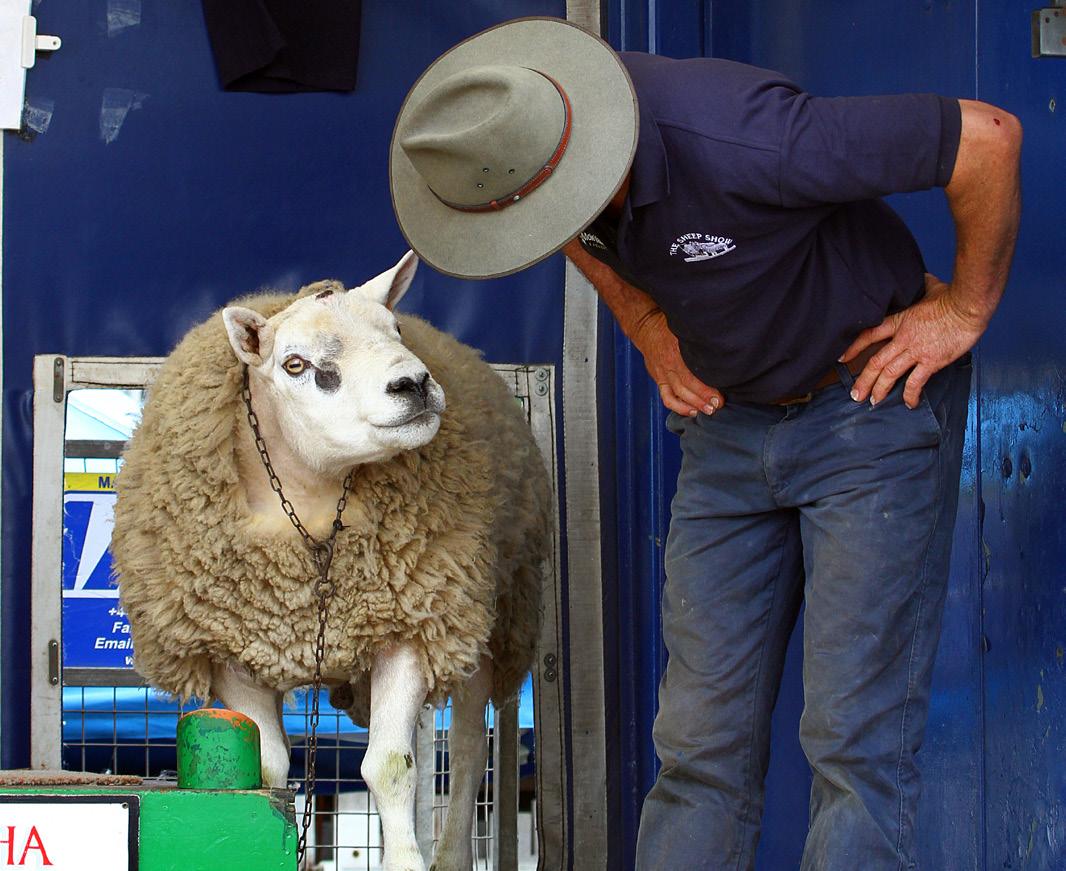
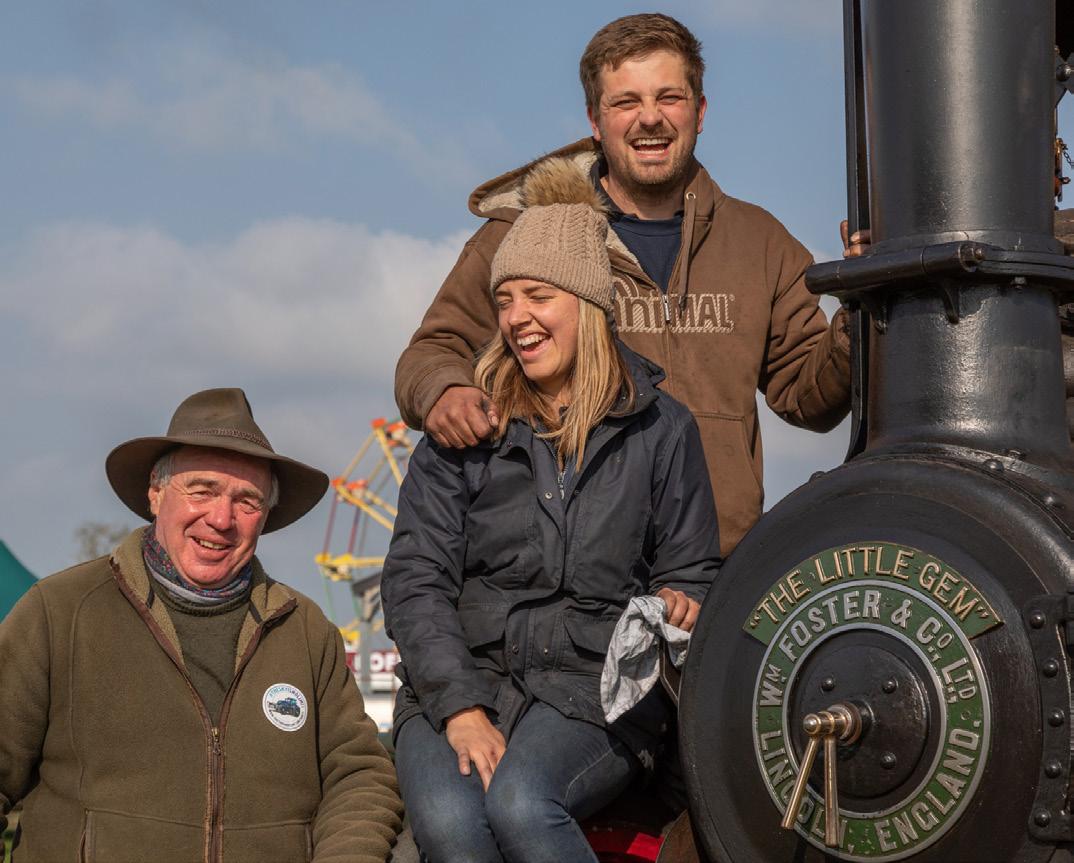
The weekend event is taking place at Turnpike Showground between Gillingham and Shaftesbury on the 22nd and 23rd April
The Spring Countryside Show is BACK!
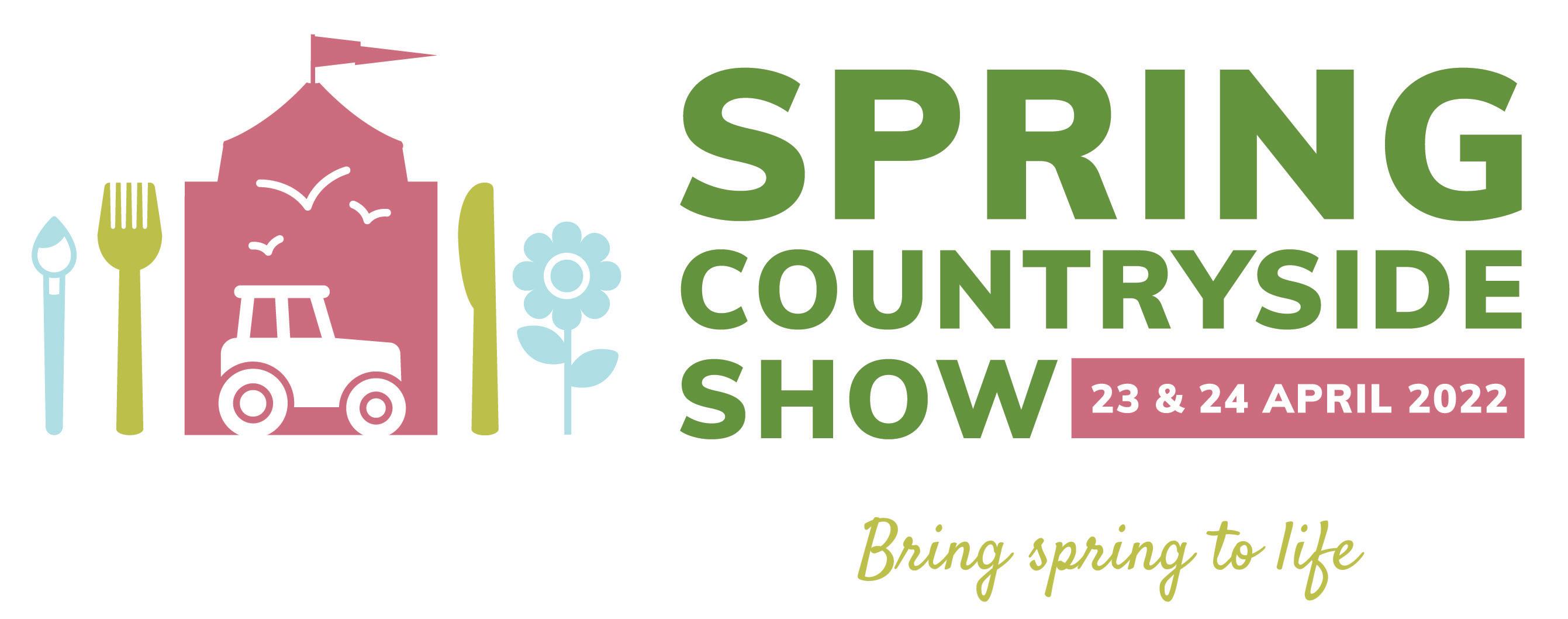
Get ready for an exciting and unforgettable experience – the first show of the year in Dorset’s rural events calendar is just around the corner! A line up of over 50 exhibits, demonstrations and attractions are set to deliver a weekend jam-packed with fun for the whole family. Taking place over two days, the Spring Countryside Show is the perfect way to spend a day with family and friends. Nick Hill, show secretary, says: ‘With just over two weeks to go until the Spring Countryside Show we are ready to welcome everyone, and what a treat is in store! We are very excited to start off the 2023 show season with an amazing weekend of entertainment for all.’
Rural Living Countryside pursuits and rural activities will of course be on display, including a dedicated
‘Rural’ ring sponsored by Gritchie Brewing Co.

See heavy horse logging, terrier racing, gun dog demonstrations and the spectacular horseback falconry display by Jonathan Marshall. The famous Dorset Axemen will be battling it out against the clock, and back by popular demand is the hilarious ‘Sheep Show’ – yes, sheep really do love to dance. The rural skills of farrier, wood carving, blacksmith, stickmaker and coppicer will also be on show, and for those who love a bit of vintage there’s vehicles, farm machinery and steam engine demonstrations.
In other news ...
Food lovers can indulge their passion in a dedicated cookery area. The best local produce is on offer, as well as new recipe ideas in the Cookery Theatre. Green-fingered visitors will enjoy the stunning show gardens and floral displays. Perhaps try your hand at willow weaving, in one of the various have-a-go
activities that are scheduled.
For those who love animals, there will be a variety to meet and greet – whether you’re a fan of horses, sheep, goats or pigs, you’re sure to be happy. There will also be a range of talks and demonstrations throughout the event, providing an insight into the workings of the countryside and the people who make it so special.


To increase the celebratory atmosphere there’s a festival area with live music, food and - of course - a bar with local ales, gin and cider. This will all be open until 10pm on the Saturday evening, so visitors can dance beneath the stars and enjoy a true festival vibe.

If all that’s not enough to ‘bring in the spring’, there’s a fun fair with bouncy castles, and tractor and trailer rides.
Tickets are currently £14 for adults (gate price will be £16) – children go FREE! . And if you have a country craft or skill you can demonstrate, or want to try your luck at a Show Garden or floral display – there’s still time to get involved. For tickets and more information, visit springcountrysideshow or call 01747 823955


AKC, an agricultural consultancy firm based near Devizes in Wiltshire, offer independent strategic and financial advice and consultancy for agricultural businesses – as well as bookkeeping and payroll services for all business types. AKC are engaged with the farming community and know first-hand the impact the current industry changes are having on farmers.

AKC’s farm consultant, James Berry, provides technical and financial advice to farming clients.
Farmer Simon Barrett engaged AKC for a farm business review with James, and found the process very simple: ‘AKC provided wide industry knowledge and a huge amount of expertise and experience.’
Simon also noted that James was very patient and personable: ‘he was happy to explain to me again and again, and helped me understand [the different schemes on offer]. It was more than comprehensive, and a very positive experience’, says Simon. It led him to ask James for help with his Countryside Stewardship application this year.
‘Last year I submitted the application for myself,’ he says, ‘but I felt anxious I wasn’t making the most of the scheme.’
After walking the farm with James and identifying how best to apply different stewardship options, Simon felt
he attained a far higher level of revenue than if he had completed the application himself.
‘The stewardship application has been of most value to me’ says Simon. ‘Others should compare the price of professional fees with the income brought long term. I encourage other farmers to be brave on fees; be prepared to pay for professional advice, and it will pay dividends.
‘AKC were excellent. There was a mix of skills and a good marriage of financial awareness and breadth of agricultural knowledge. In my experience accountants generally don’t have the depth and technical knowledge of farming, so it was a revelation to have someone bring a better understanding that allowed me to feel more up to the numbers.’
As part of the Future Farming Resilience Fund, AKC are working with NIAB and Savills to bring free tailored business advice to farmers in receipt of Basic Payments. This is an important opportunity for farmers to learn about the changes in policy, the impact it will have on their own business and how they can adapt to these challenges.
Simon Barrett was left feeling very encouraged by the advice he was given;
‘I learnt a huge amount about the ELMS schemes I could access,’ he says. ‘Also, James shared what is making other
farms across the country more profitable.’
Another AKC client agreed the process of the farm business review worked very smoothly. Mark Vaughan Lee, from Dorset, describes his experience in receiving guidance on the replacement of BPS, learning about how they can do things differently, in addition to what they are currently doing.
‘I have been using AKC for ten years.’ He says. ‘They provide an excellent on-farm service and have held my hand throughout the process, especially with the transition and the loss of BPS payments.’
As environmental land management continually develops, AKC are helping clients with:

• Sustainable Farming
Incentive rollout/ Animal health & welfare/ Productivity opportunities
• CSS Plus Applications planned in 2023
• Slurry Infrastructure Grants
• Opportunities for landscape recovery (developing working clusters)
What makes AKC unique is the array of commercial farm business experience backed up by a professional accountancy, bookkeeping & payroll team –providing clients with an all-encompassed service.
Get in touch to see how we can help you – 01380 724687 akcagric.co.uk
‘I felt anxious I wasn’t making the most of the Countryside Stewardship scheme’
For Lillie Smith, it all began with Cynthia. A huge Gloucester Old Spot pig, Cynthia lived on a farm where Lillie, a student at the time, had a weekend job mucking out horses.
‘I fell in love with her,’ recalls Lillie. ‘Pigs have such brilliant personalities. I was fascinated. I helped out when she was farrowing (giving birth) and weaning her piglets.’
Fast forward and Lillie, now 27, has a seven-acre smallholding in Shillingstone, appropriately called Ham Farm. Here she lives with farmer husband Morgan, their four children ranging in age from two to eleven and seven rare breed Oxford Sandy and Black (OSB for short) pigs. ‘I never planned to have so many children – or pigs!’ laughs Lillie. The five sows Felicity, Chelsea, Gladys, Peaches and Claudia (I got the privilege of naming her!), plus the two burly boars, Albert and Jethro, live outdoors for most of the year, with wallowing holes and mud galore. They really are as happy as the proverbial pigs in muck and Lillie is about as busy as one person can be; it’s a long way from her numbercrunching days working in accountancy.

‘I absolutely love this life,’ Lillie says. ‘There’s admittedly a lot of mud but it’s nothing a pair of

Lillie Smith with her rare breed Oxford Sandy and Black (OSB) sow.


Oxford Sandy & Blacks are noted for their many qualities, particularly their excellent temperament and mothering abilities
overalls won’t protect you from. Though I do get through an enormous number of Wellington boots!’ Lillie’s porcine passion has led her to become one of only 136 registered breeders of Oxford Sandy and Blacks in the country – and she is a highlyrespected breed rep for Dorset.
The Oxford Sandy and Black Pig, sometimes referred to as the Plum Pudding, is one of the oldest British pig breeds, existing for around 300 years. It’s become almost extinct twice.
‘OSBs, Tamworths and Saddleback breeds are all rarer than the Giant Panda. There’s only around 400 OSBs registered in the UK – and there’s about 2,000 pandas in the wild, plus more in captivity,’ says Lillie.
OSBs are on the Rare Breeds Survival Trust watchlist. As an active member of the Oxford & Sandy Black Pig Group, championing preservation of this breed, Lillie is passionate about keeping the bloodline pure. ‘OSBs have 13 female blood lines and four male blood lines. I’m strict about focusing on good breed characteristics. Out of the nine litters we had last year, I kept only three pigs for breeding.’
There’s a lot more to consider than a snout and curly tail when you’re looking for a pedigree-perfect

OSB. There should be a blaze on the front, a white tail tip, white feet, a good stature and even the teats need to be spaced properly. Lillie explains: ‘If they’re not evenly spaced, the piglets can’t get to them when the sow is on her side, so they won’t be able to feed properly.’
As well as protecting this rare breed, Lillie has 14 ‘growers’, which remain unnamed as they will be slaughtered. Working with a local abattoir and butcher, Ham Farm pork sausages, bacon, gammon, pork burgers, joints, half, and quarter pig boxes are all sold in local farm shops and butchers and Lillie also delivers direct to customers.
Oxford Sandy & Blacks have star quality. Five of a recent litter are now petting and pig-racing stars at Farmer Palmers children’s farm in Poole. Lillie also works closely with the Countryside Regeneration Trust at nearby Bere Marsh Farm and has just sold three of her pigs to them. Their natural foraging actions will turn over the land and help to increase biodiversity on the farm (see p.35).
For the first time, Lillie and some of her rare breed pigs will be at the Spring Countryside Show at Motcombe this month. ‘I’m teaming up with Seb’s

Saddlebacks, another rare pig breeder, and we’re hoping to educate the show visitors about these wonderful creatures, their history and their importance as a food source.


‘We value quality over quantity with our pigs. They take longer to mature than commercial pigs but they taste so much better for it. I’m with my pigs all the way – from breeding to butcher and finally to the public. I’m proud to be preserving this rare breed alongside producing sustainable food with local provenance. I know my pigs have a great life.’
Follow Ham Farm on Facebook
You can see Lillie and meet her pigs at the Spring Countryside Show at Turnpike Showground on Saturday 22nd and Sunday 23rd April
A-list dinner party guests?
Jeremy Clarkson – I know he’s not everyone’s cup of tea, but his Clarkson Farm Show has done more to publicise farming than any other in a long time. I’d be interested in his views now he has been through issues many of us farmers have experienced.
Books by your bedside?
Anne of Windy Poplars (part of the Anne of Green Gables series). I’ve been on it for a while – I don’t get much time to read!

Guide Price: £2,500,000
A charming, five-bedroom, Grade II listed former Rectory in a prime Wiltshire village, set within wonderful grounds and gardens.


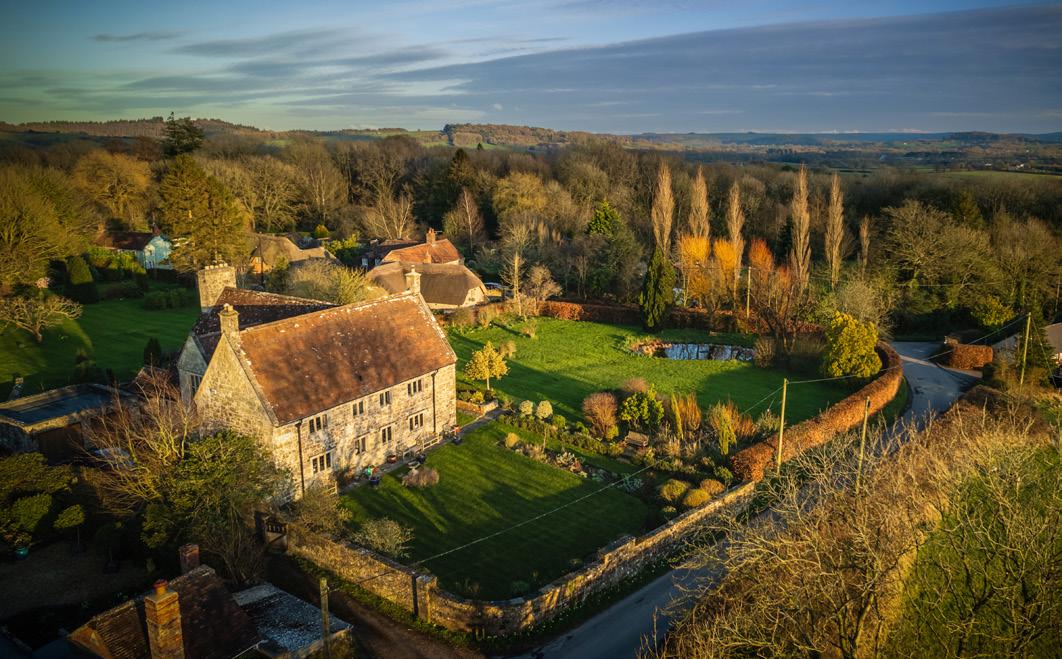
From: £500,000
A beautifully designed and carefully crafted development of three and four bedroom homes, created from a historic farm courtyard.



Guide Price: £685,000
An attractive, three-bedroom, detached, Grade II listed village home with delightful landscaped garden and a double garage.
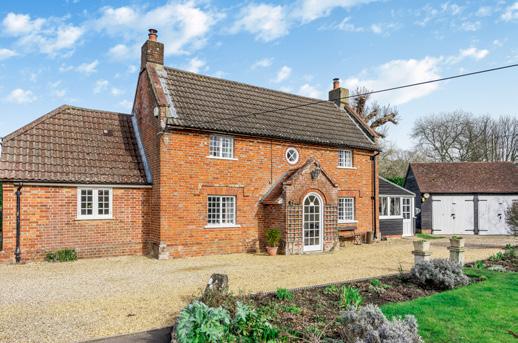
Aster have a selection of 2, 3 & 4-bedroom shared ownership homes* at the lovely Comerwicke Fields development, situated around 3 miles from the town of Sturminster Newton.
Situated within the Blackmore Vale in Dorset, Okeford Fitzpaine is surrounded by outstanding rural countryside in the North of Dorset and could be the idyllic little village you call home!

The Comerwicke Fields development and its shared ownership homes give you the chance to jump on the property ladder in Dorset.
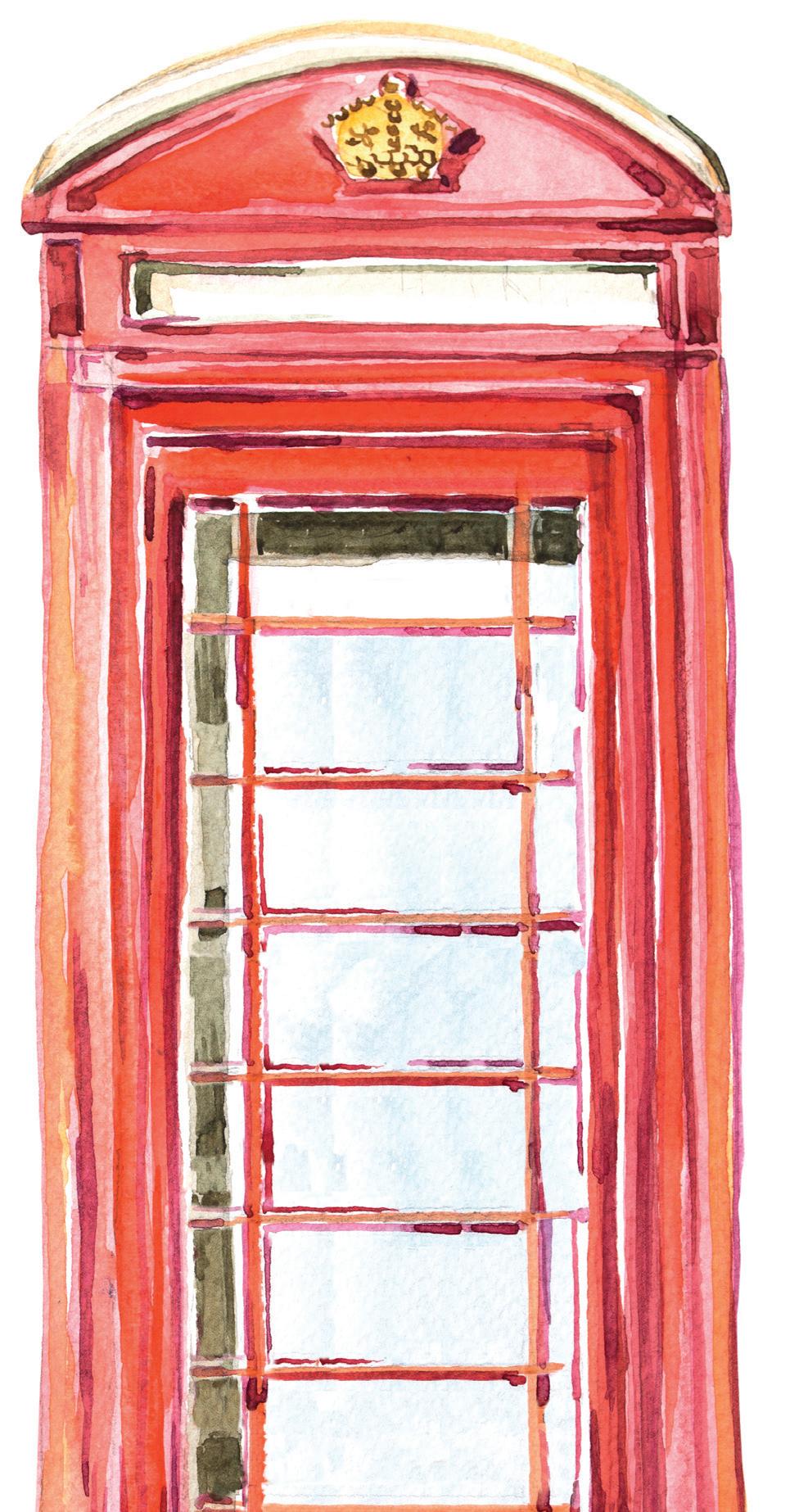
Conservation efforts at Bere Marsh Farm have taken on an unusual twist with the arrival of three rare breed Oxford Sandy & Black pigs. The trio of female pigs will be allowed to freely roam a nine acre field for the next few months, and they will naturally root up the ground. The idea was suggested by ecologist Derek Gow and is part of the Countryside Regeneration Trust’s (CRT) plan to increase natural biodiversity. The pigs have come from nearby breeder Lillie Smith, one of only 136 registered breeders of Oxford Sandy and Blacks in the country. See our feature on Lillie and her OSB’s on page 25. The sows will be left to their natural foraging behaviour that will encourage a less uniform area filled with scrub and tussocks, and will create small patches of bare ground to allow grey willow and other wild
plants to establish. The wild field landscape will provide a better habitat for insects and field voles – and consequently more food for the farm’s barn owls.
Volunteers from the Bere Marsh Farm community will be on duty every day to feed and monitor the pigs as part of Operation Pig Watch. According to Elaine Spencer-White, the farm manager, the response to the call for volunteers was overwhelming; within 24 hours of the call being sent out, she had 14 pig-sitters volunteered to help, with two more on standby. The volunteers will monitor the pig’s daily welfare and scatter their food across the field to encourage their natural rootling activities. Feeding times will also be flexible to stop them relying on a regular meal. Pig-promoted conservation has
not been used at Bere Marsh Farm before, and the innovative scheme is being closely monitored by the CRT, which hopes to see results quickly. They plan to take a photo from the same spot overlooking the field for a detailed record of the habitat’s development over future years. The hope is that the pigs’ assistance will result in the establishment of a variety of plants and create a sustainable ecosystem for future years. Across its 19 farms and properties the CRT works on the principal that nature is integral to good farming, and that philosophy is the practice on more than 2,000 acres of working farms, smallholdings and woodland across the country, where they are demonstrating how regenerative farming increases biodiversity and maintains sustainable food production for every one of us.
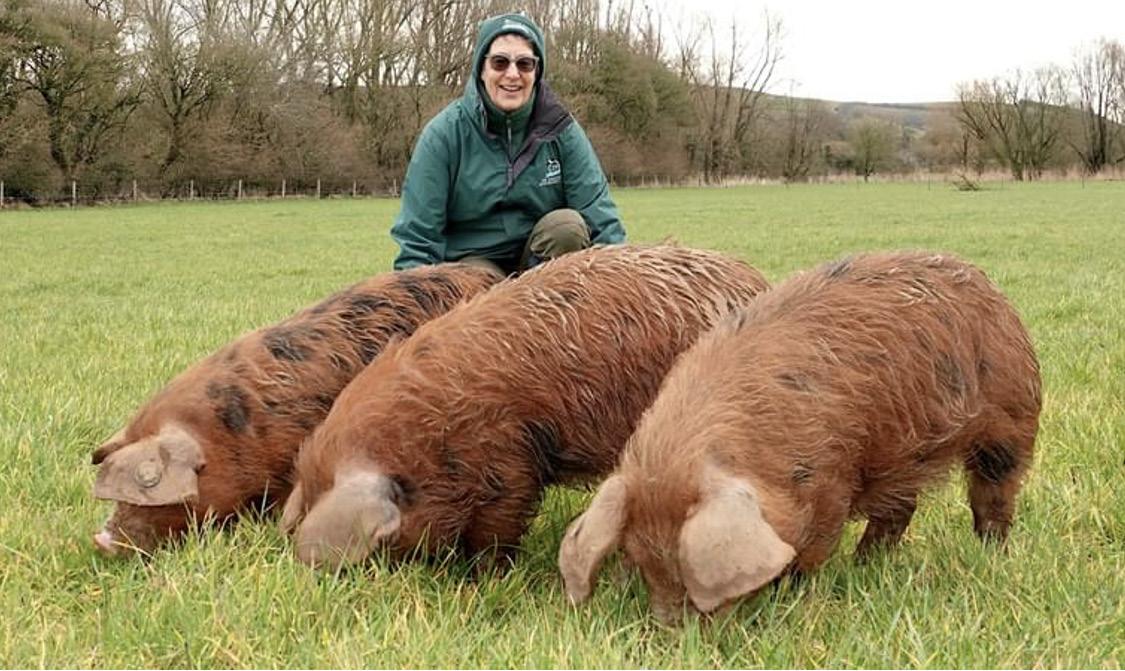
Rare breed pigs have been enlisted for conservation duties at Bere Marsh Farm as volunteers vie to be a part of Operation Pig Watch
After a lifelong career presenting music to the nation, writer and radio presenter Natalie Wheen found it a challenge choosing just eight discs
For more than 30 years, Natalie Wheen was an ever-present voice on our radios, with weekly shows ranging from presenting classical music on BBC Radio 3 (Mainly for Pleasure, In Tune, introducing concerts, Proms, operas and documentaries), and a broad selection of Radio 4 shows from the arts review Kaleidoscope to The Food Programme, not to mention a wide range of subjects on the BBC World Service. She also did the occasional TV – the opening of the new opera house at Glyndebourne and Cardiff Singer of the World.
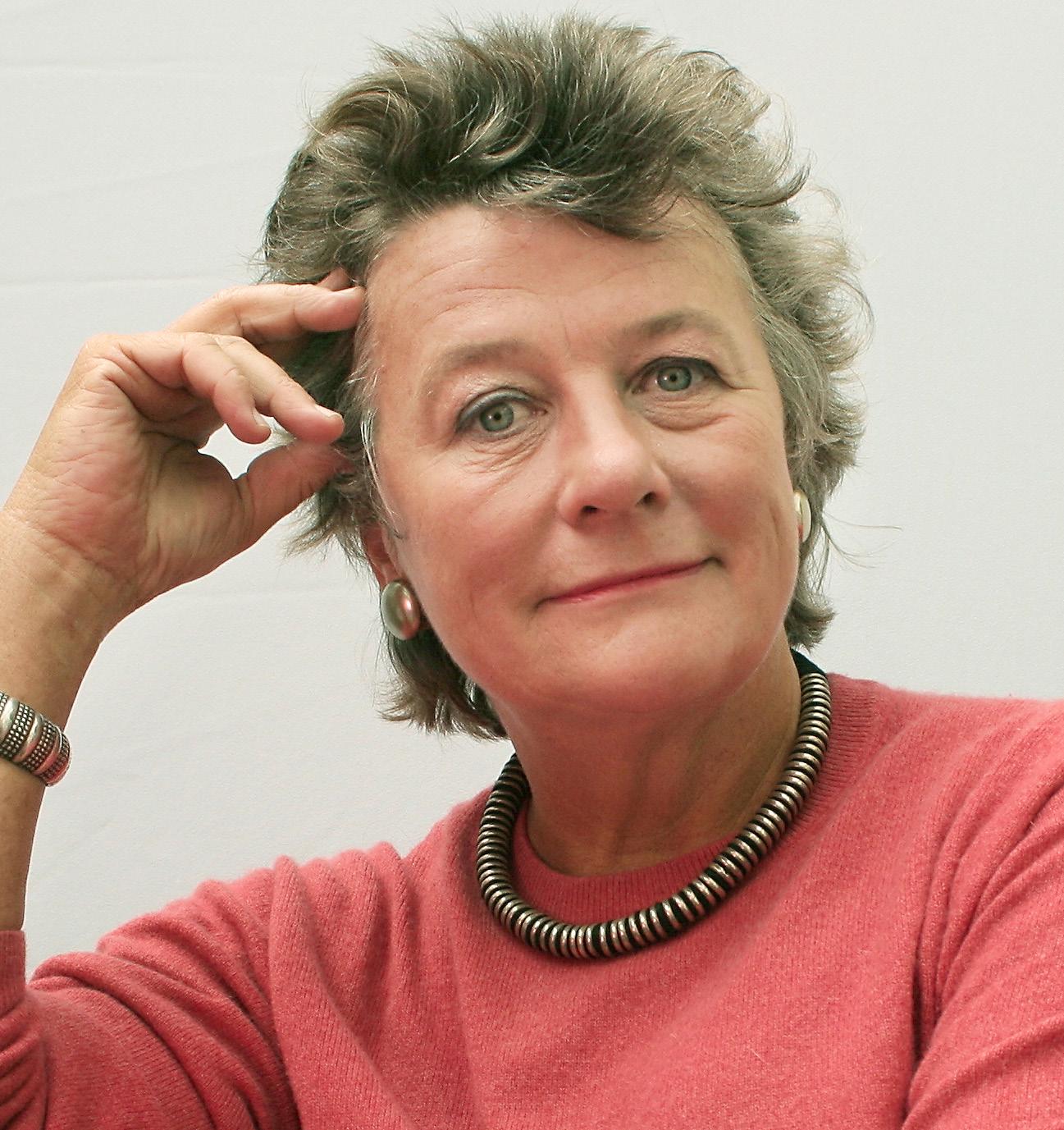
Natalie was born in Shanghai, as were her father and grandfather, but in the turmoil of post-war revolutionary China they were evacuated in 1951 to Hong Kong, moving to England in 1957.
Natalie, a student of violin and piano at the Royal College of Music, ‘hated practising.’ After her music degree at London University, she joined the BBC, working first as a radio studio manager, then producer and finally as a presenter.
Moving from the BBC to Classic FM in 1999, she was engaged as the ’shock jock’, charged with ‘spicing up the repertoire’ – which she did for four hours a week for more than ten years.
And then she disappeared from our radios.
As BV readers know, she has been busy producing olive oil under her brand name Avlaki (The BV, Nov 22) – and, most recently, has moved to Dorset in order to get ‘far from the madding crowd’, as she says. She has said that her life now is a music-free zone, but when we heard that she is currently sorting out her vast CD collection we thought she might be tempted to share some of her favourites ...

‘It is alarming to consider the amount of music I must have listened to in the course of building my radio programmes, which I always did for myself.
‘I mean, how can one properly engage a listener if one hasn’t really connected with the piece in question? And I knew that most of the producers that worked on Mainly for Pleasure, for example, had tastes and interests that were far, far removed from what engaged me!
‘In the sorting process, I have gradually built a large stack of composers and their music that will definitely be going; I might do something real harm if I have to hear another note ...
‘But, the clear-out has also reminded me of such wonderful riches – actually, sorting out eight favourites has been very trying!
‘However, it became clear to me that my choices are of music,
composers and performers who have broken through my natural resistance and will stay in the collection. Those who stopped me in my tracks, metaphorically grabbed me by the scruff of my neck and said ‘listen!’ –because they have something extraordinary to communicate.
And so to Natalie’s eight music choices, in no particular order, along with how and why they have stuck in her life:
Monteverdi: Vespers of 1610


John Eliot Gardiner, Monteverdi Choir and English Baroque Soloists
I’ll start with the Proms in 1968, and a performance of Claudio Monteverdi’s Vespers of 1610. The anticipation around this particular concert was palpable. John Eliot Gardiner had already electrified with it in his Cambridge student performance. As far as I was concerned, Monteverdi was a history book name – but John Eliot, we understood, had brought drama, virtuosity – even ecstasy – into a very religious work which was written for the extraordinarily varied spaces of the Basilica of San Marco in Venice, where groups of singers and musicians could be set up in balconies and spaces all over the church –literally throwing the music from one group to another. The shock at the Proms was that John Eliot and his Monteverdi
forces were using the Albert Hall spaces as much as possible to convey this antiphonal working of the music – throwing blocks of sound, then coming together with great drama. The Proms had never been so dramatically different. It was changed by it. And the music itself ... I had never heard anything so exciting. I’ve never forgotten it.

Michael Tippett: Concerto for Double String Orchestra. Daniel Harding and the LSO I was never very interested in performers just talking about their next record/concert tour/festival dates. It was the complicated characters who fascinated me: particularly the composers. Nor was I much interested in the grand old names – I remember presenting a festival of Mozart. Was there anything interesting left to say about Mozart after all those concert programmes, PhD theses, record sleeves? At the time, there
was a fascinating book trying to uncover the true revolutionary Mozart (of which you get hints in an opera like The Marriage of Figaro) but the organisers didn’t want to risk their image of the great genius being tainted. I thought it made him much more interesting – but there you go. The 28th and 29th May 1962 were two extraordinary days for British music, marking the consecration of the re-built Coventry Cathedral after the war. Britten’s War Requiem premiered in the cathedral itself, and the day before, Michael Tippett’s second opera King Priam was premiered. I heard the broadcast of both, but was utterly shocked by Priam. It was a brave, bleak, taut piece that makes one think of the futility and stupidity of war. I was knocked out – troubled even. Britten’s War Requiem was too sweet, too predictable after the stark directness of Tippett’s music and his subject matter. I was transfixed by this person and began drinking in the music he wrote, learning as much as I could about him. I had the great privilege of interviewing him so many times – not least for his 90th birthday celebrations. He was a complicated man and his music isn’t always easy. He had a questing, curious mind and a boisterous energy.
In this piece we see the dancing, bouncing Tippett, where the music explodes over the bar line and the phrases grow

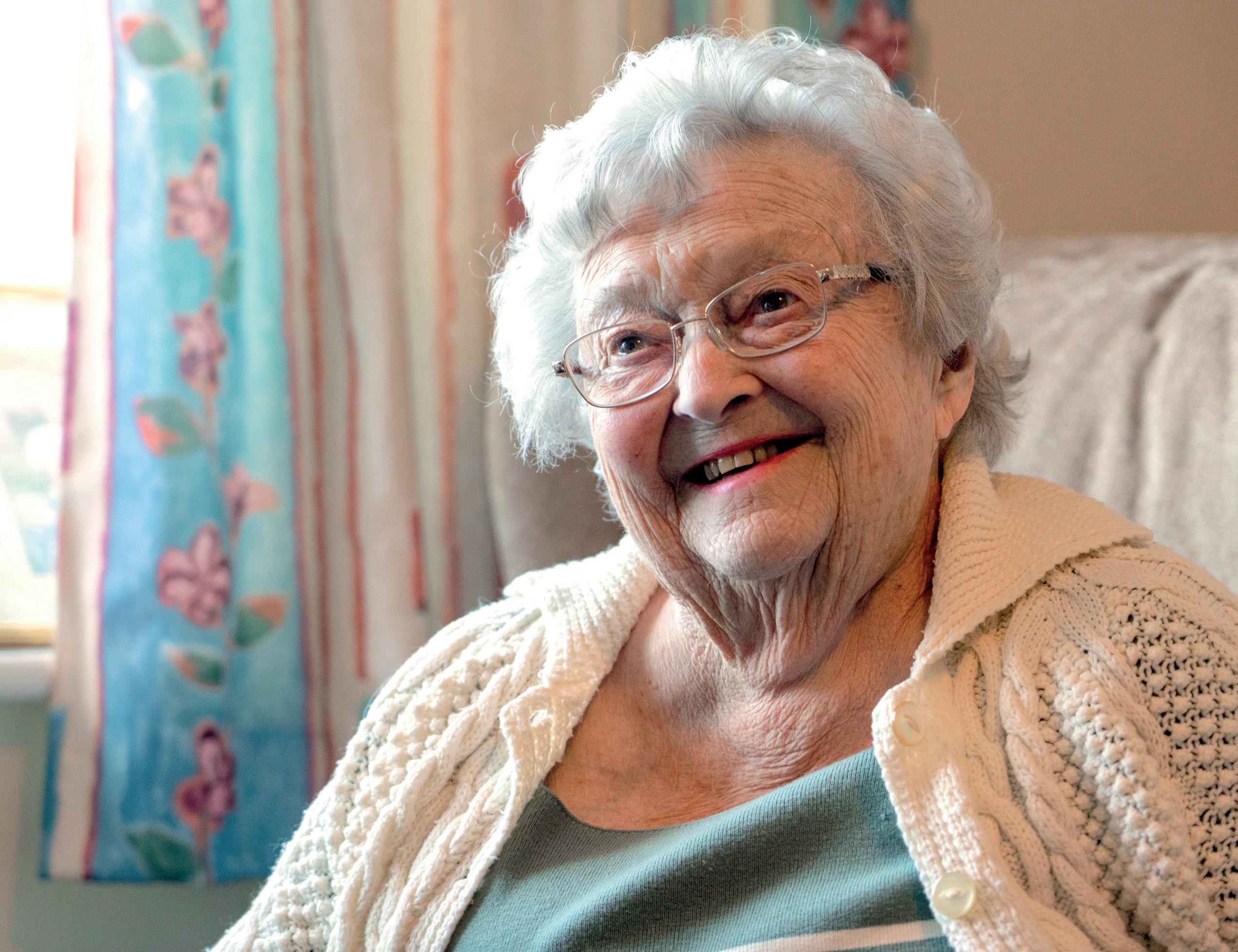



exuberantly, breaking all the rules. Then it’s surprising Tippet, who suddenly bursts into a wonderful tune. And then in the slow movement he creates a hushed world of mystery.


Chopin: Nocturne No. 13 in C minor, op.48 no 1
Claudio Arrau: Philips
Until I was nine, we lived abroad; I had never heard a symphonic concert, or an opera, or any chamber music. The only music we got was from B or C grade pianists, on their world tour of your hundred best tunes. So when we got to London I was taken to endless Proms – all the Beethovens, Brahmses and Tchaikovskys you could shake a proverbial stick at. But solo pianists somehow got pushed to the back burner. Was their sound too small or same or – with all the note-shovellers who were around – just boring? And then I heard Claudio Arrau. From Chilé, a child prodigy who was sent to study in Berlin with a student of Liszt when he was nine, he had to fend for himself when his teacher died, had a breakdown, picked himself up ... And understood, as a result, that he had to make music that had something to say. If the moment wasn’t right, if he didn’t feel right, if there was something wrong with the piano, he wouldn’t play. He wouldn’t dream of shortchanging the audience. He was the most elegant gentleman: very self-effacing,

exquisite manners, nothing flash. I’d long been devoted to his music when I was sent to do one of those quick superficial Radio 4 interviews. But we had rather a good time and he asked me to come back for a longer chat. He made one brilliant comment, which has always stuck with me. He said: ‘There are two essentials for any performer. The first is to have therapy – how can you perform another person’s music, if you have no idea who you are yourself as a person? And the second essential is to learn how to dance – to move to the rhythm in the music. If you can’t do that, you can’t make music.’
I have selected Claudio Arrau with a Chopin Nocturne. Listen to the bass – it’s the foundation to the whole structure. It’s absolutely rock solid and it propels the music, moving inexorably, it also allows a freedom to the embroidery of notes at the top, rather as a dancer can create all kinds of elaborations to the given tune,

but remains grounded to the beat from the bass. And then the piece lets rip, and you can hear the elegant Chiléan gent has a fiery passion – and of course all the notes you need.
Tchaikovsky: Serenade for String Orchestra in C major op 48. Movt II – Waltz. Bavarian Radio SO, Sir Colin Davis. More rhythm now – one man waltzing with an entire orchestra. Actually it’s a kind of Come Dancing, scooping and diving … you can see a pair of dancers leaning so far off the centre you think they’re going to fall ... But this is the Bavarian Radio Symphony Orchestra with Colin Davis conducting ...
I once asked Colin how he got the orchestra to waltz with him like that: ‘Oh’ he said, ‘A little jogging with Igor’ (Stravinsky that is).
Colin Davis was a rather quiet, mumbling, enigmatic man –hugely attractive because he was so reticent. He never beat the drum for himself, and had a horrible time at the beginning of his career from sniping critics. He was music director of Sadlers Wells, then the BBC Symphony Orchestra, the Royal Opera House – and then left all that behind for Bavaria. Where, he said, they were actually interested in making music. Finally he became the grand old man of British music when he came back to London and took over the LSO.
Colin Davis has been part of

my musical life for 60 years. I remember a school trip to hear concert performances of Berlioz by the Chelsea Opera Group in Oxford Town Hall. The conductor was a young Colin Davis – I was seriously smitten ...
Richard Strauss: Die Rosenkavalier Act III Trio. Elisabeth Schwarzkopf, Christa Ludwig, Teresa Stich-Randall. Philharmonia Orchestra with Herbert von Karajan
I arrived at the Royal College of Music, ostensibly as a violin student. I wasn’t any good, but I was very lucky in my professor who was the leader of the orchestra at the Royal Opera House. We did a deal: he ticked me off his register and instead of teaching me he gave me rehearsal passes and stayed in the pub for an extra pint. So I spent endless hours at Covent Garden watching some extraordinary singers and amazing productions – and got the opera bug very badly. There are three opera composers who I have been mulling over, trying to decide who should come to my island: Janacek, Puccini and Richard Strauss. And it’s Strauss who wins for now – not least because of the cast in this recording of Die Rosenkavalier, which was marshalled together by a legend of the gramophone industry, Walter Legge (his casting and
recording legacy is said to keep EMI in business still!).
I can’t do without the final trio from Rosenkavalier: Elisabeth Schwarzkopf as the Marschallin – weary of her marriage and absent husband – with a young Christa Ludwig as Octavian, her ardent young lover. There is a bittersweet ensemble of goodbye, good luck and sadness. And a wonderful orchestral sound from the Philharmonia Orchestra, conducted by Herbert von Karajan.

Francis Poulenc: Concerto for two pianos. Lucas and Arthur Jussen pianos, Concertgebouw Orchestra, Stéphane Denève Time for a little dazzle! I love Francis Poulenc because he is so mercurial: light and shade, sun and shadow, laughter and tears all together. He has a kaleidoscope of colours and atmospheres. He will let rip – as
at the start of his Concerto for two pianos – and then pull the carpet out from underneath you to tumble into another emotion. He’s also very naughty, hinting at a touch of Mozart, cutting it off with a bit of raucous music-hall ... And (the essential element in any programme I built) he is naughty, jokey and irreverent – all aspects which were not terribly acceptable on BBC Radio 3 in my time!
The dazzle here is in a pair of pianists who I’ve only just encountered as I looked online to find recording information. They are Dutch brothers, Lucas and Arthur Jussen, and they dazzle indeed. They’ve been playing the Poulenc concerto since their early teens.

Eartha Kitt was really the only non-classical voice in my head for a very long time, and that’s because she was a favourite of my father. The last weekend I spent with him before he died, we watched Eartha’s show coming live – I think – from the London Hippodrome. She was brought on stage rolled up in a carpet which then unrolled, propelling her right to the front of the stage; and there she was, filling the TV in her close- up. I thought Father was going to have a heart attack he was so thrilled! He died just a few days later. Eartha Kitt was amazing to see
live – I saw her at the Carlyle Hotel in New York, famous for its supper club. I think she was in her 70s, dressed in a figurehugging silk number, and she spent the show seducing the chaps in the audience. She had amazing vitality and charm and of course fabulous songs. I was on air at Classic FM, live on Christmas Day in 2008, when we heard that Eartha had died. There was really only one tune I could play for her – and did.
Vaughan Wiliams: The Lark Ascending. Nigel Kennedy, CBSO, Simon Rattle

My father always said that when he retired he would leave London and go to the country, to a farm in Cornwall. But he never made it, dying in harness in his early fifties.
I suppose Dorset is only half way to Cornwall – but I’m certain the country bug was a gift from my father. Landscape, green, trees, fresh air, big skies, winds and weather ... they are all essential to my wellbeing. And so I must have the quintessential piece of music for the English landscape: and a performance which is more than simply getting the notes right –there must be a fiendish control of the bow. Nigel Kennedy has a rare instinct for understanding what those notes are about. He shares his singing of the bird’s song, but also the George
Meredith poem which inspired Vaughn Williams. He breathes the music out of the big hush of the wider world.
The Silk Roads: A New History of the World by Peter Frankopan. It takes the focus of history away from the western world, back to the centre somewhere in the Middle East. There is a map which puts Jerusalem in the centre of the world. It’s a book celebrating the great civilisations and legendary figures that a western view of history completely ignores. I loved travelling to such places before they became closed by war and religion. I never got to Samarkand, but Eastern Turkey, Iran, Afghanistan, Isfahan, Shiraz, Persepolis ... I was haunted by Tamberlaine and Ghenghis Khan. Frankopan’s book is a huge read and will not only entrance and educate, but also take me back to places which were once so intriguing and essential to me.

J&B Rare whisky. In my house, the ‘hour of charm’ at 6pm–ish is the moment to pour a good slug of whisky and review the day. I take it with a dash of soda, but since there won’t be any soda washed up with the bottles, J&B is such a smooth and elegant blend that it also slips down nicely neat. I say bottles,
because I’m minded of Compton Mackenzie’s Whisky Galore when a shipwreck of scotch washed up on the shores of a remote island. I’m hoping that in my personal Dorset castaway situation, the wrecked ship will gently release case upon case of the nectar to float ashore ... I wouldn’t expect to be rescued, and I’m too old to contemplate finding a way to escape, so the daily shot of J&B will be the perfect way to contemplate the sunset.
One to keep?

And if a giant wave was coming, and there was only time to snatch one record, which would Natalie save from the water?
‘The Lark Ascending. For all the resonances of England, as well as the bittersweet knowledge that skylarks are a dwindling presence thanks to industrial farming practices. Also that Vaughan Williams composed another elegy in it for the generation who were lost in the First World War. So as well as marvelling at the music of it – it’s also fabulous for a good old crying session.’
Countess Carnarvon, the chatelaine of Highclere Castle, will be giving a talk at the Exchange in Sturminster Newton this month about her latest book, The Earl and The Pharaoh. The Castle is, of course, the location for the ever-popular Downton Abbey TV series, and was the home of the fifth Earl of Carnarvon, famous for the discovery of the tomb of the young Pharaoh, Tutankhamun.

Lady Carnarvon’s book is a biography of the explorer, who died from blood poisoning after being bitten by a mosquito, not long after the opening of King Tut’s tomb. She has been able to write the inside story on the fifth Earl, thanks to the family archive housed in Highclere Castle.
‘No-one’s ever written a book about him,’ she says.
‘It seemed to me so extraordinary. It’s been like a wonderful treasure trail – reading his handwriting in the diaries … I hugely enjoyed putting it all together and building his character, it was absolutely fascinating.
‘I very much hope I got to know the man. He was partly an invalid for much of his life. In 1909 he was in a near-fatal car accident, from which he never really fully recovered. But he also had asthma – and he smoked!
Yet that never stopped him. He truly was not at all well, but he refused to give in to it. He had been working in Egypt before the car accident and it nearly kyboshed his return, but he did make it back. He had really found his passion in Egyptology and archaeology.
‘Above all, his life was marked by many small acts of kindness. Those have stayed with me.
‘For some biographies you have all the pieces of the puzzle and it’s simply a case of constructing
the outside edge, then filling in the middle pieces. With this book, I had the feeling that I had a bag of pieces and had to painstakingly pull them together without knowing what the final picture looked like! I had no box image, no straight edges … it was such a journey of discovery.
‘I often found mis-filed letters, un-dated diaries, intriguing notes ... they all added greater meaning, but I had to find where they fitted.’
I’m fascinated by the idea of an archive at Highclere. Is there a grand subterranean vault dedicated to these documents?

‘No, there’s an archive room on the top floor, and there’s two muniments rooms on a stone staircase. Then there’s another archive room with more recent archives along another corridor. I’ve recently created a new room, which I love. It’s coloured the yellow of Egyptian sand and sunlight and warmth – NOT like where I am at the moment! In there I‘ve begun to gather together the archive of everything relating to the fifth Earl and Egyptology. It’s really exciting to bring things together in an organised manner instead of wondering which box something might be in, then – having put it back – forgetting where I put it. Which is rather the story of my life!’
So by now, does Lady Carnarvon know the archive extremely well?
Open Mornings
Nursery & Pre-Prep:


Wednesday 3rd May 2023
Wednesday 7th June 2023
Prep School:




Saturday 13th May 2023
Saturday 10th June 2023
BOARDERS WITHOUT LIMITS | FULL | WEEKLY | FLEXI | DAY
‘No! Not at all! I honestly find it mesmerising in its immensity. I will never ever be able to get through it all. Sometimes I feel quite upset as I think I’ve missed something – and I have. Other times I can be excited when I discover something. I can never spend enough time there.
‘Writing a book is an intense experience, and I become totally wrapped up – I’m not good company and probably not a brilliant wife! As I write I’m ONLY reading around the subject, my head is constantly turning round the latest paragraph. As a writer I try and bring people with me; across the Nile in a brightly coloured boat, or getting on a donkey to go to the Valley of the Kings. I’m trying to bring the colour and experience of history, as well as the facts.
‘Being tucked away in the archives means I’m not distracted by interruptions. If someone makes it up all three flights of stairs, they really must need to speak to me. My husband doesn’t bother! He’s very patient. He’s also very passionate about the fifth Earl. The discovery of the tomb was the first truly global media event. It’s such a legacy. And without the fifth Earl, Tutankhamun may not have been discovered.’
Has he been given enough credit for the discovery?
‘He’s been given no credit at all. He’s normally written off as the financier. Part of this book is trying to give him a larger place in history. He wasn’t recognised by anyone in this country for what he achieved. He was a humble, modest man, and then he died at the hour of his triumph, at just 56. What a legacy he left us.
‘I hope, to a small extent, I have completed Lord
grass courts, going for walks and I took my son down there when he was little to look for fossils.
2. The last film you watched? In the cinema? It was the latest Mission Impossible, which was great fun.
3. It’s Friday night – you have the house to yourself, and no work is allowed. What are you going to do? Have a long bath with a book.
Carnarvon’s wish; he intended to write about his discoveries, but died not long after the discovery of the tomb. His book would have been full of more colour than mine, full of everyday credit to those around him, far more than I was able to include. It would have been a different book, but I hope I’m part way to telling the story of an extraordinary man and his extraordinary discovery.’

And so to the 19 random questions...
1. What’s your relationship with Dorset? It is a beautiful county of cliffs, fossils, sea and hidden valleys. Growing up I remember a number of summer holidays playing tennis on
4. What was the last song you sang out loud in your car?
It always seems to be ABBA!
5. What would you like to tell 15 year-old you? Just to try your best.
6. Tell us about a sound or a smell that makes you happy?
Always roses and birdsong
7. The best crisps flavour? Popcorn!
(I mean, that’s cheating, but I’ll allow it - Ed)
‘I find it mesmerising in its immensity. I will never ever be able to get through it all’
8. What’s you’re secret superpower?
I really don’t think I have one?!
9. What would you like to be remembered for? Being kind.
10. What shop can you not pass by? A bookshop with coffee inside. Who can resist?
11. Chip shop chips or homebaked cake??
Homemade cake, every time, thank you!
12. Tell us about one of the best evenings you’ve had? Burns Night at Highclere – a night just filled with friends and dancing and laughter.
13. Your favourite quote? Impossible to answer. I don’t have a single quote – I have
many quotes and many poems. I refuse to pick just one!
14. Your most annoying trait? I work too much!
15. What was the last gift you either gave, or received? I don’t actually remember – I love to do it, I am always giving little presents.
16. Your top three mostvisited websites (excluding news and social media)? I really only use the web for work or news - it’s not a very exciting answer is it?
17. What in life is frankly a mystery to you? Coincidence.
18. You have the power to pass one law, uncontested. What will you do with it? Sorry, I’m going to choose not
to answer this one – there are just too many laws that need reform for me to narrow it down to one.
19. Cats or dogs? Dogs!
Lady Carnarvon will be appearing on the afternoon of Friday 28th April, at The Exchange at Sturminster Newton, sharing stories from her research for the book The Earl and The Pharaoh. Copies of the book will be on sale at the event with the opportunity for signing.
Tickets from £10 here
• You can listen to Jennie’s full interview with Lady Carnarvon in the podcast later this month.
As thoughts turn to warmer weather and cooking outdoors, Traeger – the BBQ brand that is passionate about grilling, is looking forward to bringing people together to create wonderfully flavourful moments this Spring. As the inventor of the wood pellet grill, Traeger uses sustainable 100% natural hardwood pellets to fuel your cooking and infuse every dish you make with deliciously flavourful smoke.
Because cooking on a Traeger is so easy, anyone can master the art of great BBQ-ing, and the easy-to-use controls will give you a confidenceboosting cooking experience at the touch of a button. You can even control your cooking from your smartphone, using WIFI, so you can set the temperature and forget it for a while, while you concentrate on having fun with your friends and family.
Brand new to the Traeger range are two premium grills – the Timberline and Ironwood, creating the ultimate combination of consistency, convenience, and versatility. Traeger redefines what a grill can do, bringing friends and family together to make cooking outdoors an absolute fuss-free joy.

The new Timberline and Timberline XL retail at £3,699.99 and £3,399.99.
The new Ironwood and Ironwood XL retail at £1,299.99 and £1,999.99.
To find your nearest platinum dealer, visit traeger.com/uk/en/dealers
Many column inches have already been written about Honeysuckle and her triumphant return to the Cheltenham Festival in mid-March; Doug and I bred her here at The Glanvilles Stud, so please forgive me an indulgent recap for readers.


Having won an unprecedented 16 races in a row since her debut Irish point-to-point win in April 2018 – including 12 Grade One victories and more than £1m in prize money – Honeysuckle started this season owing nothing to anyone.
As had been customary in previous years, Honeysuckle’s first run was to be in the Grade One Hatton’s Grace Hurdle at Fairyhouse in Ireland, having a crack at her fourth win in this particular race.
Sadly though, Honeysuckle’s crown slipped. She was beaten into a close third on the line;
and followed it up in February coming second in the Grade One Irish Champion Hurdle at Leopardstown. Age appeared to be finally catching up with the nineyear-old mare, and I for one was wishing that Honeysuckle’s connections had retired her at the end of the previous season.
I feared that, having been lauded as the Queen of National Hunt racing with her unblemished record, she might now just quietly slip away into Kenneth Alexander’s broodmare band, having lost her crown.
To Cheltenham March dawned and Honeysuckle was declared to run in the Grade One Close Brothers Mares’
Hurdle at the Cheltenham Festival – which she had previously won in 2020. Despite a stellar field of other mares, including the two-year younger Love Envoi, trained by Dorset’s own Harry Fry – who had last year won the Grade Two Cheltenham Mares’ Novices’ Hurdle, it was anyone’s guess which mare might return victorious. The betting public held faith in Honeysuckle, however, as her starting price showed in a 9/4 joint favourite with the winner of the 2022 race, Marie’s Rock. What a race it was!
Honeysuckle rewarded her fans handsomely. She strode into Cheltenham like a champion. She settled in her stable, she ate up, she cantered in the morning, and
Though The Glanvilles Stud is teeming with foals, March could only belong to Doug and Lucy Procter’s most famous mare
I for one was wishing that Honeysuckle’s connections had retired herTime to head inside for tea and bed ... All images: Courtenay Hitchcock
Sambac, Seemarye’s gorgeous Nathaniel filly and Courtenay’s No.1 favourite foal


before the big race she marched around the parade ring with the supreme confidence of a victor who had come home.
From the off, Honeysuckle quickly settled into a customary second place, sitting behind Love Envoi whom she tracked throughout until she was asked to quicken going into the home straight. She responded to the urging of her jockey, Rachel Blackmore, and, in a battle royal up the run-in, she got her nose in front on the line.
Racing commentators have dubbed this as the best mares’ race ever run. Coming back from two defeats, Honeysuckle crossed the line with every bit of her heart firmly intact, ears pricked and showing all her old grit and determination to win. She would not be denied victory, Rachel would not be denied victory, and they returned to a hero’s welcome. Standing in the parade ring, Doug and I could track her progress from the course by the cheering from the crowds even when she was still the other side of the grandstand. As she approached the winner’s enclosure the crowd let out a triumphant and deafening roar, in a reception that brought tears to our eyes.
Honeysuckle’s story does not end here. As she retires from the racecourse, her breeding journey is just beginning. With connections suggesting a cover by the stallion Walk in The Park in the offing, all in racing are looking forward to seeing the arrival of the first Honeysuckle foal next spring.
Meanwhile, in Dorset ...
Back here at the stud, the three mares that were imminent in last month’s column duly foaled on the Friday, Saturday and Sunday, just before Cheltenham Festival, enabling Doug and I to enjoy two days’ racing with both of us having had a full night’s sleep! With another two mares foaling

at the end of the month, we now have lots of new foals on the ground – and it was with great delight that The BV’s own photographer supreme Courtenay bolted out to the stud a few days prior to publication, to indulge himself in a few foal cuddles. It’s an obvious hardship he endures in order to photograph the latest arrivals. Tough work if you can get it!
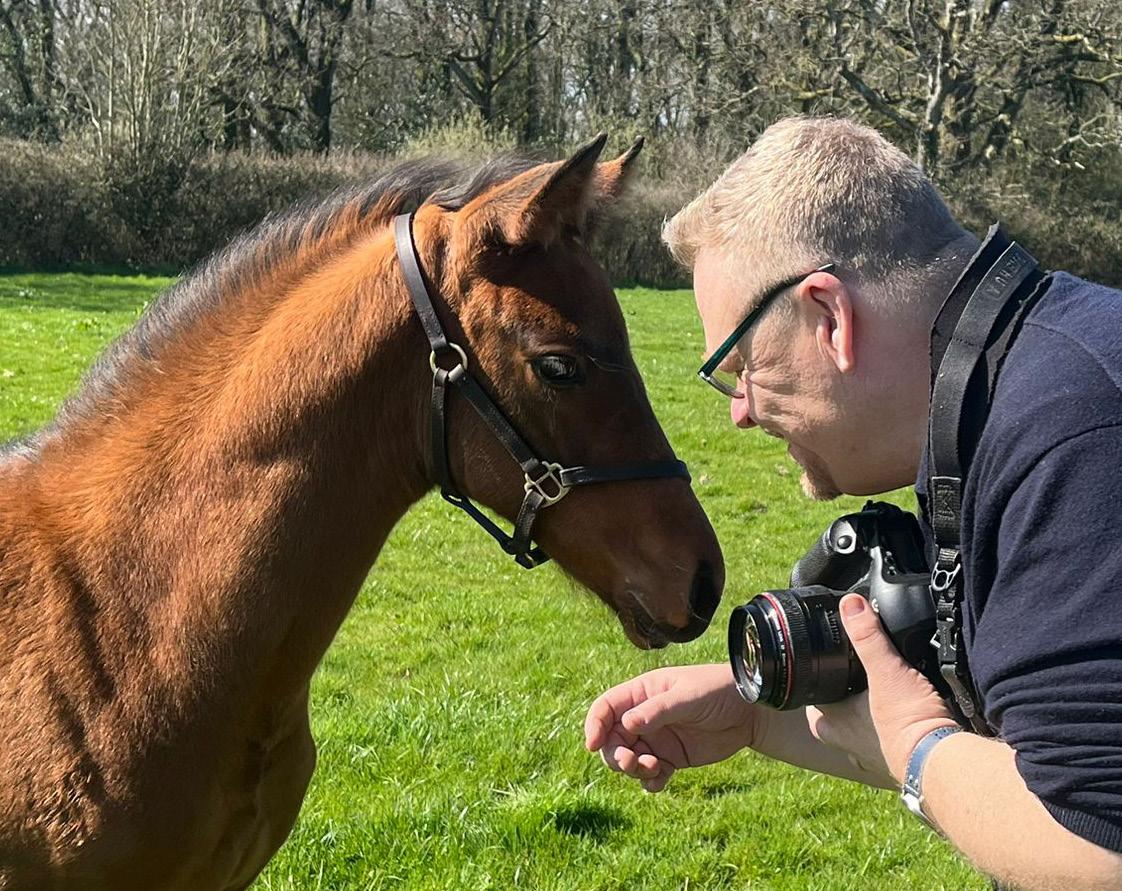

For all who have followed her, Honeysuckle’s story ended in a fairy tale, but it was especially poignant for her connections for whom the 2022/23 season had started so tragically. Honeysuckle’s trainer, Henry de Bromhead, lost his beloved young son Jack in a pony racing accident in the summer. The racing world had rallied closely round the family and, in the end, buoyed up by the support, triumph won over adversity.
From a breeder’s perspective, Honeysuckle’s story is as good as it gets. Although we are hoping more Grade One winners will follow in coming seasons, it is unlikely that there will ever be another Honeysuckle from this or any stud anytime soon.


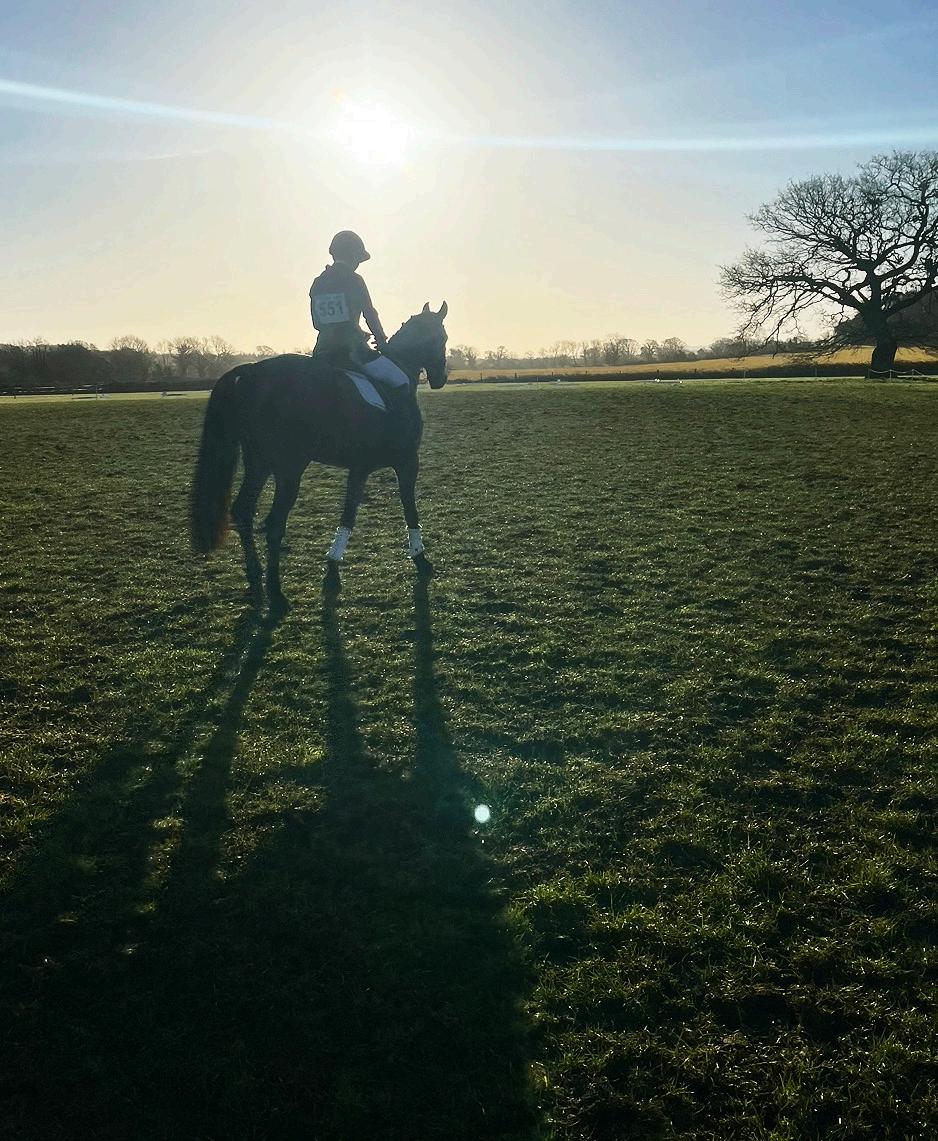
March turned out to be the almost month! After a madly busy few weeks trying to get the horses out training, competing at British Dressage and British Showjumping all while preparing them for the upcoming season, the whole team was ready (and determined) to take on the first event of the season at Cirencester Park. The horses were washed and glowing. The lorry had received its full pre-season clean and was fully packed. Excitement was through the roof. But then we received a last minute text from British Eventing to say the event was cancelled due to the rain.
So very disappointing – albeit expected with the weather we had been working through!
Anyway, we are keeping everything crossed that we will finally be out Eventing in the early weeks of April. Although we’re currently in the last week of March and might soon need to start begging the skies to stop raining!
The Cirencester cancellation did mean that we got to take four horses to a British Showjumping event at Dorset Showground however, which resulted in great results and many clear rounds.
Although I didn’t make it out Eventing in March, I was lucky to get the opportunity to try my hand at competition grooming at Moreton BE. I worked two
days, helping and supporting three different riders from William Fox-Pitt’s yard – including two jockeys who were competing in their first British event after moving from their home countries.
I thoroughly enjoyed it and was amazed at just how different the roles of rider and groom are. A groom has a completely different focus, and in some cases has to multi-task at a far quicker pace! I personally found it incredibly interesting to watch how each individual rider dealt with their nerves and how that affected their horses. I could pick up on small details which might indicate some anxiety or pressure that they were feeling and hopefully was able to help channel their emotions to allow for optimal performance.
I felt much more nervous watching them in the cross country then I would as a jockey myself. As a groom I was completely useless and had no control over the outcome once they left the start box. The biggest joy of all was seeing the rider’s faces as they crossed the line – they all did amazingly well. I felt a real sense of achievement and pride in being able to help such talented and grateful riders.
I totally recommend it to all my fellow eventers – swap your competition boots for wellies for the day and try grooming instead of riding. I have huge respect for all grooms; without them we really wouldn’t have a sport!

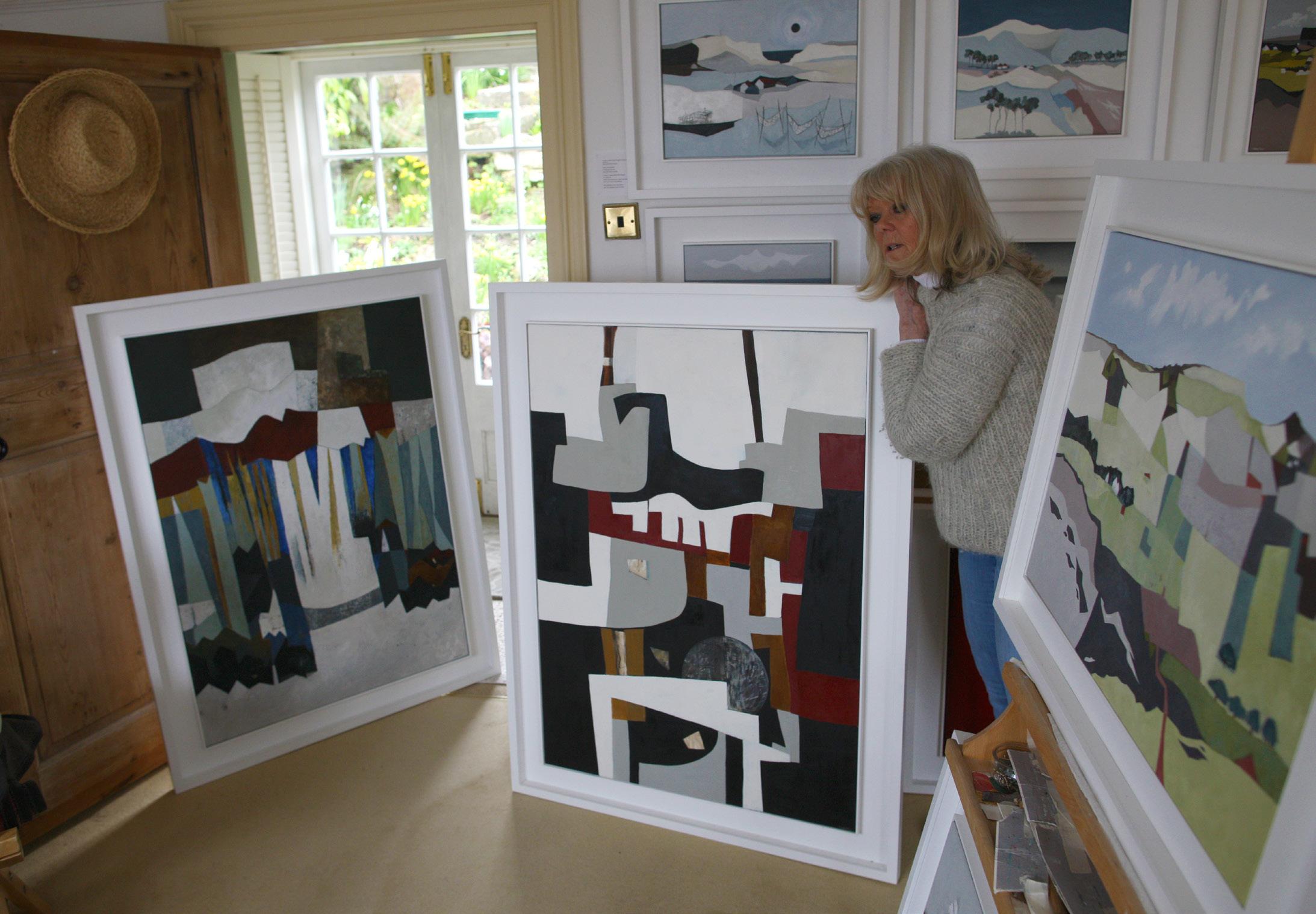
In the peace and solitude of her Weymouth studio, alongside her beautiful Weimaraner dog Logan and with Radio 6 for company, Teresa Lawton is in her happy place. Here she paints the coast and the surrounding landscape. ‘It is a meditative process which absorbs me entirely,’ she says. Born in Dorset, Teresa spent most of the 1970s in London before travelling in Greece and Argentina. She also spent a great deal of time in Cornwall through her developing years as a painter. The mid-20th century St Ives artists have always been a great inspiration in her work and, as an Associate Member of the St Ives-based Penwith Gallery, she has remained true
to that influence. Painting from the age of five, she always wanted to go to art school but was prevented by both an
unsettled early life and the fact that ‘it was not considered a career at the time’. She was, she says ‘a bit of a rolling stone’ and


‘I need absolute peace in order to do this job. I walk the dog and I paint and that’s a peaceful life for me. Total commitment to my work.’
it was not until her son started school that she completed a BA (Hons) Fine Arts degree at Winchester School of Art. However, as a mature student she was able to gain a different perspective on her art, and had the time to develop more of a practical, business-minded approach.
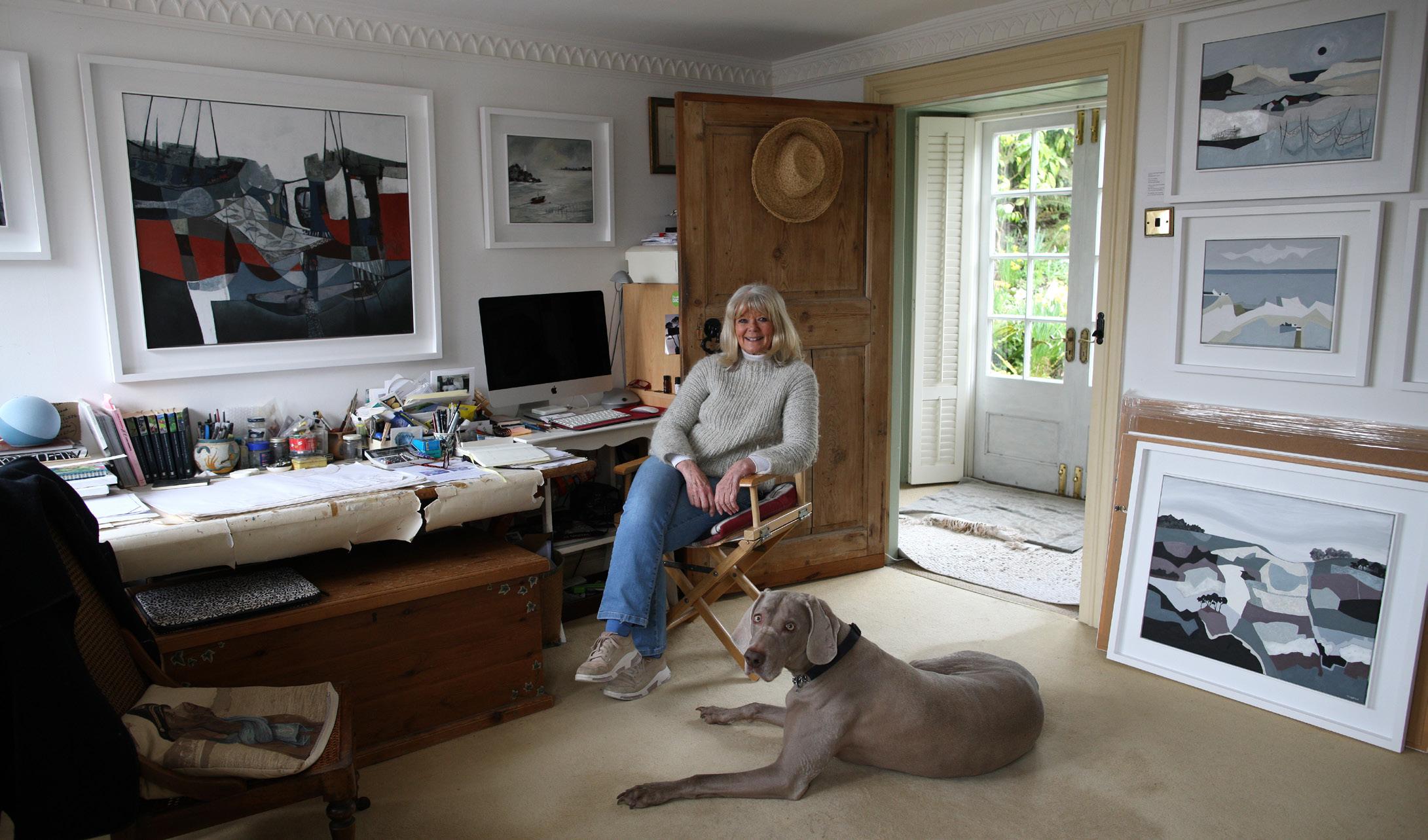
After graduating, Teresa moved to a remote studio near Corfe Castle, right at the edge of Poole Harbour looking out onto Round Island. This idyllic cottage was her home for ten years before she relocated to Weymouth. ‘I loved living in Corfe, really out in the wilds, but I ended up doing more gardening than painting!’ The Dorset coast and surrounding countryside remain an important influence on her work but a slightly different style is emerging since the move. The farmed hilly landscape around Weymouth, with its patchwork of fields, is a change from the Corfe heathland. There are fewer distractions. Teresa says: ‘I like solitude. I don’t have a problem with it. I’m a bit obsessive about my work. I like to walk on
my own in the woods and on the hills, getting “far from the madding crowds”. I don’t tend to sketch or photograph. I’m always just soaking up the landscape around me. I need absolute peace in order to do this job. I walk the dog and I paint and that’s a peaceful life for me. Total commitment to my work. I view the coast from up on the hills. Every day is different here
- the skyline falls into the sea, forming a space between heaven and earth. The Dorset coastline fills my work.’


Teresa does not give the impression of being a quiet and reclusive person – but she is, without doubt, dedicated, singleminded and disciplined with regard to her painting.
Teresa successfully exhibits in London and Cornwall as well
S p e c i a l i s t s i n S t o r a g e , T r a n s p o r t , I n s t a l l a t i o n , C o n s e r v a t i o n a n d R e s a l e
> S h o r t a n d l o n g - t e r m s t o r a g e s o l u t i o n s w h e t h e r y o u a r e m o v i n g h o u s e , r e n o v a t i n g o r j u s t n e e d t o s t o r e y o u r c o l l e c t i o n

> P e r s o n a l i s e d s p a c e t a i l o r e d t o y o u r n e e d s , f r o m g e n e r a l a r t s t o r a g e f o r c r a t e d a r t w o r k t o b e s p o k e a r t r a c k i n g s e r v i c e s i n a c l i m a t e c o n t r o l l e d r o o m a t c o m p e t i t i v e r a t e s
> W e o f f e r a f u l l a r t i n s t a l l a t i o n a n d d e - i n s t a l l a t i o n s e r v i c e f o r g a l l e r i e s a n d p r i v a t e c l i e n t s
> I f y o u a r e a r e s e l l e r o r a r t i s t l o o k i n g f o r o r d e r c o m p l e t i o n s e r v i c e s i n c l u d i n g p a c k i n g a n d s h i p p i n g

F o r f u r t h e r i n f o r m a t i o n i n c l u d i n g c o n s e r v a t i o n , r e s a l e a n d q u o t e p l e a s e c o n t a c t u s : i n f o @ m w a r t s e r v i c e s . c o m




as Dorset. The ordered studio stacked with paintings ready for a solo exhibition at The Gallery on the Square in Poundbury reflects her discipline: ‘I don’t like working in chaos. To make a living as a painter is no easy thing but I’ve managed to do it. I’m always busy. I paint every day if I can.’
’I need to take the viewer on a journey with my paintings. I want to convey the bliss of being out in the middle of nowhere.’ Colour is no doubt important to Teresa and the influence of the Cornish artists of St Ives is evident. ‘It’s about the landscape. Describing it in a more emotional way. It resonates with me. When I started visiting Cornwall it opened a door for me. ‘I draw straight onto the canvas. I like the immediacy of
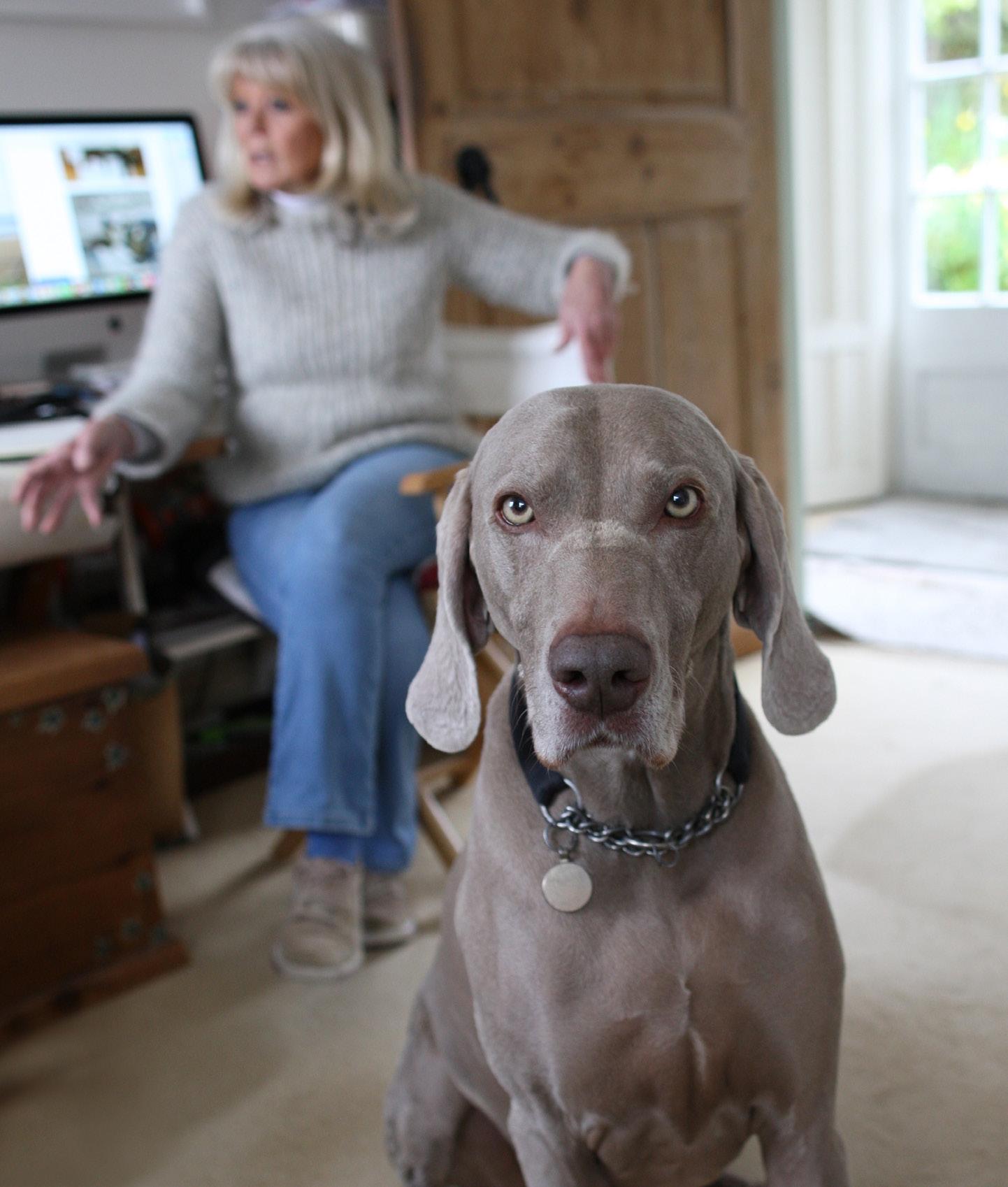
painting – too much sketching is restricting for me.’ Her muted palette of greys and ochres has changed somewhat with the
season and some hints of green have entered on occasion, as evident in The Ridgeway (image next page, bottom).
Teresa found that she walked further into the hills during the lockdown and her style began to subtly change. Abstract shapes and forms are still there but now little buildings might appear in the landscape: ‘A tree or a shadow might inspire me … I like to play with the shapes. It becomes instinctive,’ she says.
Quarryland (previous page) is Teresa’s version of the Isle of Portland: ‘I embellish with my own ideas. The paintings are not an exact replication of the view, otherwise it might become clichéd. I am trying to record an immediate, personal moment – to convey what is fresh in my mind. I focus on constructing areas of space and clean lines interrupted by colour.’
On The Rocks (above) is a wonderfully strong, harmonious image showing fish escaping from storm-damaged nets in Weymouth harbour. Teresa’s application of the oil paint is

carefully considered. ‘The abstraction gives me a certain freedom, as the layers may show through. I don’t always know where the painting will go, to begin with. The layering can make the painting more interesting, creating a balance with shapes in tones and colours. I scrape back with a palette knife, scratching into the paint. I’m drawing as I go along – in essence, it is simplification through abstraction.’
Teresa may work on a number of canvases at any one time which may change and alter over the days: ‘Beyond all the technical skills of constructing a painting which is about knowing your craft, there lies a magic which is inexplicable. Those are the things that can’t be taught; they are about immersing yourself in your own world and imagination, which is instinctive.’

Teresa’s solo exhibition runs at the Gallery on the Square, Poundbury from 2fifth March to 29th April 2023. teresalawtonart.weebly.com



We welcome photography submissions from readers - the only rule is that they must have been taken locally in the last month. Our cover shot is usually selected from our submissions pile. If you’d like to join in, please share it in The BV community Facebook Group or simply email it to us here

 Jackie
Jackie
to shout
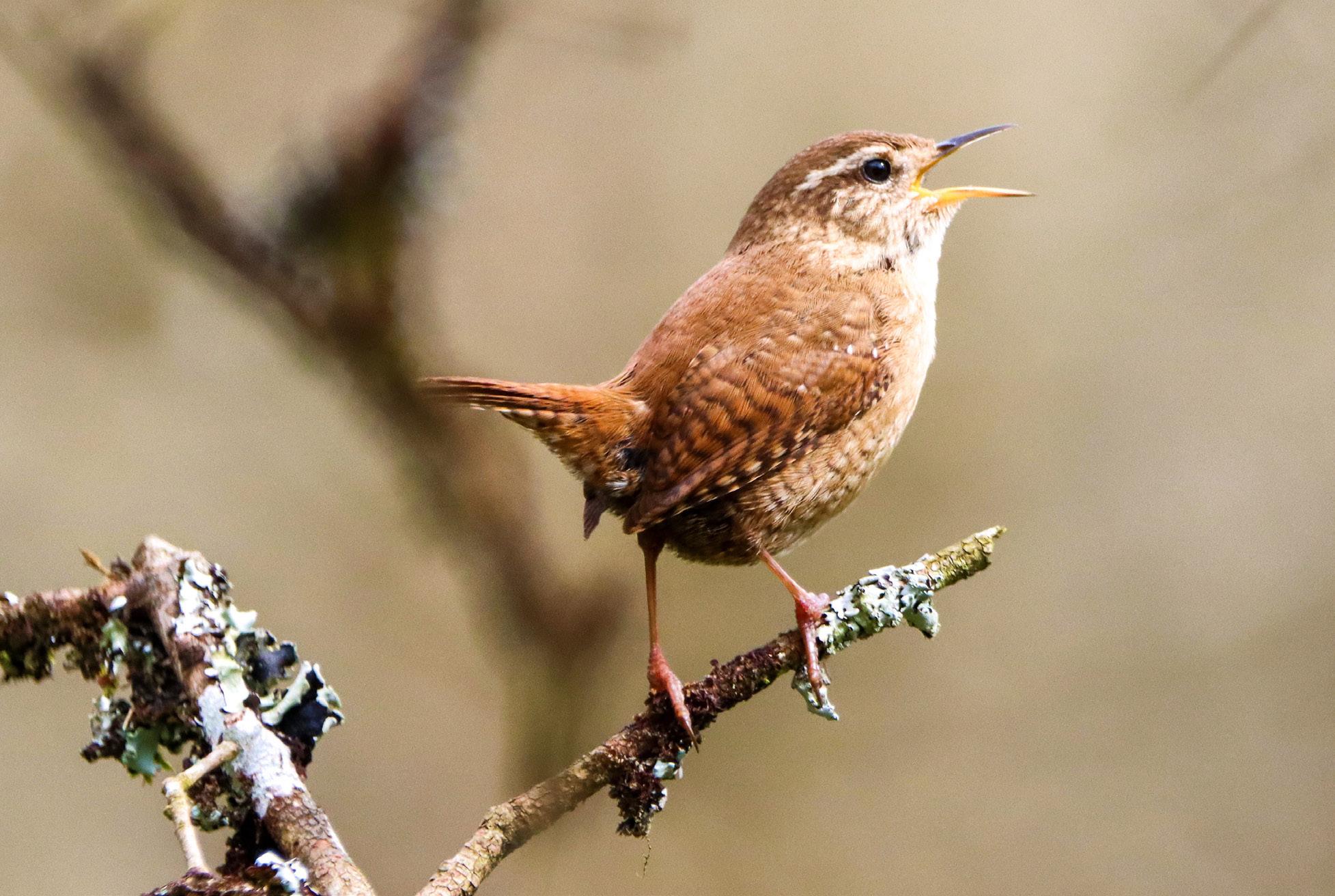
 Blustery Day Kate Fry
Blustery Day Kate Fry
It used to be more comfortable ...

 Firecrest Leslie Lawrens
Firecrest Leslie Lawrens
Snail and the giant grape (hyacinth)

Tracy Whincup
Splashing
Sharon Towning
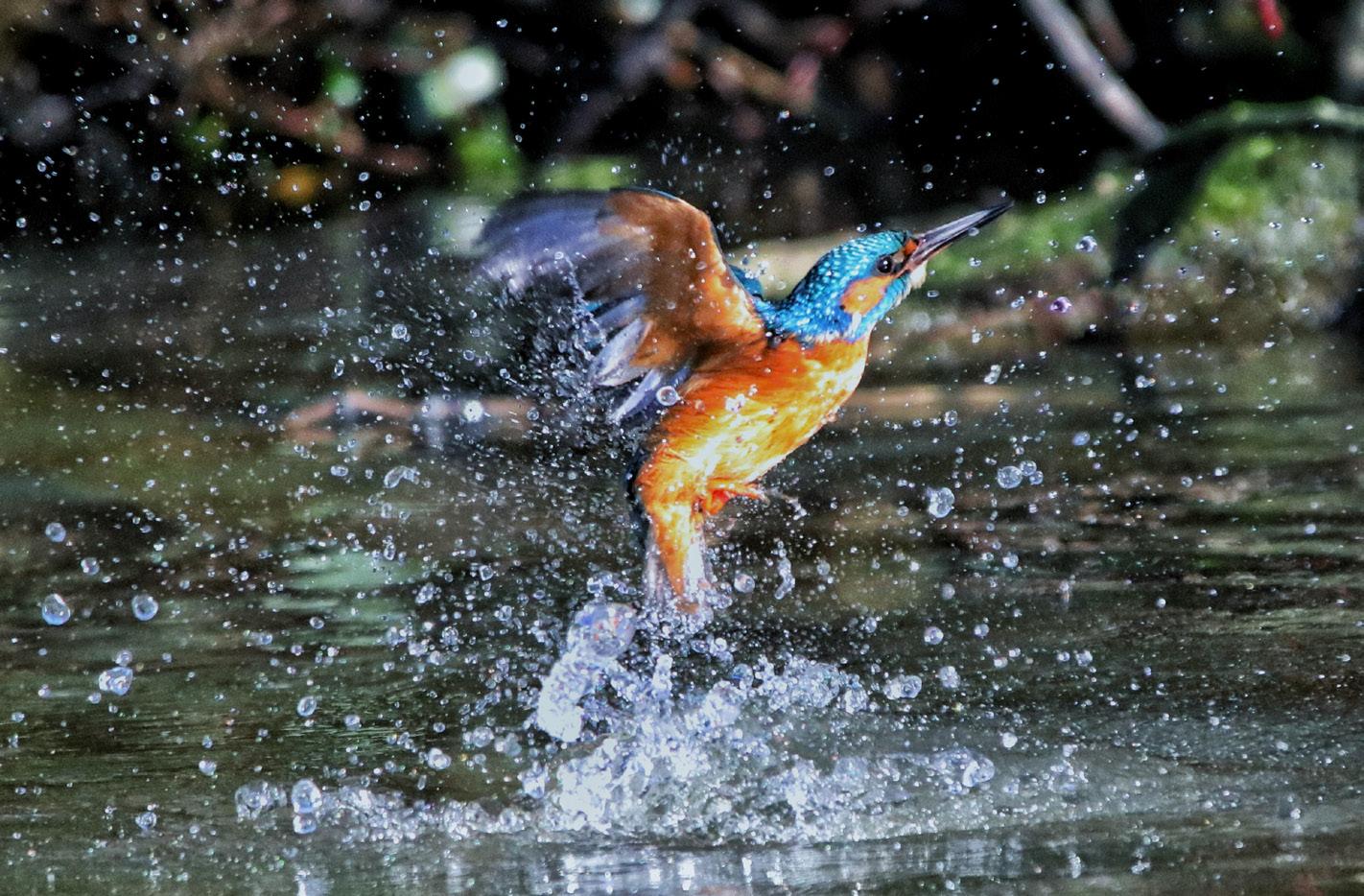

Well, its official, it was the wettest March we’ve seen since 1981. Which means it’s the wettest March I’ve ever seen!
I don’t think myself or any of my fellow Astrophotographers managed to collect any images last month, and we were all extremely grumpy because of it! We live in hope of some cloudless and moonless nights in April to reinvigorate us and to try and capture some data as the days grow longer and the nights grow shorter. The worst thing about the bad weather, is we all tend to get bored and go and buy more equipment to make ourselves feel better! Never a good thing!
My image this month is one I shot back in February, and turned out to be my last nebula shot of winter as we are now giving way to galaxy season again.
A large emission nebula stretching across almost 2.5 degrees of the night sky, the California Nebula (NGC1499) is in the constellation Perseus. It is so
named because its shape is reminiscent of the outline of the US state of California on a map. The Nebula stretches about 100 light years across. Despite its huge size and visual magnitude of 6.0, the nebula is still very difficult to observe visually because it has a low surface brightness. However, when photographed using Narrowband filters which pick up hydrogen, sulphur II and oxygen lll emission bands, details come alive on this massive structure. I’m always in awe when zooming in around the high resolution version of this image to see all the different shapes that create this truly stellar nebula.
It was discovered by American astronomer Edward Emerson Barnard – renowned for his catalogue of dark nebulae and his pioneering work in astrophotography – in 1884. This image was captured with my 1000mm Maksutov Newtonian Telescope and the ZWO ASI2600MM Pro Astro camera with Narrowband filters and is about 8 hours of data.
Now that the spring equinox has come and gone, we start to see the nights get shorter; always a sombre time for astronomers! Thankfully though, there’s still plenty of astronomical darkness in April to keep us entertained, clouds permitting!
Since the clocks went forward, there’s more chance that we’ll be back home from work and settled as night falls, so now is a really good time to take a look at our three nearest neighbours ton view in the evening sky; Mercury, Venus and Mars.
It’s a really good time to try to observe Mercury, which never strays far from our sun and follows a very tight oval-shaped orbit, completing one year in just 88 Earth days.
Imagine having to go through Christmas dinner and all the trimmings every 88 days!
The fight for the title of brightest object in the night sky this month includes stars from several constellations. Regulus in the constellation Leo, Spica in Virgo and the unmistakable orange glow of Arcturus in Boötes.
One of the prominent constellations this month is Virgo, with its Y-shaped appearance, it’s the second largest constellation in the night sky. The glory of Virgo , so named because the pattern traditionally represents a victorious maiden holding an ear corn, lies in the ‘bowl’ of the Y shape. If you scan the upper
region with a small telescope at a low magnification, you’ll find this part of the constellation packed with faint, fuzzy blobs. These are just a few of the 2,000 galaxies that make up the gigantic Virgo cluster.
Dates to remember
Events to make a note of this month include observing our local neighbourhood, starting on the 11th as brilliant Venus is positioned left of the Pleiades.
Wake up early on the 16th to catch Saturn above the crescent Moon before dawn.
We’ve got an excellent chance of observing the Lyrid Meteor shower this year on the night of the 22nd to 23rd of April. This is because the Moon isn’t in the way to obscure the display, so it’s definitely one to watch if the clouds oblige!
The Lyrids appear to emanate from Lyra – a small constellation named to represent the lyre of Orpheus in the northern sky –as we pass through debris from Comet Thatcher. On the 23rd, look towards the crescent moon at twilight and you’ll see Venus, hanging like a pendulum below the clock face of the Moon. Finally, on the 25th, you’ll be able to observe Mars close to the Moon, next to stars Castor and Pollux. Until next time, clear skies!
Like all astrophotographers, the March skies meant that Rob Nolan had an impossible month – but he did capture a stunning nebula in February
WE have grown used to changing arrangements at short notice, but Gordon Amery from Gillingham Methodist Church (GMC) thought he was safe in planning a concert on Saturday 6th May 2023. Then along came the Coronation. So the scheduled performance of Elgar’s sublime choral work The Dream of Gerontius, with a 50-strong choir and international concert organist David Briggs playing the Sweetland organ and taking the place of the orchestra, will now be given on Sunday 7th. There will also be three well-known soloists, including tenor John Graham-Hall singing the role of Gerontius.
The concert is particularly poignant as the church, where Gordon has run the very successful Music at GMC programme for many years, will be closing its doors sometime during the next year. This will be the final concert, and the most ambitious event, in its history.
The Dream of Gerontius is generally acknowledged as one of the greatest pieces for chorus and orchestra ever written, and it has long been Gordon’s dream to hear it performed in Gillingham. David Briggs last came to GMC in 2019 for a performance of Louis Vierne’s Messe Solennelle, and it was during that visit that he and Gordon agreed that it would be amazing to perform The Dream with the same choir. Plans were drawn up during the latter part of that year and a performance was pencilled in for 2020. But, like so many other events, it was postponed by the pandemic. Since then it has been an uphill struggle to get the organist, the choir and the soloists free at the same time.
























‘But I have finally managed to do it! says Gordon,
Dorset Wildlife Trust have plenty of activities for you to get involved with this April. Join them at their visitor centres at Chesil beach, Brownsea Island, Kimmeridge Bay and Kingcombe or at Lorton Meadows nature reserve to experience the best of Dorset’s wildlife.

Easter has never been so ‘eggciting’, with something for everyone to enjoy – you’ll be
CONCERT ORGANIST DAVID BRIGGS & THE ROMSEY SINGERS & FRIENDS
Conductor: Philip Lawson
Mezzo-Soprano: Susanna Spicer
Tenor: John Graham-Hall
Bass: William Drakett
Gillingham Methodist Church (SP8 4AG)
7.30pm, Sunday 7th May
who is keen to fill the church for the celebration of Music at GMC.
‘Sunday 7th May is the big day! I am sure that this will be a very special and spiritual (not to mention emotional) evening,’ he says.
For more information, visit Music at GMC , and tickets (£20) are available here.
spoilt for choice!
Highlights include Pond Dipping days on Brownsea (Sun 9 Apr), Stream Dipping at Kingcombe Visitor Centre (Tues 11 Apr), a children’s treasure trail looking
for clues to solve puzzles in the Chesil Challenge (Thurs 13 Apr) and a Willow Owl Workshop at Kingcombe (Sat 15 Apr).
See the DWT website for full details of all events.
THURS 20th April 2pm

Neil Sands and cast return with over 60 of your all-time favourite songs from the Fabulous 40’s, the Rocking 50’s and the Swinging 60’s and Sensational 70’s, along with best loved sing a longs, show tunes, and a flag waving patriotic finale !

FRI 21st April
The Daisy Bowlers are a quirky and fun vintage band performing songs from the Charleston to Jive with 3 part vocal harmony, ukulele, double bass and guitar. Cabaret style seating in The Atrium.
SAT 29th Apr
The only tribute show to be endorsed by the Cash family, fronted by multi-award winning singer, songwriter and producer Clive John this truly unmissable show is back for 2023 with ‘Through The Years’ tour, a new show celebrating the light and shade of Cash’s repertoire. With full band.
SAT 12th August 3pm
One of Wales’ most successful and popular male voice choirs. They say 'We sing a wide range of music, including classic rock, hits from the West End, pieces from famous operettas, and, of course, traditional Welsh hymns'


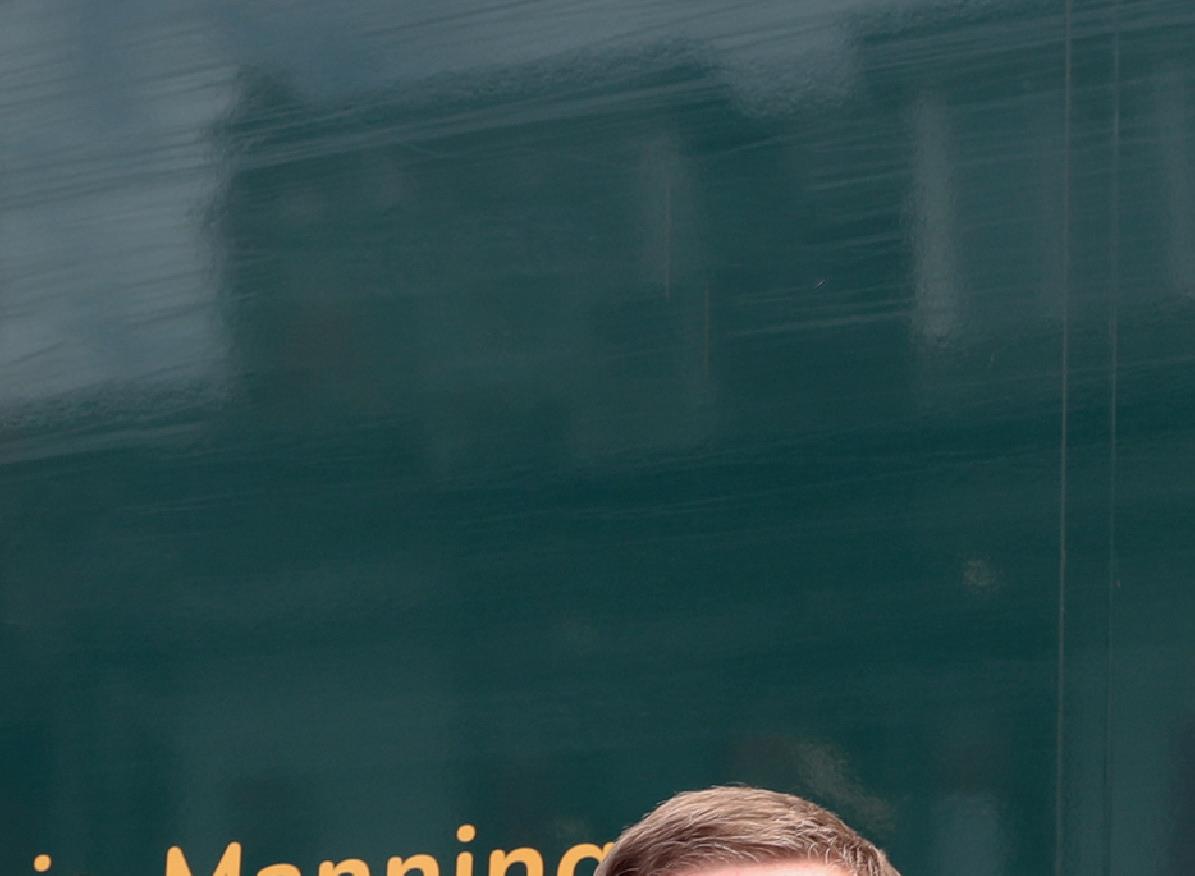











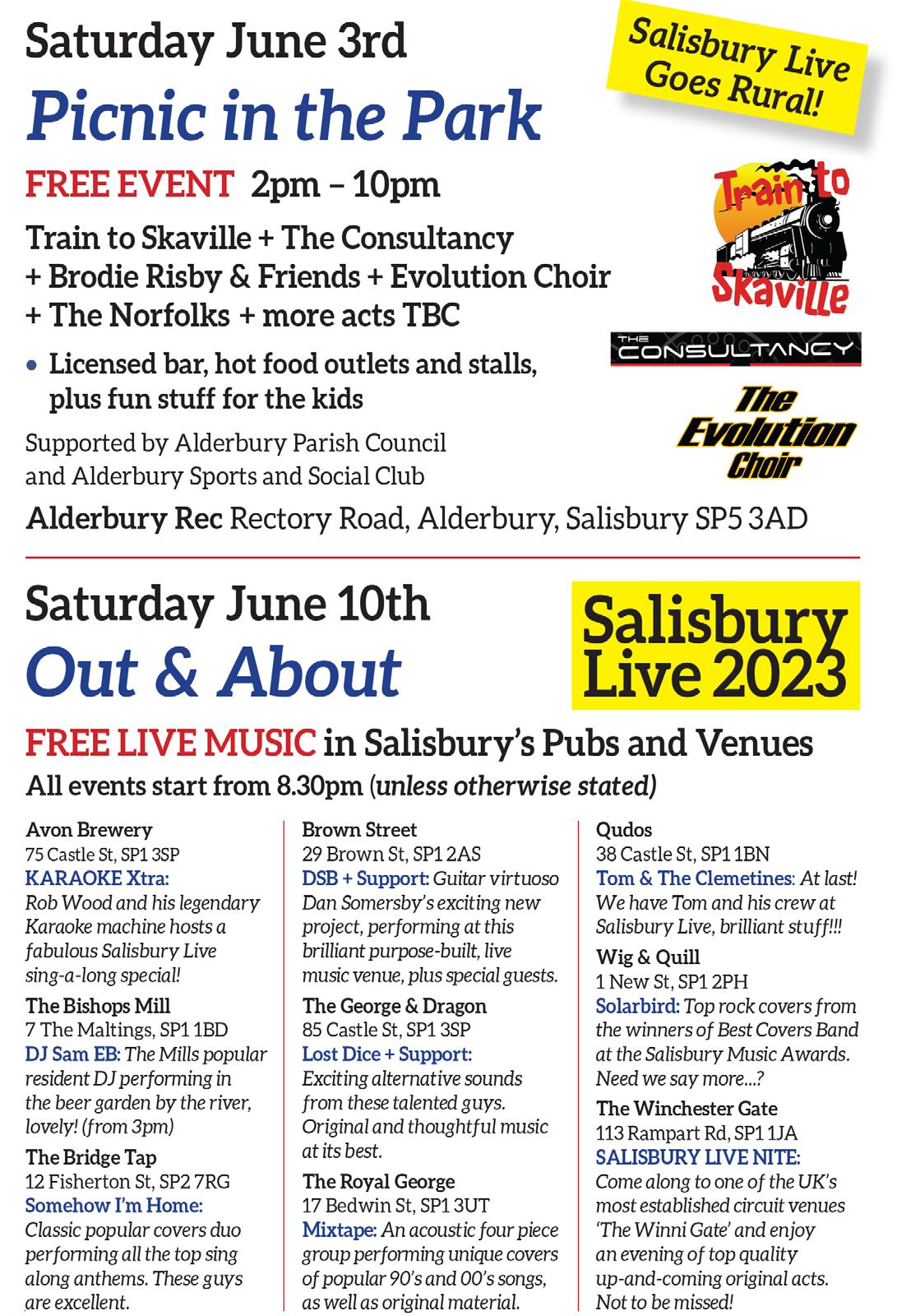

WHEN the former Kneehigh Theatre director Emma Rice –whose own Wise Children theatre is now based in Frome – took on the challenge of a stage adaptation of one of the bestloved films of all time, there were many who held their breath. What would the iconoclastic Rice do with this poignant wartime Noel Coward black-and-white classic, with its famous story of two married people who meet by chance and fall in love. In the event (and unsurprisingly to anyone who knew that first and foremost Rice is a story-teller), the stage version was a triumph, combining the poignancy of the love story with Kneehigh’s trademark anarchic musical fun. It enjoyed a sell-out run in the West End in 2008 and was revived in 2018.
Now, a new production is at Salisbury Playhouse, directed by Douglas Rintoul and starring Hanora Kamen as Laura Jesson and Jammy Kasongo as Dr Alec Harvey, with a stunningly multi-

talented ensemble of actorsinger-musicians who play all the other parts.
Beautifully lit by designer Jessie Addinall, the versatile set is a railway station, Laura’s home, a restaurant, Alec’s friend Steve’s flat and, most importantly, the station tearoom where Laura, with painful grit in one eye, first meets Alec, the doctor who carefully removes the fragment.
The chemistry between these two is palpable, and the development of the relationship is convincing.
Fanny CharlesBrief Encounter is at Salisbury Playhouse until 22nd April, and then goes on a short tour, including the New Wolsey Theatre in Ipswich and the Yvonne Armaud at Guildford.
The Sturminster Newton Literary Festival returns for its fourth year from 5th to 10th June with an expanded programme that now includes non-fiction events and covers the wider Wessex region. The festival offers a diverse range of topics, from Michael Langridge’s sequel to Tess of the D’Urbervilles to Chris Taylor’s experiences as a helicopter test pilot, and Jon Woolcott’s insights into Dorset’s history. Festival highlights include journalist Felice Hardy’s talk about her grandmother, an Austrian tennis champion who escaped the Nazis and played at Wimbledon, and West Dorsetbased author Brian Jackman’s discussion of how the natural

surroundings inspired him to write Wild About Dorset.
The festival also features local playwright Sue Ashby’s dramatic monologue From Sturminster Newton to The White House: the Fuller sisters in America, and local singers will be performing songs by the Fuller sisters. In addition to talks, the festival offers walks and tours of notable locations, such as Robert Young’s
Sturminster Newton and the Marnhull setting for Tess of the D’Urbervilles.
Festival committee chairman, Pauline Batstone says ‘I am delighted that we have such a full and wide ranging programme for our fourth year,’
Details of all events can be found on the Stur Litfest booking portal here






Alex Hutton, a countertenor from Somerset, is completing his undergraduate degree at the Guildhall School of Music and Drama in London before pursuing a Masters at the same institution. With interests in Early Music, Romantic Song, and mezzo-soprano repertoire, Alex has performed at various prestigious venues, including the Royal Albert Hall Promenade Concerts and Notre Dame. Collaborative pianist and singer Chavdar Mazgalov, who has performed at several prestigious venues himself, joins Alex for his first solo concert in West Camel. This promises to be an unforgettable musical experience for all in attendance.
The repertoire includes Handel’s Giulio Cesare in Egitto, Schubert’s Meeresstille, and Elgar’s Sea Pictures featuring In Haven and Sea Slumber Song. It also includes Hector Berlioz’s Sur Les Lagunes, Rebecca Clarke’s The Seal Man, and Cole Porter’s comedic The Tale of the Oyster. The program concludes with Benjamin Britten’s Tom Bowling, a folk song about the passing of a beloved crew member.

Tickets £10 on the door – tea, coffee and cake are included. All enquiries kirk.hutton@rocketmail.com
After a sold out tour of Europe with the band, Tom returns to his home town for a surprise one off gig with his new band Electric People.
Tom Waters, nominated for Young UK Blues Artist 2023, had an unconventional education growing up in Dorset. His parents were musicians who toured with well-known blues and jazz musicians such as Charlie Watts, Jools Holland, and Ronnie Wood. Tom and his sister would accompany their parents on tours during school holidays, soaking up the sights and sounds. Age five, Tom fell in love with music after hearing Willie Garnett and Don Weller play with his dad’s band, Rocket 88. He got his first saxophone shortly after and played with Charlie Watts’ band at a young age. In 2013, Charlie Watts secretly organized a saxophone lesson and gifted Tom a new saxophone.
Tom left conventional school to tour with his father and played with various bands worldwide. At 16, he was offered a place at the prestigious Purcell Schools of Music in London, where he met Jack Thomas. They played in many different bands together, including The Electric People, and later went to The Royal Academy of Music together.
Tom has an impressive CV, having recorded with The Rolling Stones and Sir Ray Davies, played in The Jools Holland Rhythm and Blues Orchestra, and played hundreds of sell-out shows worldwide.
For his homecoming show, Tom wants to celebrate the music he loves; Blues, Rock, Jazz, and an Electric show. He has also invited local friends to join him on stage.
Tom Waters Electric People at Dorchester Corn Exchange, 28th April 8 pm. Tickets (£22) and more info here

DORSET people have been travelling across the Atlantic for centuries – hoping to make a new life, practise their faith without persecution or seek employment away from a depressed and unhappy country. The strongest connection between our county and the “New World” is with Newfoundland, and this forms the basis of a new community play which will be staged in Poole this summer.
The play, Salt, has been written by Stephanie Dale, who has also written Spinning the Moon, the record-breaking seventh Dorchester community play, which is being staged at Thomas Hardye School theatre from 4th to 15th April.
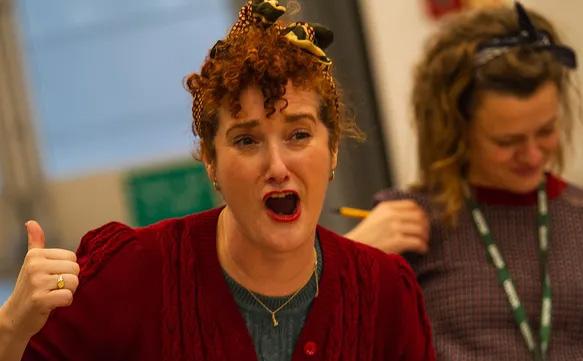
History will be made in more ways than one when Poole’s Lighthouse arts centre hosts Salt – not just a play that tells a key feature of Dorset’s social history, it will also be the town’s first community play, covering more than 300 years of our relationship with Newfoundland. Involving more than 100 local people, Salt will be staged from 27th to 30th July – there will be parts for actors, singers, musicians and dancers, as well as non-speaking background roles and volunteers needed to bring the show to life. Produced by Lighthouse and created by Dorset-based professional theatre company Angel Exit, Salt is set between 1681 and the present day. It shines a light on the Newfoundland trade that was at its height from the mid-17th century until the mid-19th century and saw sailors from Poole and the rest of Dorset bring salt cod from Newfoundland to the ports of
Spain, Portugal and Italy, and return with salt, olive oil and wine. By the end of the 17th century many Dorset families had settled in Newfoundland.
The play focuses on the first brave women who made the treacherous voyage to settle in a hostile land.
The themes of what it means to belong and what it means to leave your homeland are woven into a story with contemporary characters that overlaps with the historical narrative.
As well as actors and back-stage crew, there are many other roles for volunteers, say co-directors Lynne Forbes and Tamsin Fessey from Angel Exit: ‘We’ll need help with making costumes, sourcing props and building sets as well as everything from dressing, make up, hair and wardrobe, to driving, stewarding, or baking cakes for rehearsals – if you’ve got a skill there’ll be a place for it!’
Musical director – and Dorset folksong expert – Tim Laycock is recruiting a choir to learn some old Newfoundland songs and also contribute to making up a new one.
Tim is also involved with Spinning the Moon, which has a lot of music. It will be in safe hands with Tim, an outstanding Dorset folk singer, historian, actor and musician. As the play begins, Lord Trenchard returns home to find that his lands have been mismanaged by his steward and the family faces ruin. Fortunes rise and fall with the civil war bringing chaos to the local community. The characters include the family and their servants, some less than brotherly monks from Abbotsbury and a group of cunning women.
It’s been a rollercoaster for the company and the writer. Stephanie Dale says: ‘When we were shut down by the first lockdown we were all devastated and didn’t dare hope we would ever get the play to the stage. Seeing it come together as rehearsals progress is the best feeling in the world.’
To find out more about Salt, and how you can get involved,, email communityplay@ lighthousepoole.co.uk or call Community Play Co-ordinator, Holly, on 01202 781338.
Roger Guttridge reveals plans to provide a fitting memorial to a largely forgotten pioneer of press freedom and help for the poor
Thousands drive past every day, unaware that barely a stone’s throw from the A30 lie the remains of one of 18th century Dorset’s most influential figures. For reasons unknown, publisher, author and bookseller Robert Goadby and his wife Rachel chose to be buried not at Sherborne Abbey, with which they had close ties, but in unconsecrated ground a couple of miles away at Oborne. Robert certainly loved the spot, and is said to have walked there most days from his home in Long Street, Sherborne. He loved nature and admired the view from Oborne (which is now obscured by a railway embankment).
But his affection for the place doesn’t explain why, some time before his death at the age of 57 in 1778, Goadby acquired a burial plot not within
the churchyard that surrounds the ancient chancel at Oborne but on glebe land (an area of land within a parish used to support a parish priest) ten yards outside it. The chancel – protected by the Churches Conservation Trust (CCT) – is now the only surviving part of what was once St Cuthbert’s Church. For almost exactly 200 years, the Goadby plot was itself appropriately protected by an iron fence.
Inside the fence was an inscribed headstone praising nature as our link to God and describing a fir tree that originally grew out of the grave.
By the mid-20th century, the original fir had long since given way to a mature elm (image opposite, top).
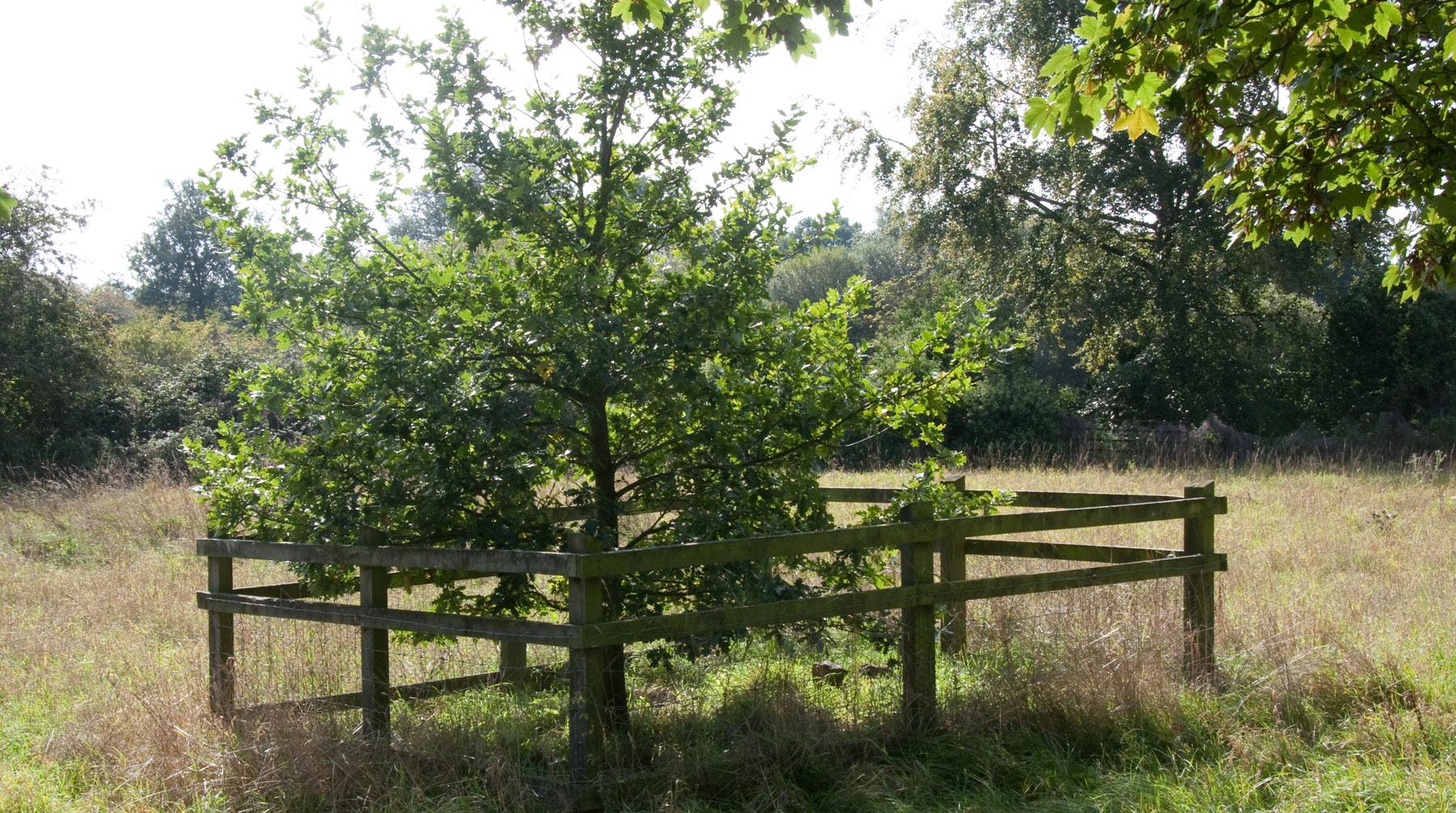
The elm eventually fell victim to Dutch elm disease, and when
tree surgeons arrived to fell it in 1977, they also removed the railings and most of the shattered memorial stone. A wooden fence has since replaced the railings and a young oak now grows on the spot once occupied by the fir and the elm. Only fragments of the memorial stone remain.
Fortunately, a group of heritage enthusiasts has been working to provide a fitting memorial to the Goadbys once again – although even this has proved more challenging than expected.
‘Our original plan was to erect a new gravestone to replace the one that was destroyed in 1977,’ group member Barbara Elsmore told me in 2019. To this end, a grant was obtained from the Simon Digby Trust, only for the group to learn that a new headstone was out of the question, as the site was on private land and there was no public access.
‘Few men have been more generally known in the West of England... and few have had more friends, or more enemies’
Instead, the group proposed to erect an information board on a pew in the chancel.

Four years – and lots of negotiations – later and the group has finally been given the go-ahead, not only for the noticeboard remembering Robert and Rachel but also the publication of a booklet featuring articles and other information about them.
Although born in London in 1720, by the age of 21 the go-getting Goadby was already running his own bookshop in Bath. In 1744 he moved to Yeovil and launched his first newspaper, the Western Flying Post and Yeovil Mercury. Five years later, he bought Dorset’s first newspaper, the Sherborne Mercury, moved his operation to Long Street and merged the two titles to become the Western Flying Post or Sherborne and Yeovil Mercury.
Goadby campaigned tirelessly for press freedom and was motivated by a desire to educate the public and help the poor. An inscription above the door of his Long Street printworks read: ‘The liberty of the Press and the liberty of the people fall together. Long may heaven avert it.’
The second edition of Hutchins’ History of Dorset, published in 1796, said of Goadby: ‘Few men
have been more generally known in the West of England than he was, and few have had more friends, or more enemies.
‘Truth was the object of his researches, in the pursuit of which he was indefatigable ... His knowledge was of course considerable, and he was well versed in several languages...The productions of his press were numerous; almost all of them of a moral or religious tendency.’
As well as newspapers, Goadby’s
many other publications included the long-running Book of Fairs and, in three volumes, The Family Library. He was heavily involved in civic life, serving as a warden of Sherborne Grammar School and also as a surveyor of the local highways.
He founded a subscription library in Cheap Street.
When he died, he left £200 to the poor people of Sherborne and £2 a year to the town’s vicars on condition that they preached an annual sermon ‘on the wisdom and goodness of God in creation’. It was still being preached 100 years later.
Rachel and Robert’s personal life was tinged with tragedy. Their only child, also Robert, died in 1756 aged seven and is buried in Sherborne Abbey.

Rachel died 12 years after her husband and was buried alongside him.
• Next month, Roger Guttridge will look at the fascinating history of Dorset’s first newspaper (which Goadby bought) and its early successors.
Each month local historian Barry Cuff shares a selection of rarely-before seen images from his unique archive (more on his collection here). This month Barry has picked Chapman & Son of Dawlish.


‘Chapman & Son of Dawlish in Devon photographed and published cards of just three seeminglyrandom Dorset towns: Lyme Regis, Wimborne and Sturminster Newton. I have been collecting since 1974 and have never seen cards by them of any other Dorset location.’
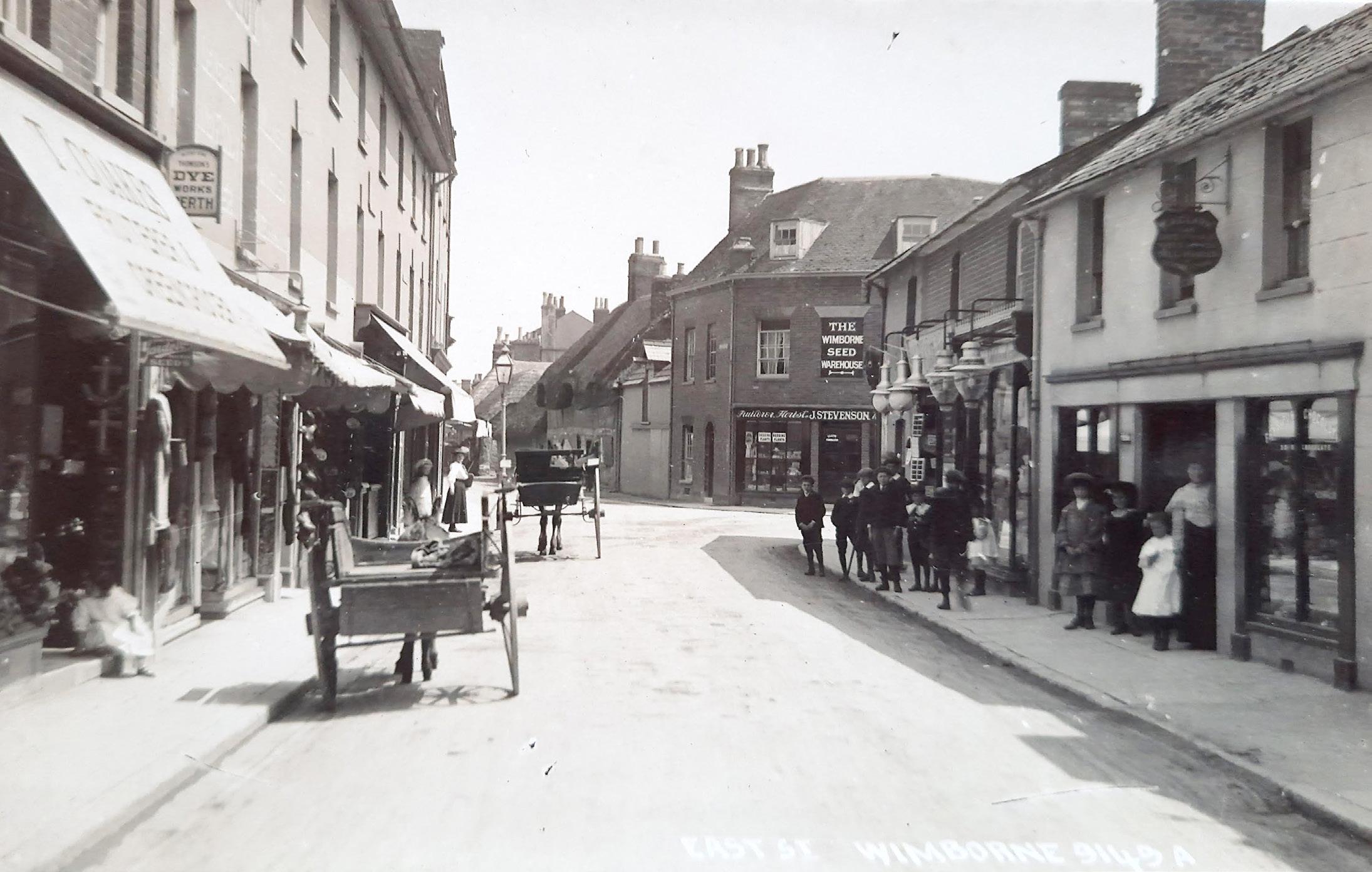

Roger Guttridge shares some remarkable Edwardian pictures of Marnhull’s biggest store, which rose from the ashes of a fire 114 years ago
In 1991, David Wilkins kindly lent me a remarkable set of early 20th century photographs of Hayter’s Stores and Bakery in Marnhull. The pictures are particularly unusual in that they include a couple of internal shots, taken before a fire that reduced Hayter’s to a smouldering ruin.
External pictures show the Burton Street premises in the immediate aftermath of the fire and after the rebuild.
The blaze broke out in the early hours of 2nd March 1909. Few people had telephones then


and messenger George Turner cycled all the way to Gillingham to alert the fire brigade. There was little they could do for Hayter’s, but they arrived in time to save the adjoining Queen’s Head Inn. Fortunately, there was no loss of human life, but five horses were killed.
The premises were rebuilt by W Wilkins, who I believe was a relative of David.
The sign above the two-storey Queen’s Head porch in the rebuild picture tells us that Henry Haskett was the licensee. That building is now a private
residence called Moonfleet, but more than a century later it looks almost identical – right down to the porch roof, the bay window and the chimneys.
The three-storey former Hayter’s building remains a mini commercial centre today, with a farm shop and a hair and beauty salon occupying the visible shops, and a curtain and carpet shop, general stores and post office around the corner. In the pre-fire internal shots, some of the product names displayed in the general store will still be familiar to many readers today – such as Hovis and Nestlé’s and perhaps even Wills’ Gold Flake tobacco. The drapery section appears to be selling rolled up carpets as well as ladies’ clothing. It’s remarkable that carpet sales have survived to the present day! An additional picture of the fire damage appears on page 140 of The Marn’ll Book (1952)
• Used copies of Roger’s Blackmore Vale Camera (which contains these archive images) can be obtained via Abebooks




This is such a simple, lovely route – really straightforward and you can enjoy some amazing views which you really haven’t earned, as there’s little-to-no hill walking. Walked on a blustery March day scattered with very heavy showers, the images really don’t do justice to the route!
All images © Laura HitchcockThis circular Cranborne Chase walk follows just a few long, straight paths, making it a breeze to follow as you cross the typical chalk downland and make the most of the sky and the views. The first part of the track walks through open farmland made all the more beautiful by the noise of the larks above us; I ’m not sure we’ve ever walked underneath so many! Passing between the long barrows, the track soon straightens onto what we presume, thanks to the proximity to Rockbourne, must be an old Roman Road; it runs as far as you can see in a dead straight line. After a simple left turn through some gallops, the return leg follows similarly broad farm tracks, and the westerly direction meant that we were treated to spectacular sunset views as we slowed our return to the car. Click here for more notes, images and an interactive map (plus a downloadable gpx file)
We have always created and recently walked the routes we feature (See all previously-published routes here), so you know you can trust them. We aim for unpopulated routes with no roads and big views! You can see all our routes (including many which are unpublished in The BV) on Outdoor Active, and all include a downloadable gpx file.
The gallops mark your turning point; presumably you should listen and watch out for horses

A due west finish means spectacular end-of-day views
It can be tricky spotting where the path goes ...
After a lovely but grey and frequently wet 8 miles, this was a wonderful way to finish

Male violet oil beetle Images: Liam Olds

This month wildlife writer Jane Adams introduces us to the shiny little beetle whose hitchhiking larvae have a mean bee streak
The wonders of nature never cease to amaze. From ants nurturing the caterpillars of butterflies to tiny wild bees nesting in bramble stems, it’s mindblowing how much is going on right under our noses.
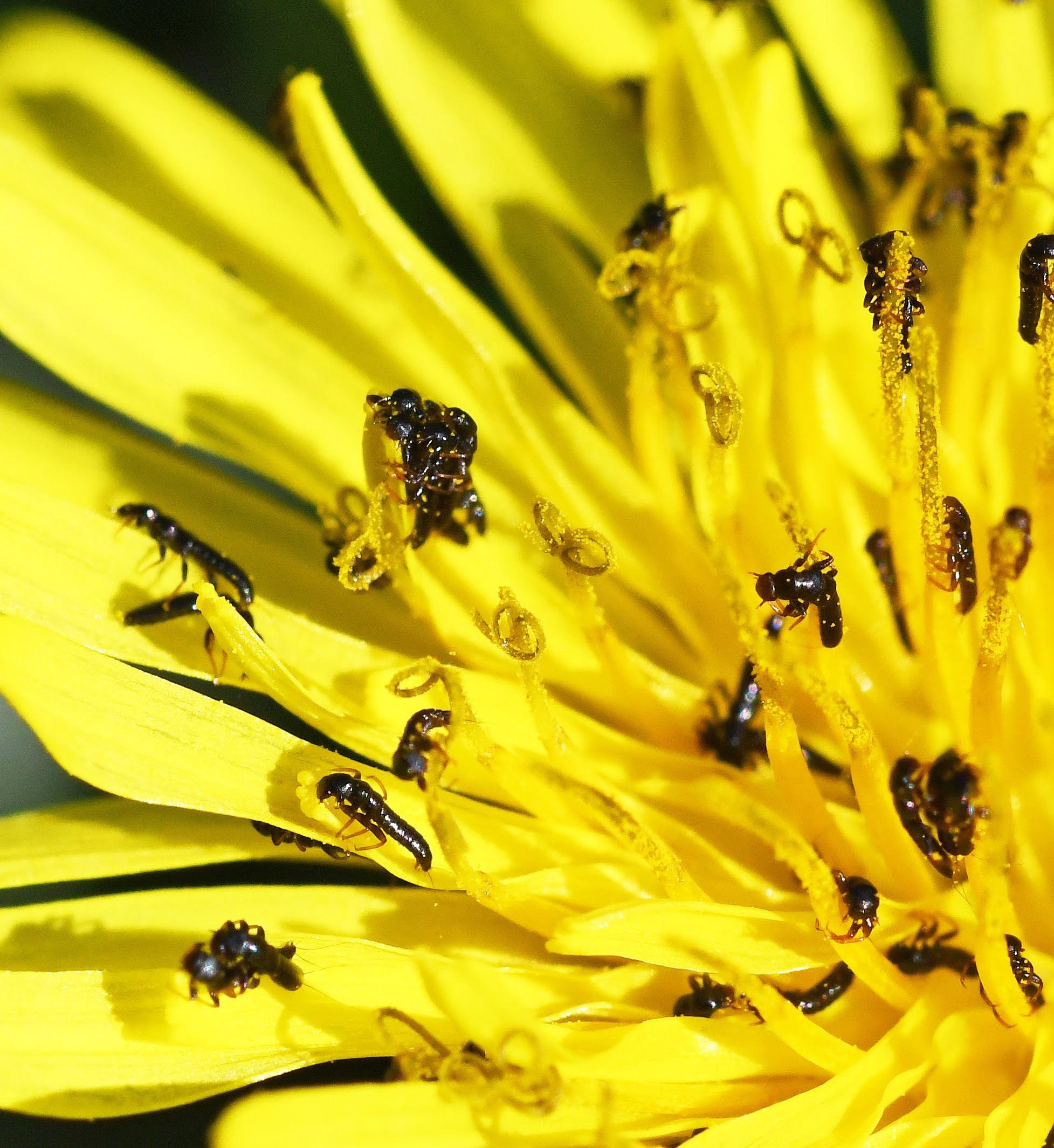
I recently stumbled across an oil beetle. Beetles make up 40 per cent of all insects and 25 per cent of all animal species, yet we see them so rarely – and this is especially true of oil beetles. But to protect this declining insect, conservationists urgently need to know how many there are and where they live.
It’s thought three species of oil beetle have already become extinct in the UK, and of the five that are left only two – the violet and the black oil beetle – are widespread and out and about in April. There’s also the shortnecked oil beetle; though very rare, this species still survives in the south west in a couple of isolated locations. Could there be more that we don’t know about?
Oil beetles are large, from 2.5 to 3cm long. With luck, if you’re in the right place at the right time, you’ll spot an adult oil beetle’s glossy blue-black body as it trundles about during the day. In fact, adult females often use compacted human footpaths as a place to excavate their egg burrows, so one might literally cross your path! But don’t pick
one up – they extrude an oily substance from their joints when alarmed – hence their name! Another life stage of the oil beetle you might happen to see is their larvae, or triungulins –so-called for the three hooks on their feet.
Once the eggs hatch, these 1.5 to 2mm larvae make a dash for the nearest flower and then wait for unsuspecting insects to pass so that they can jump on board. To survive, triungulins need to
be transported to the nest of a female solitary bee. Here they will eat the bees’ eggs and pollen supplies before emerging as an adult oil beetle the following spring. It’s an unreliable plan. Thousands of oil beetle larvae don’t make it to their desired destination – and don’t worry, bee populations are never at risk. This is just one of nature’s wonders and has been going on – right under our noses – for millions of years.
When to look: Mild days from February to June (they are especially active in April!).
Where to look: Woodland edges, flower-rich meadows, coastal grasslands, dunes, and heathland on mild days from February to June. Look for adult females excavating burrows and triungulins on the petals of dandelions and other wild flowers (see image above).
What to record: Take as many close-up photographs as possible from different angles of any adult oil beetles you find (phone cameras are especially good for this). Photographs of the head and thorax are especially helpful for identification. Also make a note of the location and date.
Where to record findings: Record your findings and submit photos on the Oil Beetle Recording Scheme website. For more info see their twitter account @OilBeetlesUK. And here’s a helpful Buglife ID sheet you can print.
and gates to be removed in the rewilded area. It is hoped that after ten years or so, virtual fencing can be dispensed with too. These herbivores help create habitats by dispersing seeds and nutrients through grazing, browsing, trampling and rootling. Broadleaf tree species are being planted and new ponds created to support a wetland ecology. Beavers should be able to help with flood alleviation as they are master ‘ecosystem engineers’.
Hunted to extinction in the UK in the 1600s due to the value of their pelts, they are being reintroduced selectively. New to Mapperton this year will be the introduction of Iron
Age pigs, which look like wild boar. Pine martens are also being considered. Driven game shooting is now stopping but the estate will still have a sustainable rough shoot. There are wild deer on the estate and these still need to be culled to manage the health of the herds.
Luke wants to carry out research into the rewilding process, and plans to work with both Reading and Bournemouth Universities on various projects.
Comparing Mapperton with Knepp, there are some clear differences in approach. All of Knepp has been rewilded, while half of Mapperton – where there is better land – will still be farmed, with a focus on regenerative agriculture, placing soil health at the core of the farming practice. Crops are
Rupert Hardy, Chairman of North Dorset CPRE, takes a look at Mapperton, the Dorset country estate creating its own version of Knepp’s rewilding in Surrey Luke and Julie Montagu took on the challenge of running the family estate at Mapperton, near Beaminster, in 2016 from Luke’s parents, the Earl and Countess of Sandwich. They quickly began introducing many positive changes, but the biggest has been the decision to rewild part of the 1,900 acres they own. Inspired by the success of the Knepp Estate in Sussex, the Montagus are now using rewilding, traditional conservation and also regenerative farming to deliver major ecological benefits – as well as offsetting the huge expenses of maintaining the historic house, the Italianate gardens and their four farms. Rewilding began in 2021, using the 200 acre farm at Coltleigh; another 257 acres will be added this year and further 500 or so later. The aim is to restore the degraded landscape which features beautiful but marginal agricultural land. For the rewilding sceptics, this really is not good agricultural land. Extensive ecological surveys were conducted to help identify key habitats and the benefits of rewilding. The estate is introducing large grazing herbivores which will replicate the lowintensity grazing comparable to the Mesolithic Period. White Park horned cattle, Exmoor ponies and beavers have all been brought in, and the cattle will be managed using virtual fence technology and electronic collars in order for internal fencing


White Park horned cattle, Exmoor ponies and beavers have all been brought in. New this year will be Iron Age pigsLuke and Julie Montagu took on Mapperton (near Beaminster) in 2016 from Luke’s parents, the Earl and Countess of Sandwich.
sown using direct drilling with no ploughing and minimal use of fertilisers and pesticides. All these will improve biodiversity and lead to better recycling of farm waste, carbon sequestration and more nutritious food. Luke is well aware that Mapperton is more remote than Knepp, so the estate is relying far more on virtual visitors. He and Julie have previous career experience in film and reality TV, which has helped in developing a strong social media presence for Mapperton abroad, especially in the USA. They already have 130,000 subscribers to their YouTube channel. They also have a Patreon community, who pay extra to get exclusive video of what is happening at Mapperton. Potentially these virtual visitors can become real visitors this
year, as the couple will be organising Grand Historic Tours in Dorset, commercially aimed at wealthy Americans.
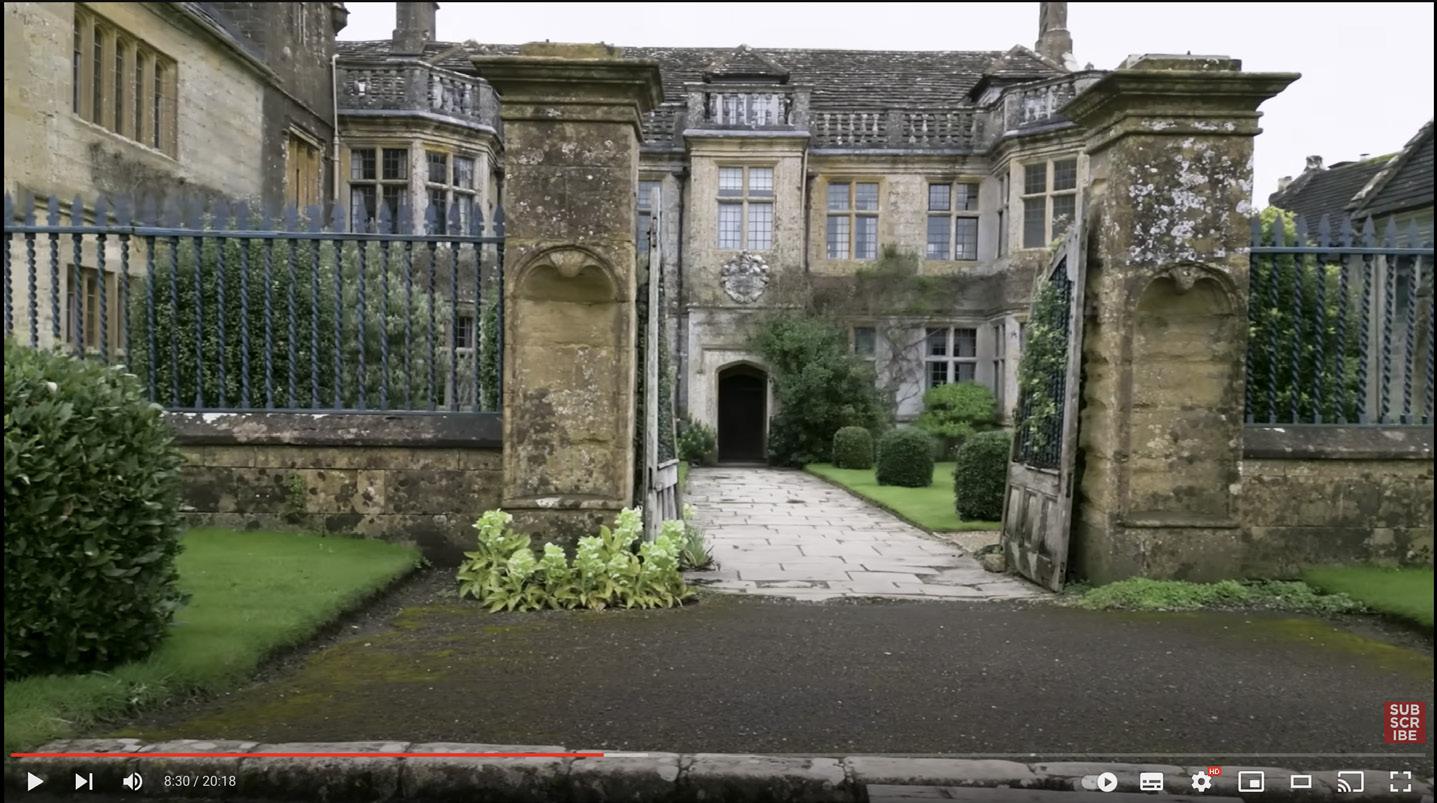
If you look at the physical visitor stats, half come from Dorset. However, only 0.5 per cent of Dorset residents have ever visited Mapperton. There is clear potential here for the estate, especially with the plans to make the estate a more family-friendly attraction, with play areas being built in the gardens. Clearly more holiday accommodation will be needed and old farmsteads are being converted. Glamping started last year and Luke hopes that it will be possible to offer real camping soon. They also intend holding more events and talks in the expanded visitor centre. The Dorset economy can only
benefit from more attractions like Mapperton, inland from the crowded coast.
One new interesting approach is social prescribing. Local healthcare professionals will be able to refer patients to naturebased programmes at the estate, which would include outdoor activities, such as coppicing and foraging, to support their health and well-being. One of Luke’s admirable visions is that of connecting people with nature, the landscape and the heritage of the area.

To complement the activities at Mapperton, West Dorset Wilding has been set up with two other estates to raise understanding of rewilding and regenerative agriculture and to establish wildlife corridors, as well as targeting certain species such as beavers, focusing on the River Brit catchment. Close by are a number of gardens open to the public which have introduced rewilding, such as Hooke Farm, which has glorious wild flower meadows in the spring.
Do go and visit Mapperton this year (www.mapperton.com). You will find more than delicious sandwiches in their smart café!
Have you noticed a big change on our Dorset beaches in the last few years? The piles of plastic drink bottles, heaps of fishing litter and tangles of advertising balloons that used to accumulate in coves and corners of beaches have mostly vanished. Following the introduction of innovative and inspiring movements such as 2minutebeachclean plus widespread coverage of the marine litter issue, there has been an avalanche of action. All along the coast, community beach clean groups have formed and individuals are inspired to pick up the litter they see when they are out and about. Litter is removed from beaches almost as soon as it touches land.
Unfortunately, that’s not the end of the story for marine litter. In the relative absence of large litter items, it is shocking to notice the profusion of microplastics that remain.
A man-made death trap
These tiny pieces of plastic, each measuring no more than 5mm in diameter, wash ashore in their billions during storms. They often blanket the strandline, rockpools and seaweed in their myriad of colours and shapes. Too tiny to pick up by hand, they make their way into the beach habitat, mixing with the organic debris that provides vital food and shelter for the wildlife that lives there. To remove them mechanically is to remove that rare and specialised wildlife ecosystem.
The term microplastics

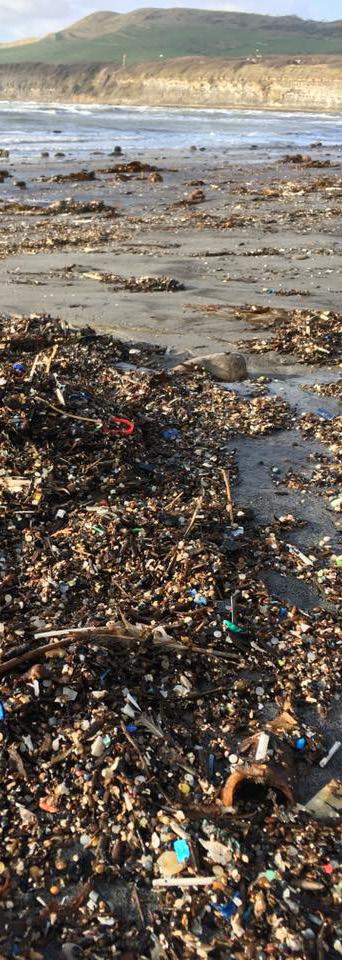
encompasses tiny particles,
chunks, threads and beads from a wide range of sources. They include nurdles, the form in which raw plastic is transported around the world; irregular broken pieces from larger objects; bio-beads used in sewage treatment; bits of monofilament and nylon threads from fishing line and nets; polystyrene beads ... the list is endless. But that’s just the stuff you can see. In addition are the microscopic microplastics. These miniscule plastics include fibres from our clothing and the microbeads used in some industrial applications. Even the cosmetics industry continues to use non-banned microplastics. They are ingested by plankton, right at the bottom of the marine food chain. Nothing can be more depressing than walking on an exposed beach in the aftermath of a storm and seeing an endless swathe of microplastics stretching into the distance, coating all surfaces and smothering pools. But it’s when you look closely by your feet that the true horror hits you; the sheer number of individual items making up this manmade deathtrap. This stuff can’t just be picked up like bottles and fishing nets. People have tried sweeping it up en masse and filtering out the sand and organic matter but it can’t be done without destroying that extraordinary wildlife habitat.
The answer lies with preventing it entering the environment; with consumer demand and political campaigns; with changing our habits and
behaviour. We can all start by reducing our consumption of single use plastic, by re-using and refilling containers for example. Selecting items with minimal plastic packaging, supporting businesses that make the effort to reduce plastic waste and checking cosmetics ingredients to avoid microplastics are all steps we can take to minimise the effect they have on the environment. Change can happen quickly –and we can all have an impact.
There has been a change in the rubbish on our beaches, says DWT’s marine awareness officer Julie Hatcher – but there’s still more to doMicroplastics on the beach at Kimmeridge Bay
Therese Coffey lost her audience at the NFU conference in February – but does her attitude raise a bigger red flag, asks Andrew Livingston
The UK government must not be allowed to blame its lack of action on the climate crisis on things like rotating cabinet members, Prime Ministers and every business’s favourite scapegoat – COVID. Back in 2019, with Theresa May at the helm – however many PMs ago that was – reaching carbon neutral by 2050 was made a legal requirement, with the passing of the Climate Change Act. By 2050, any carbon we release into the atmosphere from the UK must be balanced with carboncapture, through things like tree planting and the use of new carbon-cutting technologies. This was a good plan. The UK was at the forefront of action on climate change and looked proactive.
Well done government.
Last July, however, the High Court ruled that the action the government had taken toward net zero was insufficient and that the government was in breach of its own law.
Greg Hands, the then Minister of State for Business, Energy and Clean Growth, approved the government’s actions, despite them not actually meeting the legal requirement. For failing at the first hurdle, the High Court imposed harsher, wider and more frequent hurdles for the government to leap to ensure that efficient action is being taken and that the plans are more than simply rhetoric. Just over seven months later, The Observer acquired a leaked document showing that the government was falling far short of its target.
Best (worst) of all for the constantly downtrodden farmers is that the Department for Environment, Food and Rural Affairs (DEFRA) is furthest from the hurdle, with its Secretary of State Therese Coffey looking likely to knock herself out on the approach. The leaked documents, which were sent from DEFRA officials to senior Whitehall staff, show that Coffey’s department is 24 per cent short of its official target.
Therese Coffey has managed the unthinkable; to look more incompetent than her predecessors.

At the NFU Conference last month, Coffey was booed during her speech. She continued to project the air of someone who couldn’t care less.
As George Hosford – who was at the conference – commented in his BV column last month

(Red Twins, ELMS and beavers, BV Mar 23), Coffey spent the majority of her time during a Q&A with the NFU members yawning, looking at her watch and reminding them that she had a train to catch.
In fact, George described her as grumpy and rude. Bridges are being burned. You can be sure that NFU members took careful note of her attitude. If by some miracle she does set a plan for net zero by the deadline, she would do well to remember who will be out in the fields, carrying out her plan.
I can personally dislike Coffey, but I can’t blame her solely for her department’s inaction on climate change. Since May’s Climate Change Act in 2019, DEFRA has been playing pass-theparcel from one minister to the next. Only there are no hidden presents in this game. The music has stopped and Coffey is left holding the box. This will blow up in her face, but unfortunately it’s the environment that will feel the lasting damage.
Coffey’s department is 24 per cent short of its official targetDr Therese Coffey, Secretary of State for Environment, Food and Rural Affairs
As we move into April the weather has again been challenging for farmers and growers. In February we received virtually no rain and in March there has hardly been a day without it! Here at Rawston, this means that very limited fieldwork has taken place so far this year. In February we did manage, in dry but rather cold conditions, to sow most of our spring crops such as beans and barley. As I write at the end of March, they are just beginning to emerge, which is encouraging. We should now be rolling silage fields and any winter crops that escaped the roller – but the conditions are just too wet. We have also been unable to turn out our milking cows as the grass seems to be only growing slowly and conditions underfoot have simply been too wet. Feed stocks are consequently getting short and, because of the late spring, we are having to purchase maize silage from a nearby farm to see us out for the last of the winter. The price of the foods that we produce largely seem to be in decline. Our milk price has dropped by 7p in the last few months and further reductions are on the way. The price of wheat and barley has dropped from the highs achieved last
autumn by around £70 per ton. Oilseeds appear to have dropped even further. There is so much uncertainty in the markets – so much so that the effects of the Ukrainian War can make prices move dramatically on a daily basis. Fortunately, fertiliser prices have come down to slightly more sensible levels, but are still well above the levels they were before the war started.
The move to sustainability

I have attended a number of meetings, listening intently to discover what help DEFRA is offering to farmers and growers. It seems to be a complex mix based around how to farm in a sustainable way. However, food production hardly seems to get a mention. This has made me consider one of the options of planting a legume ley for two years, taking no production from it to improve the soil structure and saving any labour and machinery costs.
Unfortunately, this type of farming won’t feed anyone!
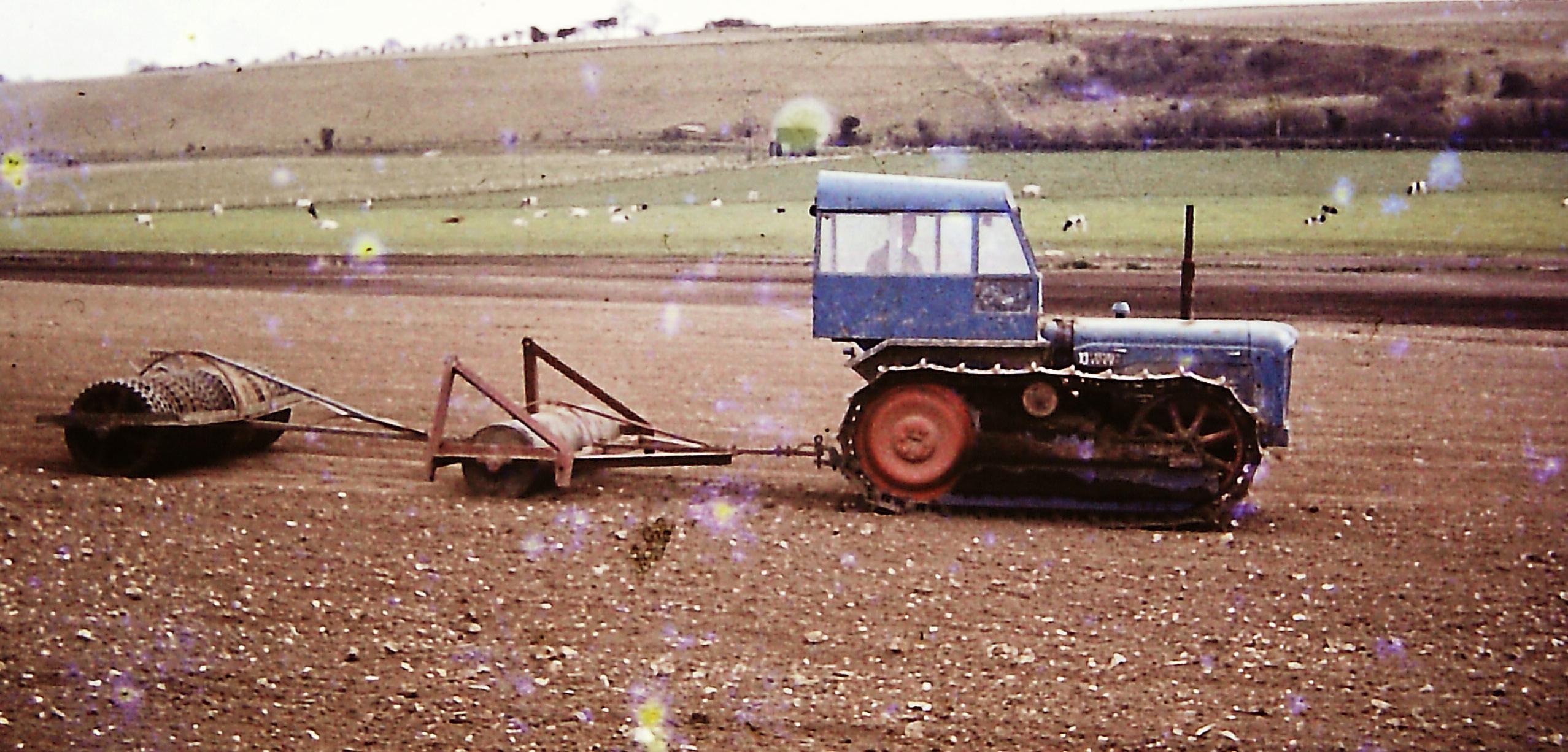
Arla, our milk buyer, is also encouraging its suppliers down the sustainability route, with financial incentives dependent on milk production methods. It seems to be a logical approach: producing milk efficiently is one
of the key goals. For example, not overfeeding protein in the diet and then wasting it through the manure produced. We will also be disadvantaged financially if we purchase soya from sources where there has been deforestation. The incentive starts in July, so we are still learning how we can become more sustainable.
Come on, Cherries!
In other, non-farming news, we AFC Bournemouth supporters had a season highlight last month with the 1-0 defeat of Liverpool. It was a very entertaining afternoon, with Liverpool missing a penalty and Bournemouth playing with great determination, showing their desire to remain in the Premier League despite being near the bottom of the league with our local rivals Southampton. Let’s hope the results go our way for the last couple of months of the season. Come on, you Cherries!

As part of British Science Week in March, the NFU’s education team gave students from more than ten per cent of primary schools across England and Wales the opportunity to step into farmers’ shoes in a series of live lessons.. With a record number of pupils getting involved in the 2023 Science Farm Live project (190,000 from 3,434 schools), the virtual lessons showcased how farming is intertwined with so many key science subjects. Over three virtual lessons, the programme used British Science


Week’s theme of ‘connections’ to look at some of the unusual connections that can be found between farming and other sectors; they took place over three virtual lessons. The first focused on how tractors are connected to space, with NFU next generation forum chair Eveey Hunter exploring what materials a tractor is built from and how her tractors drive themselves using GPS. Lesson number two was with Flavian Obiero and his pig dog Rex, with children learning how
he keeps his pigs happy and healthy as well as how pigs are connected to jumbo jets. The final lesson looked at the link between sheep and seaweed, with shepherd Susie Parish and members of the Sussex Seabed Restoration Project following the journey of wool from sheep to the seabed to help restore sea kelp populations (see this lesson below left!).
The premise of the virtual lessons was to highlight how science is ingrained in almost every aspect of agriculture. By taking farming into classrooms across the country it really brought the subjects to life. The fact that the highest ever number of students and schools registered this year shows that teachers are increasingly recognising the value of teaching science through the lens of food and farming.
If you or your school would like to get involved, please take a look at the NFU education website for more information.


The NFU once again used the Science Farm Live project to livestream British farming into primary schools, says county advisor Gemma Harvey
Cosmos Purity
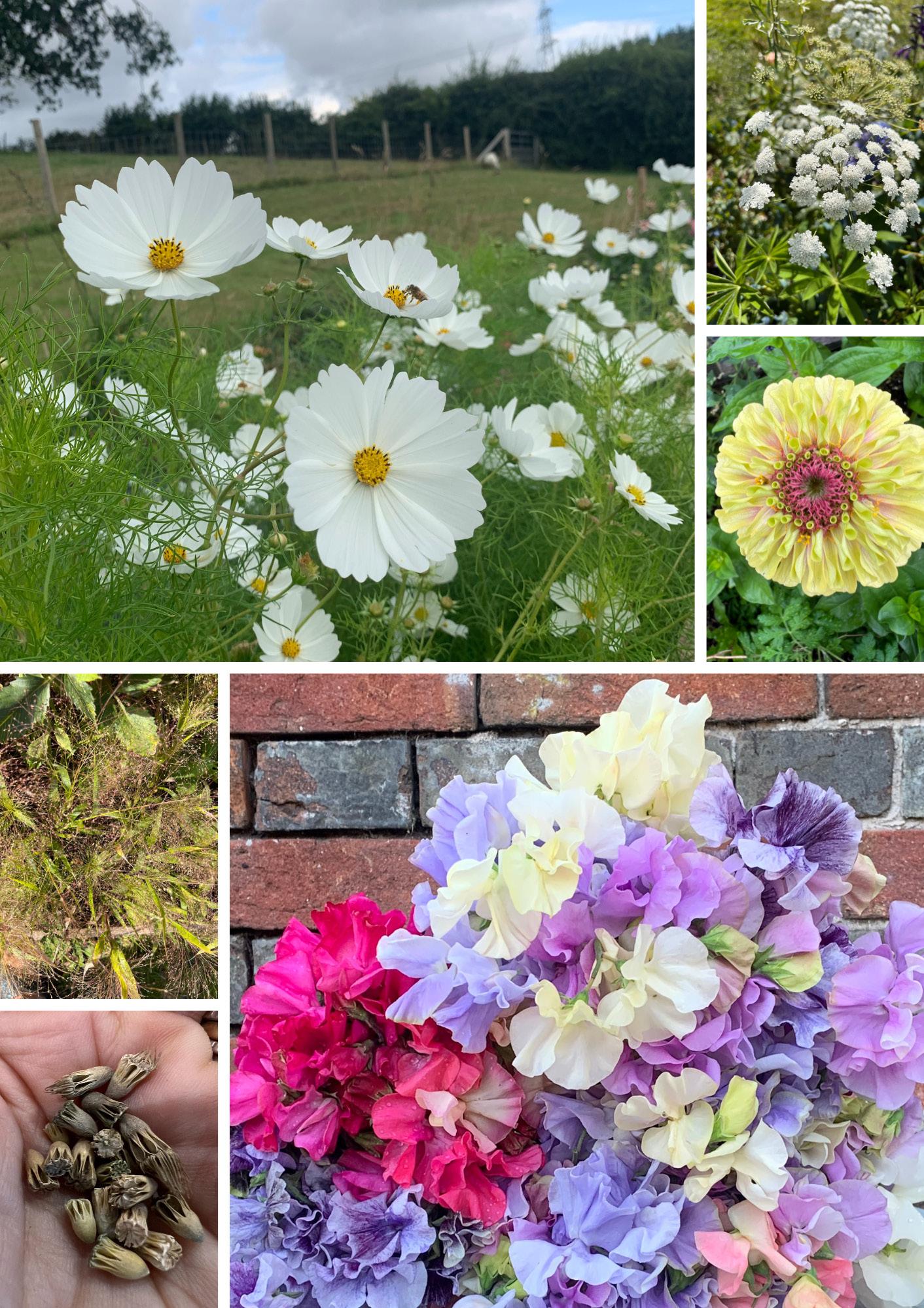
All images
Panicum
Frosted Explosion
Scabious seeds
Charlotte Tombs Ammi Majus ZinniaAs we hit the quietly productive lull where I’m just sowing seeds and watching them germinate, my thoughts turned to those I grow every year – and what it is that makes me come back and choose my favourites time and again. I even got as far as making a list, which I thought would be fun to share ...
1. Cosmos – simple to grow and will give you armfuls of flowers for weeks and weeks. Sow in late March. The seeds do look a bit like nail clippings (sorry – once seen, never unseen) but are easy to germinate, just plant them in a 15 cell seed tray. Cosmos is a half-hardy annual, which means it can’t be planted out until all danger of frost has passed, so keep them in for now. My favourite varieties are Purity, Cupcakes, Double Click and Apricotta.
2. Sweet peas – I sow these from October to mid-March, three seeds to a 9cm pot, and I then plant all three together. There is no need to pinch autumn-sown sweet peas as they branch naturally. These are hardy annuals, and they can be planted out from the end of February (but they may need some protection if it’s very cold).
Varieties I grow again and again are Charlie’s Angels, Earl Grey, Mollie Rilstone, Jilly and White Frills.
3. Scabious – such an ugly name for such a pretty flower. The Americans call it the pincushion flower which
is much nicer! The seeds look like little shuttlecocks. They are hardy, and you should sow them in March and April. Varieties to try are Oxford Blue, Fata Morgana, Salmon Queen and Stellata for its amazing seed heads.
4. Ammi Majus – it looks like cow parsley, it’s a light airy flower and so pretty. It’s hardy, and if you are lucky it will self-seed everywhere which is always a bonus! Sow in the autumn (note this one down for your end-of-season plans!) and overwinter it in the greenhouse; it will grow to six feet tall.
5. Nigella or Love in a Mist – so easy to grow and it will self-seed everywhere, so be warned! I love it! Its seed pods are almost as pretty, and will dry really well for an indoor winter display. It’s very hardy. Look out for African Bride, Miss Jekyll and Delft Blue.
6. Orlaya – a flat white flower, not as airy as Ammi and with a shorter stem, but from the same family of umbellifers. It will self-seed but can be tricky to germinate – keep the seeds in the fridge, which will help. It can also be autumn sown and overwintered in a greenhouse if you have one. The variety I have is Orlaya grandiflora.
7. Calendula – such a cheery flower! Easy to grow and usually with a wonderful, almost neon orange. There are some less intense colour varieties – look for Sunset
Buff and Snow Princess, Indian prince is a gorgeous orange variety. The seeds do once again look like toenail cuttings, but they are easy to germinate and are very hardy.
8. Zinnia – one of the last seeds I sow. They like it hot and dry and I don’t sow these halfhardy flowers until May. Such a pop of colour, a bunch of these on your kitchen table is guaranteed to make you smile! Varieties to try are the Benary’s Giants, cactus and the Queen series.
9. Panicum Frosted Explosion – not actually a flower at all, this one’s a bit of a cheat. It’s an annual grass and it looks like little fireworks. So so pretty. It’s easy to grow and brings movement to a bunch of flowers – it’s beautiful!
10. Limonium or statice –easy to grow and dries well (it’s one of those flowers that actually grows dried; its flowers feel dry as they grow). I grew one called limonium suworowii or rats tails which I’ll definitely grow again. My top tip – when you first grow them, look out for a seed pack with mixed colours. Then you can decide the colours you like, and grow them next year! It’s technically half-hardy but actually I find it quite hardy.
There you have it, my top ten flowers I grow from seed every year! I’m happy to answer any questions you may have about cut flowers so please do ask
Peas are planted monthly – seedlings make a delicious salad supplement.
The importance of storing your harvest shows in late winter, says Barry Cuff – with few new crops he continues to eat from his larder
By the end of March we were harvesting the last of our 2022 crops. Musselburgh leeks, mostly for soup, and Palace parsnips for roasts and chips. The few brassicas left after the winter frosts are the last of the Brendan sprouts and two plants of Cardinal purple sprouting broccoli. The broccoli was netted against pigeons and gave some nice spears. Hopefully these two plants should crop until the middle of April.
Three self-sown wintercress (Barbara Sp, a cut-and-comeagain plant) are providing fresh growth for our salads. To supplement them, we grow an agricultural pea in the greenhouse – the young seedlings are delicious in salads.


We sow a tray each month as they can only be cut once, and we are lucky enough to obtain these from a local farm.
At this time of year we mostly rely on vegetables harvested the previous summer and autumn. Stored in the cool garage we have Golden Bear onions, a good supply of potatoes with four varieties to choose from – Rooster, Picasso, Sagitta and Charlotte. Rooster and Sagitta roast well, Charlotte is perfect for salads and Picasso is a good all-rounder.
In the freezer we still have packs of French beans, broad beans, peas and sweetcorn.
We are now down to our last two winter squashes – one each of a Crown Prince and a Honeyboat.
In the kitchen cupboard are jars of pickled beetroot, green tomato chutney and runner bean relish.
Work has been slow on the plot due to the wet conditions, with more than four inches of rain. The soil is also quite cold. A good indicator of soil temperature is the emergence of weed seedlings; there are very few to see at the moment!
We did manage to plant a row of first early potatoes (Maris Bard) into quite wet soil on the 27th. As this was the first row, we were able to plant from the path without standing on the plot. In the greenhouse the first of this year’s vegetables are doing well, however (all our vegetables are raised from seed). Our new strawberry bed, planted in February is showing some growth from all three varieties, Marshmello, Malwina and Honeoye. Hopefully April will bring some warm weather at last, with no night frosts.

April is here, and it’s finally time to start getting busy, says gardener Pete Harcom. Warmer temperatures come with lots of garden jobs! The soil will slowly be warming up, so there is lots to do now! Having said that, watch out for frosts at night, and resist the temptation to sow and plant out too early. Keep an eye on the weather forecast and wait a few days if necessary.
Jobs for April
• Sweet Peas can be sown outdoors this month, or you can plant out any autumnsown ones.
• Remember to protect early outdoor sowings with fleece if a frost is warned.
• The lawn will need attention from now on, including sowing some fresh grass seed on any bare spots. Aerate the lawn by spiking with a lawn aerator or a garden fork – this can be done a few times per year. You can purchase lawn aerator spiked shoes that fit over your boots, to do the job (NB you may have to join the Ministry of Funny Walks!).
• There is still time to move, divide and plant herbaceous perennials – geranium, Astrantia coronaria, hostas and delphiniums. Don’t forget to check for any couch grass or other weeds within the crown of the plant.
• Hydrangea macrophylla can be pruned back by approximately a third now. TIP - plant the cuttings in the ground in a sheltered spot and they will have rooted within the year.
• Watch out for aphids, even at this time of year. Don’t spray with nasty insecticide, just squeeze
them between your fingertips. This way, there’ll be a few left for the birds!
• Turn over the compost heap using a fork – but be careful, there may be some overwintering hedgehogs or grass snakes in there! Grass snakes sometimes like the warmth and use a compost heap to lay their eggs.
• There is still time to prune roses back to hard stems and open up the centre of the bush if possible; this lets air and sun in. Also give them a mulch of well-rotted manure.
• Deadhead all the tulips and
Now’s the time to plant your hollyhocks, foxgloves and other cottage garden favourites for some summer colour
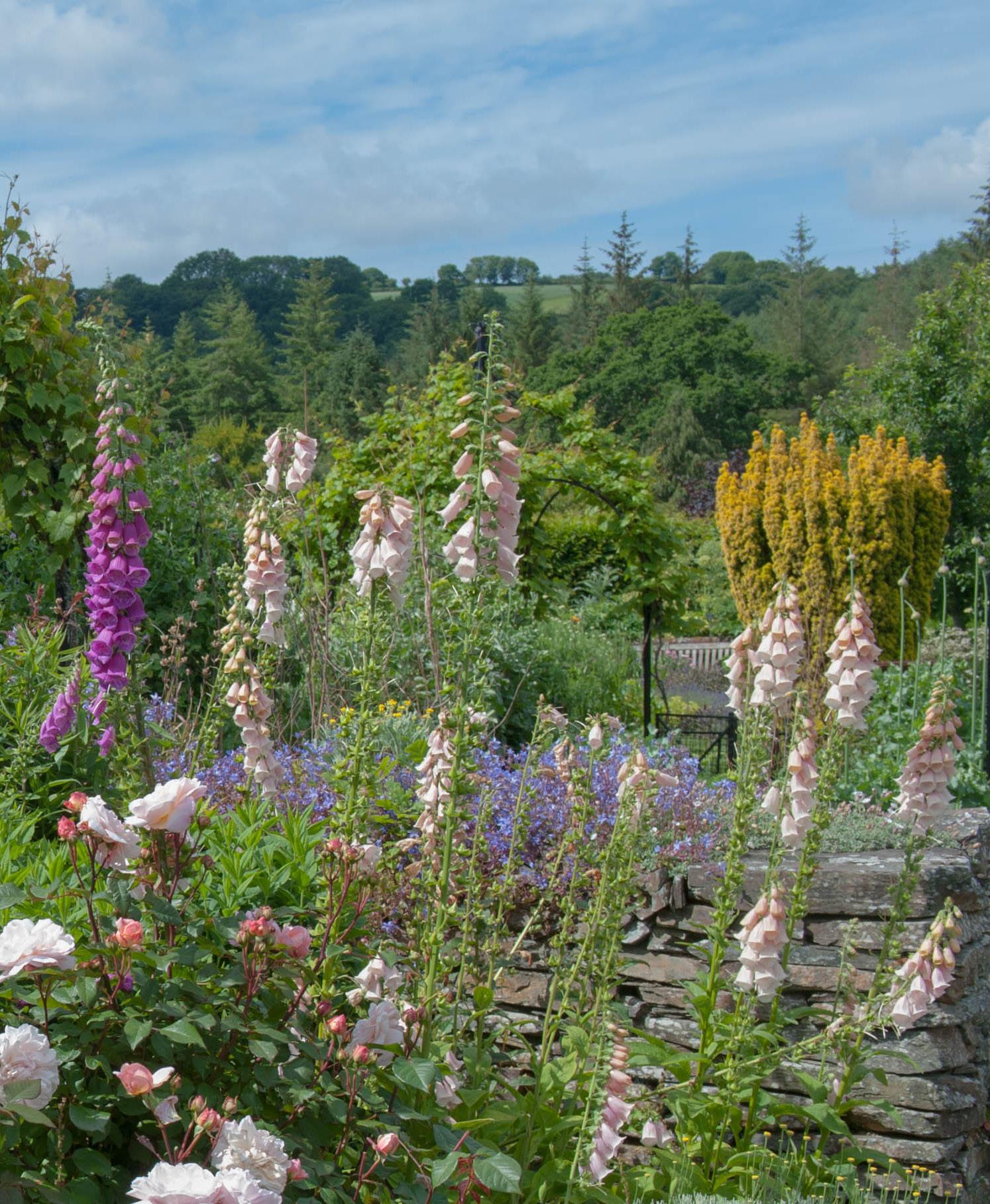
daffodils to help them put energy into root growth and flowers for next year.
• A cold greenhouse will be sufficiently warm this month to start sowing annual and biennial seeds for favourites like foxgloves, hollyhocks, nemesia, rudbeckia and French marigolds.
• Order your summerflowering seeds and bulbs!
• Check your outdoor pots aren’t drying out – they can, even at this time of year. Also, now’s the time to start increasing the watering of your house plants.

The Thorngrove team are feeling the rush of spring, says Kelsi-Dean Buck, caused by a bit of sunshine and a rush of colour in the courtyard

Well Spring is finally here! It’s taken its time, though. It felt like we had a stunning Mother’s Day weekend (I actually sat on the lounger in my garden and felt warm!), but slipped swiftly back into a wintery feel in the air… However, as I write this the sun has finally shown up. And I’m happy to report that gardenmode is now fully activated! I’ve not had a garden space to call my own for very long, so I’m actually excited for the arrival of warmer weather and to get out and make use of it again!
Thorngrove’s plant of the month
for April is lupins. Native to North and South America, there’s over 200 species of these flowering plants which are from the legume family. Often used in garden design due to their showy structural flowers, they come in a variety of colours including pink, purple, blue, yellow, and white. Some can grow up to 5 feet tall, and they do require well-drained soil and full sun to thrive. Don’t forget that lupins are a great source of nectar for bees, butterflies, and other pollinators. Planting lupins in your garden will help attract these beneficial insects and promote a healthy ecosystem in your own garden.

Our new menu in the café should be launching soon after this month’s BV goes ‘to print’, so please keep an eye out for that. We’ve been welcoming lots of new faces at The Secret Garden Café and it feels like word has really been spreading about the amazing food we have available. A huge credit goes to Ben and his team in the café for making it one of Gillingham’s highest reviewed cafés on Google. Indoor seating is available of course, but we’ve also revamped our outdoor patio in anticipation for the warmer weather, so please do stop by this spring with friends!
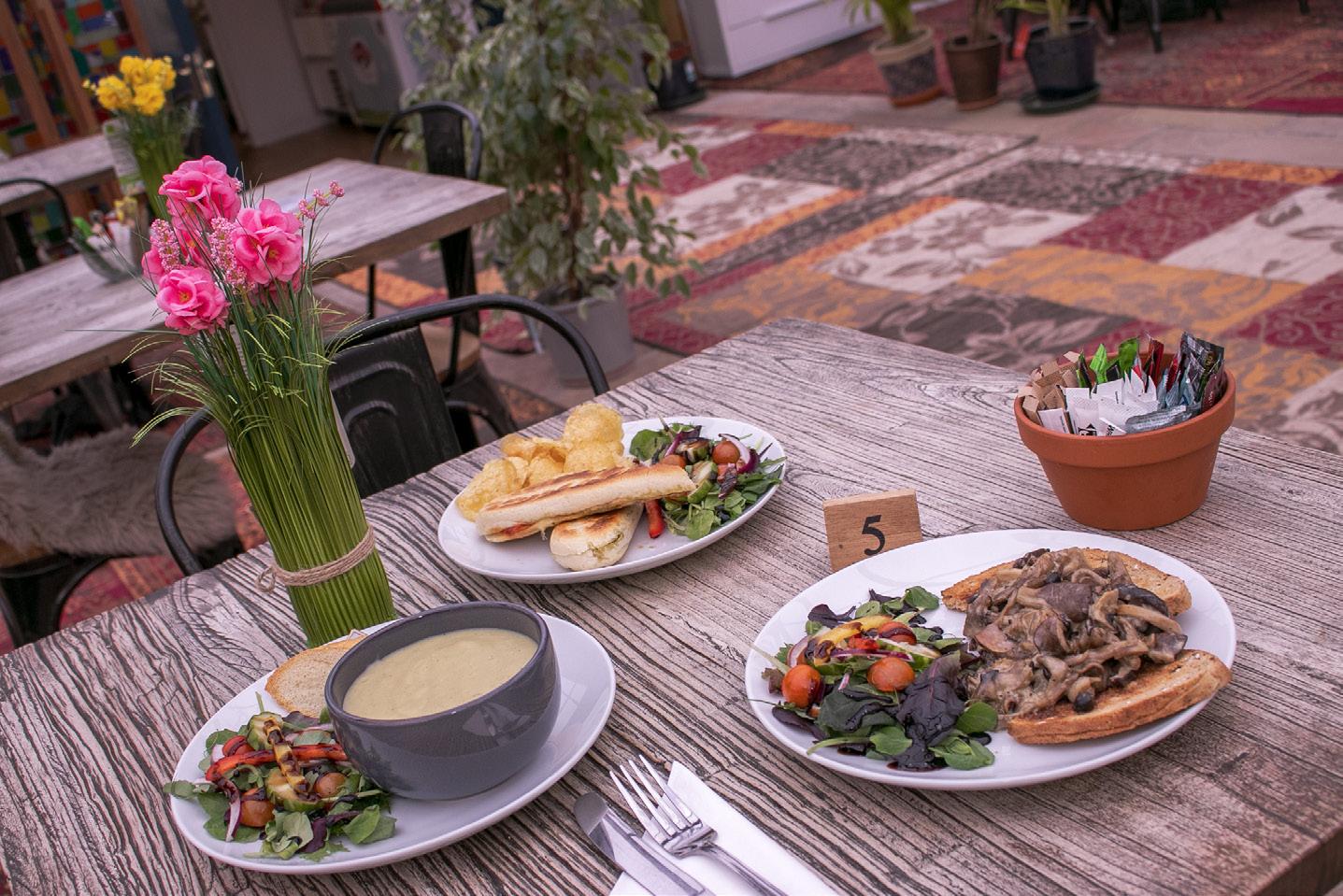
At Thorngrove this month we’re hosting Children’s Crafts (at time of writing spaces are already filling up so please book to avoid disappointment!). We’ve also announced open days for Employ My Ability, happening May 16th and 17th – book your guided tour today! At EMA we offer vocational qualifications and work experience to young people with Special Educational Needs and Disabilities, and Thorngrove functions as a campus for our students. Find out more on our website! employmyability.org.uk/

On the doorstep I repeatedly hear support for more pay for doctors, nurses, teachers and public sector worker ... for more investment in clean water, in our decaying roads, for social care and in new hospitals. This is almost always swiftly followed by an equally passionate demand for less tax, both local and national. They say a camel is a horse designed by a committee. Is the answer to the balance between taxation and spending one of strong leadership, backing one particular approach to avoid the compromises that create camels? It is a sad truth that economic theories are only ever right in retrospect and even then only in their explanation of errors and omissions. It feels a bit like football referees and VAR – and how unpopular is the killjoy that disallows the goal at the height of its passionate acclaim. How often would we prefer the exciting dream over the prosaic truth? The trouble is, that is how charismatic scoundrels can rise to the top – ‘never mind the truth, never mind your best interests and follow me for the ride of a
lifetime.’ The inevitable outcome? Disappointment, disillusion and a hefty hangover. As we head into the election season that will be with us for the next 12 to 18 months, both here and across the Atlantic, we should look deeply into what is said and the people saying it. We need to think long and hard about our experience of the last 13 years.

It has been said of those who run large organisations that once at the top, they need to lose the mindset and behaviours that got them there. Looking around the world at dictators and monomaniacs, they all seem to build on the ruthlessness that elevated them, believing they can have their position in perpetuity and ride roughshod over humanity, decency, fairness and truth in the pursuit of their personal visions and vanities. Fortunately, we do have checks
and balances. For every powermad political ref, we have VAR in the shape of a regulator or quality commission. The only “buts”, perhaps, are that sometimes it appears a regulator has too little power (I give you sewage spills, internet, energy bills) while others can seem to have too much, or use their powers in too simplistic a way.
Our ultimate recourse is to the independence of the judiciary and the humanity, knowledge and understanding of our elected policymakers, both local and national. However, if we give one faction too much credence for too long, then we start to undermine the inherent strengths of the system. They start believing they – and only they – are right. What matters most, then, is the quality and capability of our chosen representatives. Let’s pick the best.
Mike Chapman, North Dorset Liberal Democrats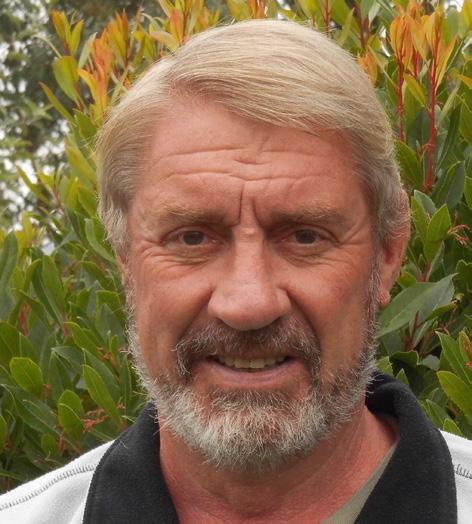
In March, tackling climate change was added to the bonfire of Tory failures. And just like Brexit, migration and the economy, this is no trivial matter.
They were forced to publish their Powering Up Britain strategy after a High Court ruling that their previous plans for reaching net zero by 2050 were the policy equivalent of a scribble on the back of a fag packet. But they once again failed to demonstrate that they had a sufficient grasp on the key issues of renewable energy and decarbonisation. Meanwhile, a report from the Committee on Climate Change (CCC*) sub-committee on adaptation has indicated that the government has failed to meet any of their targets on adaptation.
Indeed, the CCC claimed that the Tories were not taking the matter seriously enough to prevent avoidable loss of life.
Barring a few cranks and NIMBYS, the need to adequately address the climate crisis and to invest in adaptation strategies has become something
that, in recent years at least, unites most people across the political spectrum. Most sensible people can also see the potential benefits that renewables offer for reducing the cost of energy and our dependence on foreign powers as providers.
The need to provide a clear roadmap for change is obvious to most of us. The need to do so quickly, not least to harness the opportunity of private investment but ultimately to reduce the impacts of climate catastrophe, is equally obvious. And I’ve yet to meet a right-minded Tory who would disagree. The real issue here is not that there is no consensus on climate change, it is that we have a Tory government that is showing time and time again that it lacks the capability and competence to deliver for the people of this country. And the longer it remains in power, the more damage it will do.
Pat Osborne, North Dorset Labour Party *an independent group of experts set up to provide the government with advice on the climate crisis.


I understand the desire for politicians to take every opportunity to talk about their achievements in order to persuade voters that they are worth voting for. But politicians have a reputation for being careless with the truth, and too many modern politicians are taking their carelessness to the extreme. It starts with exaggeration and can quickly descend into downright lies. Lies told with a straight face, and repeated over and again even when challenged.
It says something about our political system that you won’t be turfed out of the House of Commons for lying, but you will be ejected if you point out that someone has just lied.
During his recent budget speech, the Chancellor attempted to take the credit for 90 per cent of the UK’s solar power having been installed in the last 13 years. He said: ‘It’s this government who fix the roof while the sun is shining’ – to loud cheers from the Tory backbenches.
Total greenwash tosh.
The truth is that solar power infrastructure has progressed in spite of the government, rather than
because of it. And it is still just a fraction of where it would have been with proper support. After all – 90 per cent of Too Little is still Too Little. The Tories pulled the rug out from under the expanding domestic solar panel industry just as it was taking off. They trashed the zero carbon house-building regulations in 2015 before they could come into effect. They’ve failed to reduce the UK’s energy demand by, for example, insulating our notoriously outdated and leaky housing stock. Since 2015 they’ve given £20bn more in support to fossil fuel producers than those of renewables. They’ve blocked onshore wind projects, and instead announced more than 100 new oil and gas licences.
They’ve even approved the opening of a new coal mine in Cumbria, claiming that the coal will be used by the UK’s steel industry when the truth is it’s too high in sulphur and 90 per cent of it will have to be exported.
As the climate and environmental crisis grows ever worse, we need honesty and integrity to address it, not greenwash.
Ken Huggins, North Dorset Green PartyThis month’s news from the unofficial capital of the Blackmore Vale...

Sturminster Newton is always a great place to come and have a browse; potter round our niche shops, pubs and cafés. SturAction is the Community Benefit Society which runs a number of shops in town – the profits of which all gets funnelled straight back into supporting the town and its people.

If you haven’t visited yet, then start your visit with a wander round 1855, the new artisan’s market in the former NatWest Bank. There are over 40 local traders offering a range of wares – there’s a new treasure to find on every visit! From Sunday 16th April, 1855 will be opening on Sundays 11-3 too. On the opposite street to 1855, The Boutique is filled with pre-loved good quality ladies and children’s clothes and accessories. The stock is ever-changing – check back regularly, you might just pick up a pair of Prada shoes... (see image right). It’s always a first port of call when you want a fun upgrade of your wardrobe (or apparently a designer bargain!).

The Emporium and Art Gallery, just along from 1855 are a deep treasure trove of interesting preloved item; all at very reasonable prices, as it’s all donated goods.
A sorely-needed source of pre-loved men’s clothing in the town can be found inside he Emporium; known as the Dapper Chaps
Gentleman’s Boutique.
At the far end of the town, The Furniture Store is in the old Barclays Bank building – and it’s filled
with pre-loved furniture at knock down prices, ready to furnish an empty corner or to take on for an upcycling project (donations are always welcome).
There is a special late night opening at 1855 on the last Friday of every month, when the shop stays open until 8pm. There may be wine tasting, some of the artists, traders and makers will be present to talk to and it is rapidly building into a regular social evening in the town.

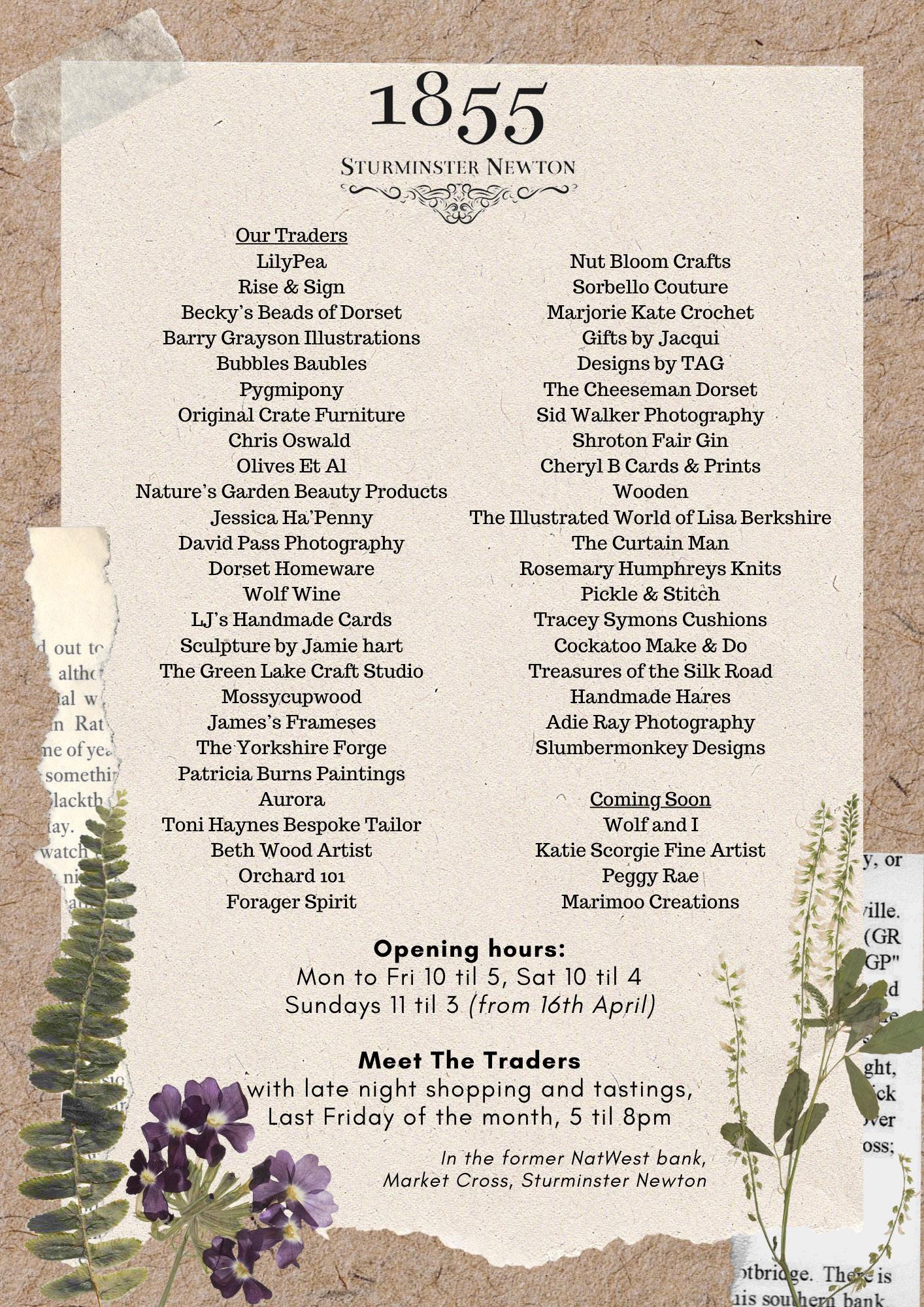
Want to reply? Read something you feel needs commenting on? Our postbag is open! Please send emails to letters@theblackmorevale.co.uk. When writing, please include your full name and address; we will not print this, but do require it.

Thank you for covering Minette Batters speech at the annual NFU conference, and also for providing the link to the full speech. I was impressed by her passion, knowledge, and commitment to supporting our industry, but what impressed me most was her ability to connect with the audience and to speak directly to the concerns of farmers. She was engaging, thoughtful, and genuinely passionate about the future of our industry.
Diane Creed, by emailThe European Union is by no means perfect, but in leaving it the UK really did cut off its own nose to spite its face. A promise by those behind this Brexit Government that EU funds would be matched if we left has been broken. There’s only so much repetition of the empty “levelling up” slogan that ministers in Rishi Sunak’s administration can do to obscure that truth.
Anyone in a rural community can see that farmers continue to bear the brunt of the empty promises and the shambles that is the current (non-existent) ELMS replacement.
It was good to read George Hosford’s column last month, sharing some positivity around the fact that at least some departments within DEFRA are keeping themselves up to date with soil health and environmental issues.
 John Napier, Mere
John Napier, Mere
What good sense we can read in Minette Batters statement to the NFU conference. She painted a stark picture, reminding the hall that input costs had jumped 50 per cent, posing a threat to domestic food security and supply. We have the lowest egg production in nine years, salad production is down to levels we haven’t seen since the 80s and many beef and sheep farmers are planning to reduce numbers.
Let’s hope the government were listening when she demanded they ‘start putting meaningful, tangible and effective meat on the bones of the commitments it had made.’
What a shame that Therese Coffey couldn’t show her the respect and professionalism she deserved. How embarrassing that a Wiltshire tenant farmer puts the Secretary of State to shame just in the simple matter of good old fashioned manners.
Angela Carrows, by emailWalkers be aware
I have read this week that the Tick-borne encephalitis virus (TBEV) has been detected in Dorset. It’s a very small risk, but better safe than sorry as the consequences can be extremely serious. Most people are aware of tick bites causing Lyme disease, which is a treatable bacteria infection, but are seemingly not so aware that though the chances of contracting TBEV are very low, the subsequent viral infection can be life threatening. Obviously it’s a small risk, but worth covering up if spending
time in long grasses, using insect repellant (or the SAS’ allegedly preferred repellent, AVON’s Skin So Soft moisturiser!) and just keeping an eye out on your legs after a walk.
Mary James, ShaftesburyDogs behaving badly
I am writing to express my frustration and concern regarding the behaviour of some dog owners on the trailway in Sturminster Newton. While I enjoy taking walks on the trailway and appreciate the ease of access to the beauty of the area, I have recently encountered several incidents involving poorly behaved dogs and their owners. On numerous occasions, I have encountered dogs running offleash and causing a nuisance to other walkers and their dogs. Some dogs have even chased after cyclists, putting themselves and the cyclists in danger. In addition, I have seen owners not cleaning up after their dogs, which is both unsightly and unhygienic.
As a dog owner myself, I understand the importance of exercise and time spent outdoors
I thought your readers might be interested in the above photo. It was taken by my father, Geoff Mallett, who was the headmaster at St Mary’s Junior School (as it was then) in Stalbridge, from the 60s through to the early 80s. On the transparency slide is written:

“Lower juniors trip to Portland 1966“
Chris Mallett, by email
for our furry friends. However, it is the responsibility of the owner to ensure that their dog is under control and not causing disruption or danger to others. I urge all dog owners to please keep their dog on a lead and to clean up after them. It is important that we all respect the trailway and each other, and ensure that it remains a safe and enjoyable place for everyone to visit.
Annie G, by emailCONGRATULATIONS, Laura and Courtenay! It’s great that you’re on the shortlist with two other top regional publications.
(for the NMA2023’s Regional Publication of the Year - Ed) I wish you both all the very best on your great achievement so far and hope you win.
Sheila L, by email
This laughing donkey was submitted to our Reader’s Photography this month. It didn’t make the pages, but it was just too good not to share! Thanks for submitting Debs Baker.
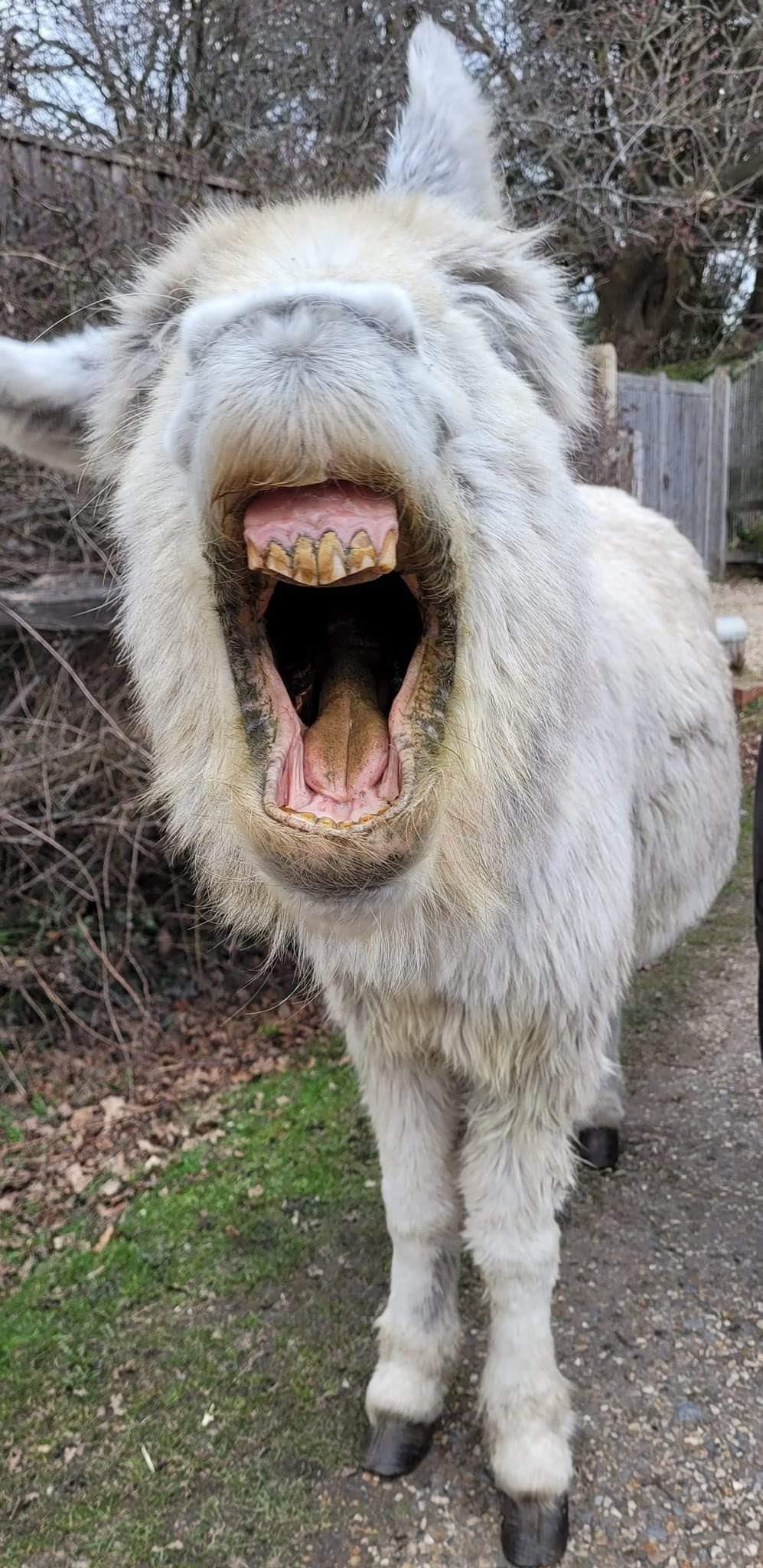
Crossword Simply click to complete on your tablet, computer or phone - or there’s a download option if you prefer pen and paper.



This month, for your puzzling pleasure, we have... one big stormy sky! Just click to complete! If you get stuck, there’s an icon at the top of the screen which reveals the completed picture for you to refresh your memory.

A local expert from Citizen’s Advice provides timely tips on consumer issues. This month: I ordered online and now the company’s gone bust!


Q:“ I ordered a watch online with personalised engraving for my partner’s upcoming birthday. The company has since gone out of business. I keep phoning and emailing them but can’t get through to anyone. I’m assuming they can’t fulfil my order, but I’d paid for the watch upfront and can’t afford to buy another gift until I get my money back, please help?”
A:This is a very frustrating situation, especially as you’ve already parted with your money and spent time searching for a suitable gift for your partner’s birthday. If the company’s gone into administration, it may still be able to fulfil outstanding orders. But if the company is already in liquidation, you’ll need to try to get your money back. If you’re unsure about what state the company is in, the Citizens Advice website has
information on how to find out. As the company hasn’t responded to your calls or emails, is there a shop or office you can visit or write to, to get an update on your order, or request a refund? If that isn’t possible, the next steps depend on whether it’s a limited company (it will have ltd or plc after its title) or if it’s a sole trader (someone who runs their own business) or partnership. If it’s a limited company, you’ll need to get details of the administrator or receiver – the person dealing with settling the trader’s debts. The names of those administrators will usually be on the website of the company that’s gone bust. You should register your claim as a creditor on the GOV.UK website. Fill out the form with details of what you’re owed and send it to the administrator dealing with the trader’s debts. Unfortunately, there’s only a

small chance you’ll receive any money back because you’ll be last in a long list of creditors who need to be paid.
As the order was online (and you therefore presumably paid by debit or credit card) you could also try getting your money back with a Section 75 claim or a chargeback claim to your card provider or bank. Full details about both these types of claims can be found on the Citizens Advice website. If the seller was a sole trader or partnership and not a limited company, pursuing a Section 75 or chargeback claim is your best option. Every case is different when traders go under, but you can call the Citizens Advice consumer helpline to find out exactly what your rights are: 0808 223 1133 or visit the Citizens Advice website here for more details.
Employ My Ability offers vocational training for young people with special educational needs and disabilities. Maddie Walters worked on her journalism with the aim of writing a column for us - Ed


This month Maddie is thinking about pets - therapy animals aren’t just for those with limiting conditions, we all feel better for with an animal
Everyone, disabled or not, sometimes needs a bit of creature comfort – and it can often come in the form of a pet. In this month’s article I will be talking about pets and some local pet shelters and charities. According to news articles and television ads, many pets are abandoned or surrendered to a shelter. Giving an abandoned pet a home is a great way to find your next pet! There are many local charities you can find online – but do call first, you may have to book an appointment to see pets available.
Cats and dogs are great pets to have if you are disabled. In some cases therapy dogs are really helpful for people; most people know about guide dogs for the blind and hearing dogs for the deaf, but there are an increasing number of therapy dogs trained to help owners with debilitating conditions like epilepsy, and equine therapy is being successfully used to treat mental health issues too (see ‘Horse, the mood altering drug’, The BV Apr 22).
If you can’t have a pet yourself, volunteering at your local shelter can help you get some experience looking after pets –and also some extra pet cuddles! At Thorngrove Garden Centre all of the Employ My Ability students and day services have welcomed the guinea pigs and rabbits and they are really enjoy looking after them! They have learned all about feeding, changing the straw, giving them water and making sure that they
don’t run away or get lost. It is great practise for having a pet of their own, and enjoying some beneficial animal therapy
I recently read an article about robot cats and dogs, too! They have been very helpful in nursing homes and respite care homes for elderly people with dementia.
If you can’t take another pet yourself, you can still support a local animal charity, The Cats Protection Charity Shop is a great option (the nearest one is in the High Street, Gillingham). There are many wonderful pets that need a home – maybe it’s the right time for you, and you
can find your next pet at a local rescue? If you are thinking about providing a forever home for a rescue pet, try the following local rescues:
• Stour Valley Dog Rescue – just dogs
• Margaret Green Animal Rescue – all animals
• Cat’s Protection mid-Dorset –just cats
• Dog’s Trust – just dogs
• Angel Rabbit Rescue – Rabbits and guinea pigs
• Staffie & Stray Rescue – just dogs
• Waggy Tails - just dogs
• RSPCA Ashley Heath – cats and other small animals
Pat Barnes, a retired police officer and current minibus driver at Bryanston School in Blandford, met with the team at Mosaic in January 2023 to share his plans of undertaking a remarkable challenge for the charity. Pat aims to walk all the way from his front door in Wool, Dorset to Santiago de Campostela in Spain. He learned about Mosaic, a Dorset-based charity that provides bereavement support to children and young people, through his work at Bryanston School where Mosaic provide a bereavement service.
Pat set himself a fundraising target of £1,000. At time of writing, just a few days into his journey, he’s already broken through that target!
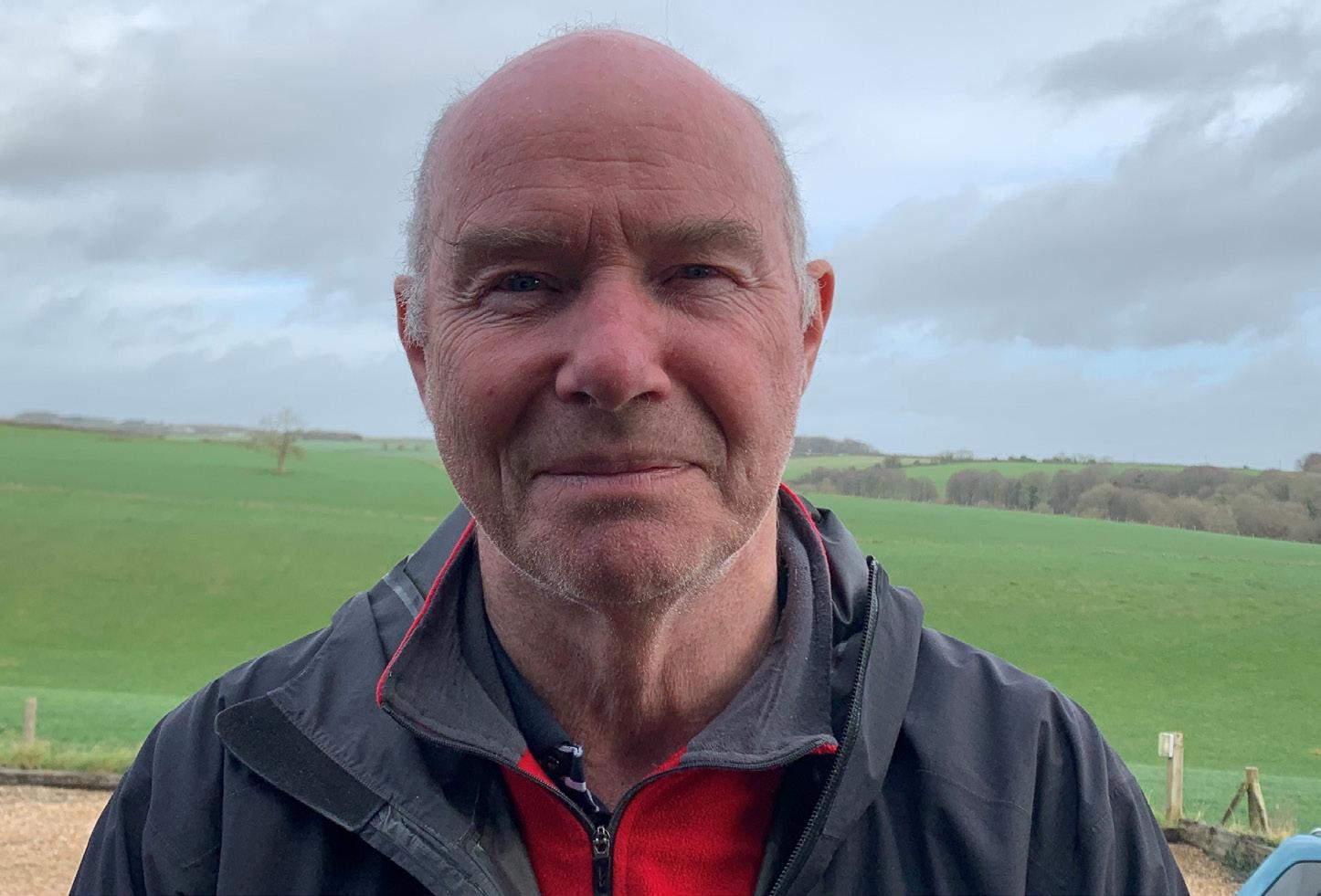

Calais to Camino
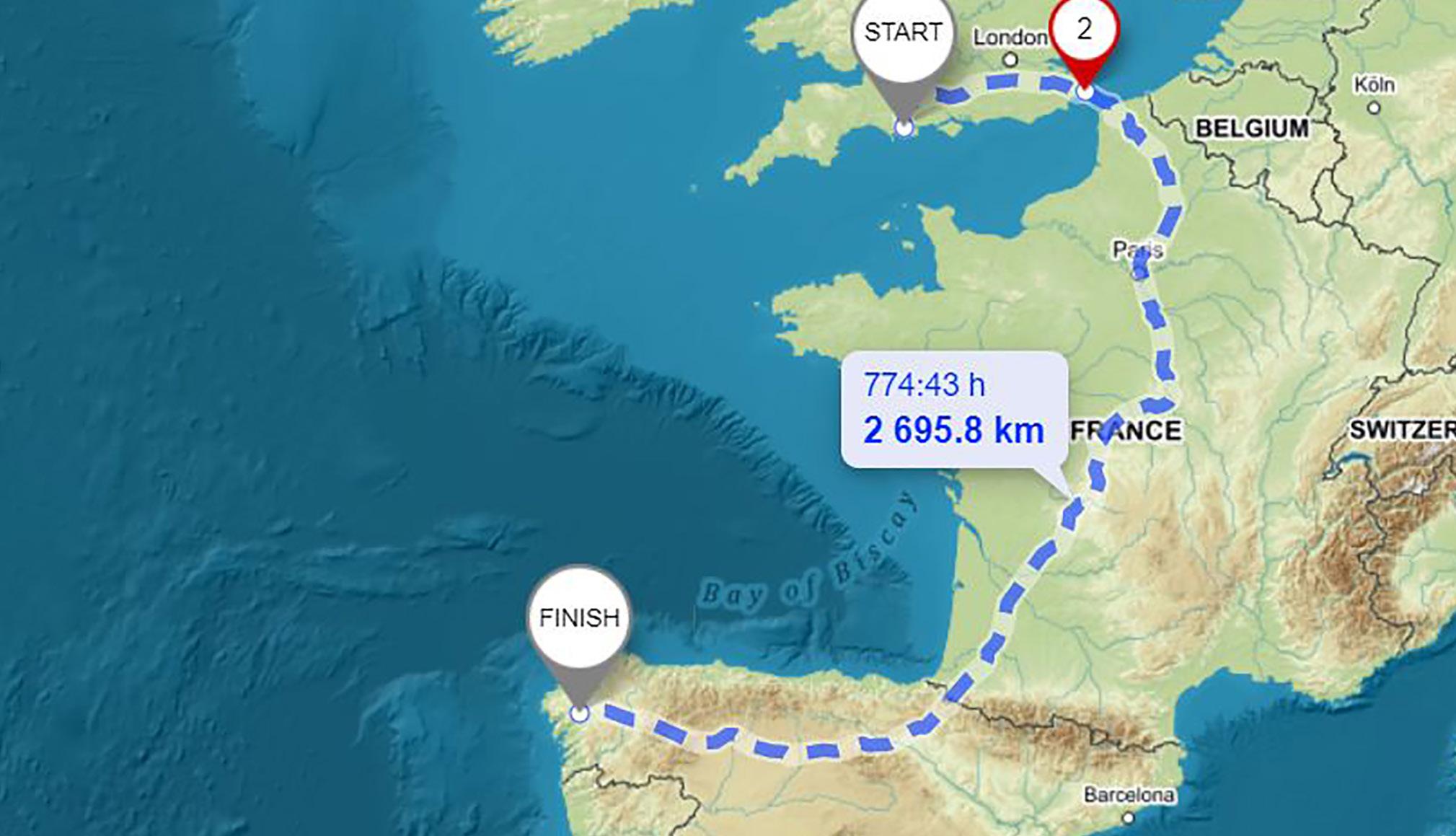
Pat set off from his own front door in Wool on Monday 3rd April, heading first to Salisbury, then on to Winchester where he will join the Pilgrim’s Trail to Canterbury before crossing from Dover to Calais on foot.
He’ll walk through France, over the Pyrenees and across the
North of Spain to the famous Santiago de Compostela on the Camino trail. The walk will be unsupported, meaning he has to carry everything he needs with him; Pat estimates that it will take him around four months to complete the journey. He says, ‘I have previously walked the Camino Frances, around 940km, and Camino del Norte, around 1,150km. I enjoy the adventure of a long-distance walk, seeing the changes in the countryside, the culture ... but most of all it’s the people you
meet along the way.’
Sarah Hannibal-White, Mosaic’s Fundraising and Events assistant says, ‘We are delighted that Pat has chosen to support Mosaic whilst undertaking this amazing challenge. We look forward to hearing all about his adventures and the people he meets and sharing his stories with the community. We wish Pat every success!’
If you would like to find out more about Pat’s adventure or make a donation, you can visit his JustGiving page here
It has been called a ‘secret landscape’ – and not just because there doesn’t seem to be a sign anywhere directing you to ‘Cranborne Chase’. Or if there is, author and photographer Roger Lane hasn’t found it yet.

‘Perhaps it is the most appropriate description because it isn’t too well-known, even among longstanding residents,’ he says. ‘I have often been asked exactly where it is and what it is.’ As with the Blackmore Vale, boundary definitions vary, but broadly Cranborne Chase is the chalk downland that spreads out on either side of the Blandford to Salisbury road, extending into three counties – Dorset, Wiltshire and Hampshire.
It is peppered with Neolithic and Bronze Age burial mounds, bisected by the six-mile Dorset Cursus and the Roman road known as Ackling Dyke, which runs from Old Sarum to Dorchester via Badbury Rings. As its name suggests, the Chase was once a royal hunting forest which naturally made it a battleground for poachers and gamekeepers and a refuge for smugglers and criminals.
In Cranborne Chase: A Secret Landscape (Amberley), Roger Lane and his friend Roger Holman, who died before the book’s completion, take us on an A-Z tour of the villages and other locations, starting with Ackling Dyke and finishing with Win Green. The pair are well-known for their stunning landscape photographs and these, together with Roger Lane’s informative text, make this book a must-read for anyone with a love of the picturesque Cranborne Chase.
The updated 2023 paperback version of Cranborne Chase: A Secret Landscape is available direct from Amberley for £14
It’s normal to question who you are – your core beliefs, personality, and sexual or gender identity. Questioning one’s identity can occur at any age. Often this reflection can provide an opportunity for growth and positive change.
You may have seen the term ‘identity crisis’ in the media, usually alongside a generic headline on ‘how to cope’. Questioning your identity is not a crisis; it shouldn’t be stigmatised, nor is it something to be frightened of.
‘Gender identity’ is a person’s sense of their own gender. UK Census Data showed that 262,000 people aged 16 years and over in England and Wales identified as a different gender than the one they were assigned at birth. (Census, 2021). It’s important to acknowledge these statistics, especially considering mental health challenges within the transgender community. During the 2020/21 period, 2,630 hate crimes against transgender people were recorded by the Police (Home Office, 2021).
One of my personal key takeaways from
Unconscious Bias training at Dorset Mind was that we all form judgements, often without realising, due to the many factors affecting who we are, such as our own gender identity.
People may react confrontationally towards others, simply due to differences, and the uncomfortable feelings created by the ‘otherness’. Additionally, the ‘hate’ may stem from an individual’s lack of education or understanding.
Within Dorset Mind, we continue to amplify the voices and experiences of people in our communities, often through online blogs or vlogs. We want to encourage all ages to contribute, so we can better support each other. In Dorset Mind wellbeing groups, we’re delighted to provide participants safe and confidential spaces to talk about who they are.
Within our LGBTQIA+ group, ‘MindOut,’ participants share their own experiences, help each other to embrace their own personal sense of identity and take part in mindful activities which help develop self-compassion. Dorset Mind work placement organiser and volunteer Billie Frater helps to co-facilitate the ‘MindOut LGBTQIA+’ group. She says: ‘The beauty of life is that it gives us the opportunity to explore who we are. It’s OK to feel confused and question our sexual and/or gender identity.
‘However you feel or identify, you
are valid and loved. Additionally, there are people and resources that can help you better understand and learn about yourself. Don’t feel pressured to figure out who you are. It’s a journey, not a race!’
Need support?
• Samaritans provide a phone listening service which operates 24hrs a day, 365 days a year. Contact them FREE on 116 123.
• If you’re a part of the LGBTQIA+ community or questioning your gender identity, find signposting and support groups for young people and adults on the rainbowdorset.co.uk website.

• Additionally, contact MindLine Trans+, a free, confidential listening service for people identifying as trans or non-binary, and their friends and families, on 0300 330 5468.
• Other support links can be found on Dorset Mind: dorsetmind.uk

The notion of a silver bullet for weight loss is highly appealing. If you have a BMI of at least 30 and likely at least one other health concern such as diabetes or high blood pressure, under NICE guidelines you may soon be eligible to receive Semaglutide, the new ‘weight loss injection’.

However, you need to go beyond the headlines to understand what it is, how it works, the risks and the alternatives from a nutritional therapy standpoint. Here is the low-down.
Glucagon-like peptide (GLP-1) and glucose-dependent insulinotropic polypeptide (GIP) are hormones that are released naturally by the gut; jointly, they have an impact on the hormone insulin. GLP-1 and GIP agonists are drugs that work by mimicking the effects of these hormones. They started out as drugs to treat patients with type 2 diabetes (T2D) and act through simulating insulin release and inhibiting glucagon release. The net effect is a lowering of blood glucose/ improved glycemic control, but in T2D patients, another effect was noted – weight loss.
We still don’t really have a clear explanation as to WHY the hormone is also increasing satiety and reducing appetite, but it is highly effective – hence the excitement. One of the new drugs, Semaglutide, is pure GLP-1 and is licensed for use as an obesity drug. The newer Tirzepatide is a combination of both GLP-1 and GIP and is currently only licensed for T2D, but is reportedly even more effective than Semaglutide (so expect to hear more about it in the future as a potential option for obesity should it be approved for use).
Semaglutide is administered weekly via an autoinjector pen requiring refrigeration and is known as Ozempic or Wegovy; the difference between the two is purely dose rates and branding. Tirzepatide is branded as Mounjaro and is administered in the same way.
It is extremely effective; BUT it comes with a large caveat.
In both the original trial and its extension, weight loss was significant in all participants and begins to slow, at around 60 weeks.
A new ‘magic’ weight loss injection has been in the news – could it work for you? Nutritional therapist Karen Geary takes a look
As soon as treatment stopped there was an average two thirds regain in weight
As soon as treatment stopped at 68 weeks, there was an average two thirds regain in weight in all participants.
The amount of weight regained depended upon how much was lost originally. Those who lost 20 per cent or more of body weight regained some, but not all. However those who lost 15 per cent or less ended up weighing more than their start weight by the 120 week mark; hence its intended use for those who are genuinely obese.

Anything that changes things in the gut is going to have side effects. In trials these are noted as nausea, diarrhoea, vomiting, constipation, headaches and dyspepsia. However, these are all noted as transient and can be managed well under medical supervision if the dose is slowly increased to minimise side effects. There were reports of thyroid tumours in rodents from a small trial of an earlier product, Liraglutide, which is why GLP-1 agonists are not recommended for any patient with certain thyroid conditions.
Peter Attia MD, based in the US, has been using Semaglutide on patients for more than two years. His clinical observations are not part of trial data but you can read about what he has seen in a longer version of this article here.

A good diet is about eating food which contains nutrients critical to satiety, but without overeating in calories. If you are not getting enough nutrients, your body will naturally go in search of the vitamins, minerals, essential fatty acids
and amino acids you may lack by eating more. Protein is the cornerstone of feeling full (many people on Semaglutide struggle to get adequate protein intake as they are just not hungry). Proteins are recognised as potent natural stimulators of GLP-1. A palm-sized portion at every meal should be the mainstay of any diet, whether that be animal or plant based. The high amount of amino acids in protein also help to fuel the feel-good ‘happy’ neurotransmitters. So, two eggs at breakfast or three tablespoons of chia seeds or a tub of natural yogurt. For lunch, why not try canned sardines or some pulses in a soup. For dinner enjoy a portion of meat, fish, lentils or pulses. Whey protein is often used in studies for the stimulatory effect on GLP-1 secretion, but make sure you get a good source. The second thing that makes you feel full is fibre, so load up on veg and a little fruit – at least half the plate.
There are some natural GLP-1 boosters for blood sugar management and satiety; avocado, cinnamon, curcumin, eggs, green tea and rosemary. There are also certain supplements that have a similar action.
Spring sees many multi-cultural celebrations, including Easter, Passover, and Ramadan which ends with Eid al Fitr. These festivals feature a whole host of wonderful food dishes, many of which make symbolic use of seasonal lamb. In the UK, many families will celebrate Easter with a traditional lamb joint from the local butcher, roasting it to share with loved ones. These lamb tartlets are a delicious alternative. In a change from my usual rule for the recipes I write for The BV, this one isn’t the quickest or the cheapest. I’ll admit it does take a while to put together – but you can enjoy them either on their own or as part of a bigger feast and they really are worth the effort. For an extra bit of sparkle, they work beautifully with homemade puff pastry (which you can make while the lamb is cooking – the pastry takes a couple of hours of resting, folding and rolling the dough), but ready-made pastry is fine and available from most supermarkets! If you are looking for a vegetarian alternative to the lamb, feta cheese also works well.
• 1 small boneless lamb leg (or lamb leg pieces)
• 1 x stock cube (lamb or vegetarian)
• 2 packages of ready-rolled puff pastry
• 2 large sweet potatoes
• 1 punnet cherry tomatoes
• 1 small box of pomegranate seeds
• 1 tube/small can tomato puree
• 2-3tbs of date syrup
• 1 egg (beaten, for egg washing)
• a little extra virgin olive oil
1. In a slow cooker (or casserole dish for the oven), add the lamb pieces. Stir the stock cube into about 200ml boiling water until dissolved and then pour over the lamb pieces. Put the slow cooker on the medium heat (if using an oven, gas 2/fan 140º with the lid on) and cook for 4-5 hours until the lamb is soft and easily breaks into pieces with a fork.
2. Remove the lamb from the pot and shred into pieces.
3. While the lamb is cooking (if using an oven for the lamb, you may need to make this in two stages), pre-heat the oven to Gas 6/180º fan, and grease and line two baking trays. Peel the sweet potatoes and cut into 1cm cubes.
4. Spread out the pieces onto one of the baking trays and drizzle with oil, then, using your hands, mix around the pieces until they all have a thin coating of the oil.
5. Cut the cherry tomatoes in half and place on to the second baking tray, cut side facing upwards. Again, drizzle with a little of the oil.
6. Place both trays into the oven and roast for 20-25 minutes until the sweet potato pieces are beginning to soften and the cherry tomatoes are just starting to colour. Remove both trays from the oven and leave to cool.
7. When all the elements are cooked and cool, the tartlets are ready to be assembled. Grease and line the two baking trays again and pre-heat the oven to Gas 6/fan 180º.
8. Remove the two sheets of puff pastry from the packaging and unroll. Cut each sheet into eight evenly-sized pieces (16 total) and place them onto the baking trays.
9. Smear a layer of the tomato puree over the pastry squares, leaving a 1cm gap around the edge of each piece.
10. Onto the tomato puree, add the sweet potato pieces, the cherry tomato halves and some lamb shreds, covering as much of the tomato puree as you can (the puree can burn if left uncovered).
11. Using a little of the beaten egg, brush the 1cm border that is without the puree to coat with the egg.
12. Bake in the oven for 25-30 minutes until the pastry is risen and golden brown. Leave to cool.
13. To finish, sprinkle with the pomegranate seeds and drizzle with the date syrup.
 Heather Brown is a food writer, photographer and stylist. A committee member of The Guild of Food Writers, Heather runs Dorset Foodie Feed, as well as working one-to-one with clients.
All images: Heather Brown
Heather Brown is a food writer, photographer and stylist. A committee member of The Guild of Food Writers, Heather runs Dorset Foodie Feed, as well as working one-to-one with clients.
All images: Heather Brown
Tucked into a farmyard complex outside Stalbridge, Thyme After Time is a local favourite for breakfast and scones. Rachael Rowe reports

The smell of a breakfast cooking is always enticing, but there’s a lot more than eggs and bacon going on behind the scenes at Thyme After Time near Stalbridge. Owner Margot Dimmer talked about how her business started and described her latest developments.

‘Nineteen years ago, when my son was born, I started making jellies, chutneys and jams. I supplied delis and places like River Cottage. I worked from home and used to deliver them all with my son in the car. I did some work for Parkers, an outside caterer, and built up networking links. People started asking me to do parties. Before I knew it I was doing 16 weddings a year. Then I had a catering business at Hazelbury Bryan, with a cafe at the side. But it was the cafe that really took off. I chatted to the landlord here at Spirehill Farm, and they found a space for me. In July we’ll have been here eight years. We still do catering, but since the lockdowns we only
will shortly be supplying funerals. We don’t do weddings any more, Saturdays are too busy here at the cafe.
We managed to survive the lockdowns, but they changed the business. I saw what we needed and acted fast. Overnight we did a massive overhaul of the website so we could offer Saturday night takeaways with a world menu such as Chinese and Mexican. The first lockdown was really good for
us, but it was increasingly difficult in subsequent lockdowns due to the competition – everyone else caught on!’
Dorset Cream Teas by post The lockdowns made Margot realise there was an opportunity waiting for her. She was getting regular requests to post her produce and she began to look at the e-commerce aspect of the business.
‘We set up a crowdfund to raise £9,500 so we could develop the e-commerce business. We had got half way to the target with just two days to go, and at that point a long-standing customer stepped in and made up the difference. That enabled us to purchase the Rationale cooker (which produces 200 scones per hour!) plus the additional equipment for the mail order side of the business. It has taken 18 months to get off the ground.’
The Dorset branding and eyecatching packaging have paid off. Did you know that a hare is a symbol for Dorset? It is emblazoned on the cream tea delivery boxes – not only do they look absolutely beautiful, but they are strong enough to be reused
for storage. But there is more to the image – Margot shows me why the Droste Dorset Hare has its name.
‘Droste is an anagram for Dorset, but it’s also an old Dutch word describing a picture appearing within itself.’
Sure enough, if you look closer at the packaging you can see a couple of mini hares.
‘Everything is sourced locally and everything is recyclable.’ Margot says. ‘Our buttermilk for the scones is from the BV Dairy in Shaftesbury. Craig’s Farm Dairy in Weymouth provides the clotted cream and New Forest strawberries are used in our homemade jam. You can get strawberries from them 11 months of the year. Our coffee comes from Read’s in Sherborne. We thought carefully about our packaging, making sure it is all recyclable. The scone bags are bamboo and compostable. We get our ice packs (for the cream) from a medical company in Gillingham; instead of using a chemical-based gel, we use de-ionised water. You can freeze it and pop it in a G&T!
‘We send hampers and cream teas all over the country from the Dorset Hand Made Food Company. And people can add extras such as Mounter’s Gin from Marnhull or our popular chocolate biscuits.’
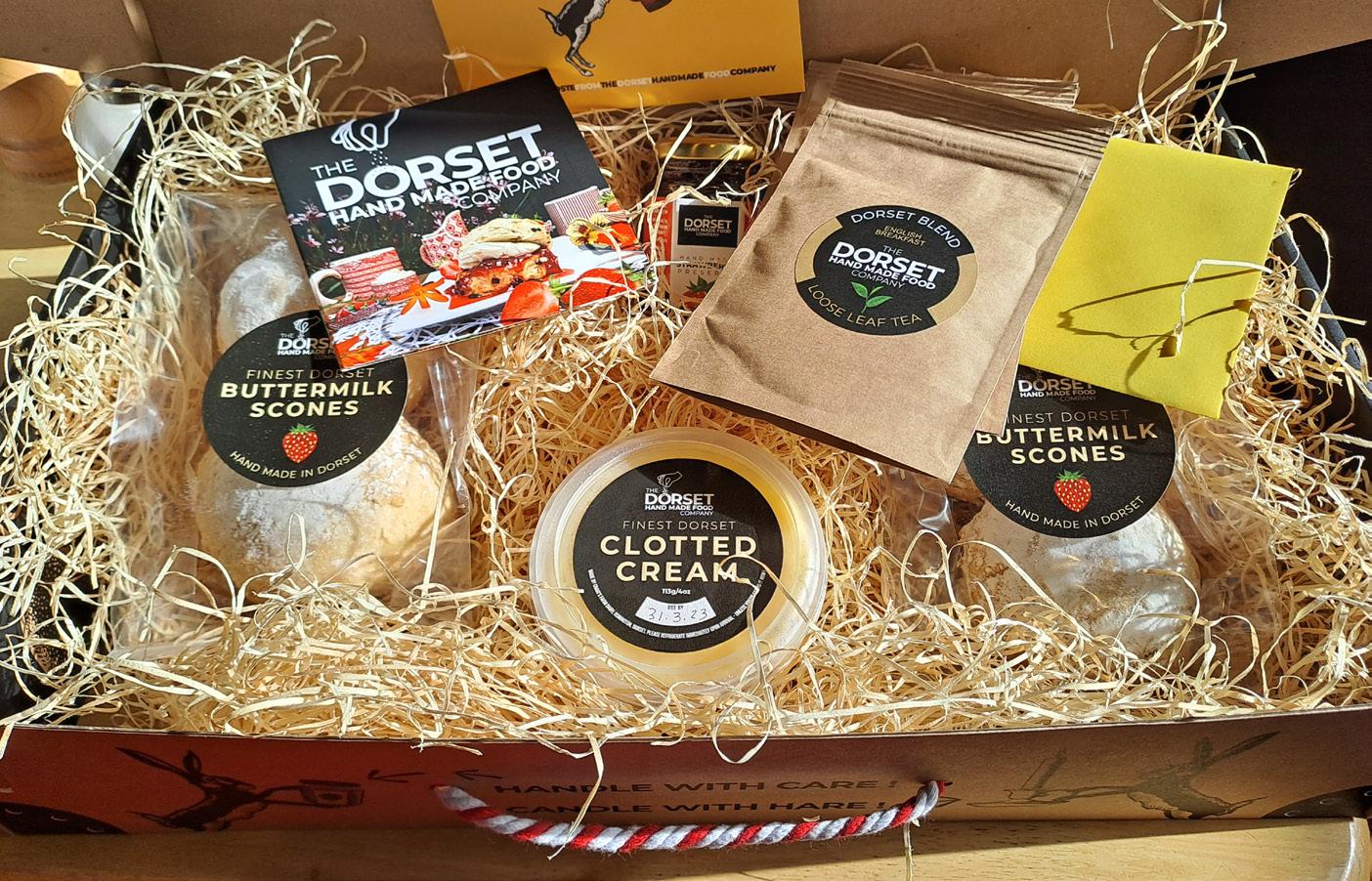
If you are looking for a gift for that hard-to-please person, or just to brighten someone’s day, these teas look ideal. Margot also
produces afternoon teas and cream teas that can be ordered as takeaway or delivered locally.
How many are in the team? ‘We have ten people, including our three Saturday kids – Eve has been here for six years and Liv is an apprentice.’
What flies out of the cafe? ‘Breakfasts! We serve them at lunch as well. Our Thornhill Brunch is an 11-piece breakfast, and we have breakfast specials too. All the ingredients are local, of course – the eggs come from the farm next door!
‘We also sell our preserves. Medlars are a rare fruit – I get my supplies from someone from the local vintage motorcycle rally. The John Boy’s marmalade is named after my uncle. When I took some marmalade to him he always stirred in some whisky.’

What are you most proud of?
‘That I’m still going! Lockdown was a valuable experience; I discovered that my culinary repertoire is much bigger than I imagined. I challenged myself to come up with a different menu item each week in lockdown.’
And your biggest challenge? ‘Actually it was coming out of lockdown. It has been really tough, especially this last winter. People got out of the habit of going out. These first few weeks of spring have just started seeing things pick up again.’
So what’s next?
We’re currently promoting our hampers with the cream teas by post. Here at Thyme After Time we’re trialling Sunday breakfast openings, with some special additional ingredients (think prebreakfast pastries and brunch platters). There’s also a doggie full English. And for the summer I’m looking at having a Sunday breakfast or brunch event with a musician playing. You’ve got to keep moving continually in business.’
For cream teas by post, visit DorsetHandmadeFoodCompany
Thyme After Time cafe is open Monday to Saturday, 8am to 2pm, at Spire Hill Farm, Thornhill, Stalbridge, DT10 2SG

If the sun comes out in the next few weeks, the British barbecues will no doubt be dusted off for the new season. Andy, the Traeger Grills chef, has provided BV readers with an alternative to the standard burgers and sausages – stretch your grilling skills with a Moroccan vegetable tagine! Tagine is a traditional North African stew, usually made with meat and vegetables, but in this recipe, they use an assortment of vegetables, aromatic spices and herbs to create a flavour-packed and satisfying meal. Perfect for vegetarians, vegans, as a vegetable side or anyone looking for a healthy and flavourful meal. So fire up the grill and get started on this mouth-watering vegetable tagine!
• 150g Butternut Squash
• 150g Onion
• 1 Small Red Pepper
• 125g Courgettes
• 3 Cloves Garlic
• 50g Dried Apricots
• 125ml Vegetable Stock
with a few strands of saffron added
• ¾ Tsp Coarse Sea Salt
• 1 Tsp Dried Mint
• ½ Tsp Ground Cumin
• ½ Tsp Ground Coriander
• 1 Tbsp Rose Harissa Paste
1. Peel the butternut squash and cut into a 1.5cm dice
2. Peel, top and tail the onion and then cut into eight wedges
3. Cut the red pepper into a dice
4. Cut the courgette into 2cm dice
5. Peel and slice the garlic cloves as finely as you can.
6. Cut the dried apricots in half.
• 2 Tbsp Olive Oil
• ½-1 Tsp Sumac
• Handful of Freshly Chopped Parsley
• Two chopped preserved lemons
7. Add the onions to the tagine, followed by the pepper, then garlic, courgette, butternut squash, apricots and preserved lemons. Try to arrange the veggies in layers so that they all cook evenly .
8. Mix the vegetable stock with the harissa paste, saffron, ground cumin, ground coriander and dried mint, then pour it over the vegetables.
9. Pour over the olive oil and pout on the tagine lid. place the tagine onto your barbecue grill (or and oven) at 160º for 40-45 minutes.
10. Garnish with sumac and fresh parsley.
Serving Tip: Serve with some simply cooked couscous. Boil some veg stock and pour it over 150g of couscous. Cover with cling film and leave for 5-6 minutes to absorb the liquid. Season with salt and pepper and a couple of knobs of butter.
Hello and welcome to my April column. As I write this, the sun is actually shining and it feels like spring is finally in the air! This month will see Dorset Chamber publish our manifesto for the year April 2023 to March 2024, setting out our priorities for the year ahead. I thought I’d take this opportunity to share a very brief overview.
This year will see us continue to add value to our member businesses, as well as maintaining our focus on increasing membership as the leading business support organisation in Dorset. We will continue to work on enhancing the whole range of benefits we offer that protect, connect, promote and save our members money.
One of our key roles as a Chamber accredited to the
British Chambers of Commerce is building a global economy through international trade. We will continue to encourage Dorset businesses to consider international trade opportunities and seek new overseas markets through our general advice and training programme. We continue to offer a first class documentation programme for Dorset exporters.
One of our most important roles is our voice for businesses: we lobby at both a local, regional and national level. We’ll continue to provide media comment and campaign for business on key issues.
This year our busy events programme will include a wide range of networking opportunities and the opportunity to learn from expert speakers on a range of critical

business issues. Our successful sector-based events will also offer business leaders the opportunity to meet and discuss common issues on an industry basis.
Finally, April sees the official launch of the Dorset Business Festival in association with Lester Aldridge. The three day celebration of Dorset businesses is taking place in October. Consisting of a conference, a business exhibition and the return of the Dorset Business Festival, this promises to be the business event of the year in Dorset.
If you’d like to find out how Dorset Chamber could help your business, please visit dorsetchamber.co.uk or call us on 01202 714800. We’d be delighted to hear from you!

With a new manifesto for the new financial year, Dorset Chamber’s Ian Girling takes a look at what the Chamber does for Dorset businesses





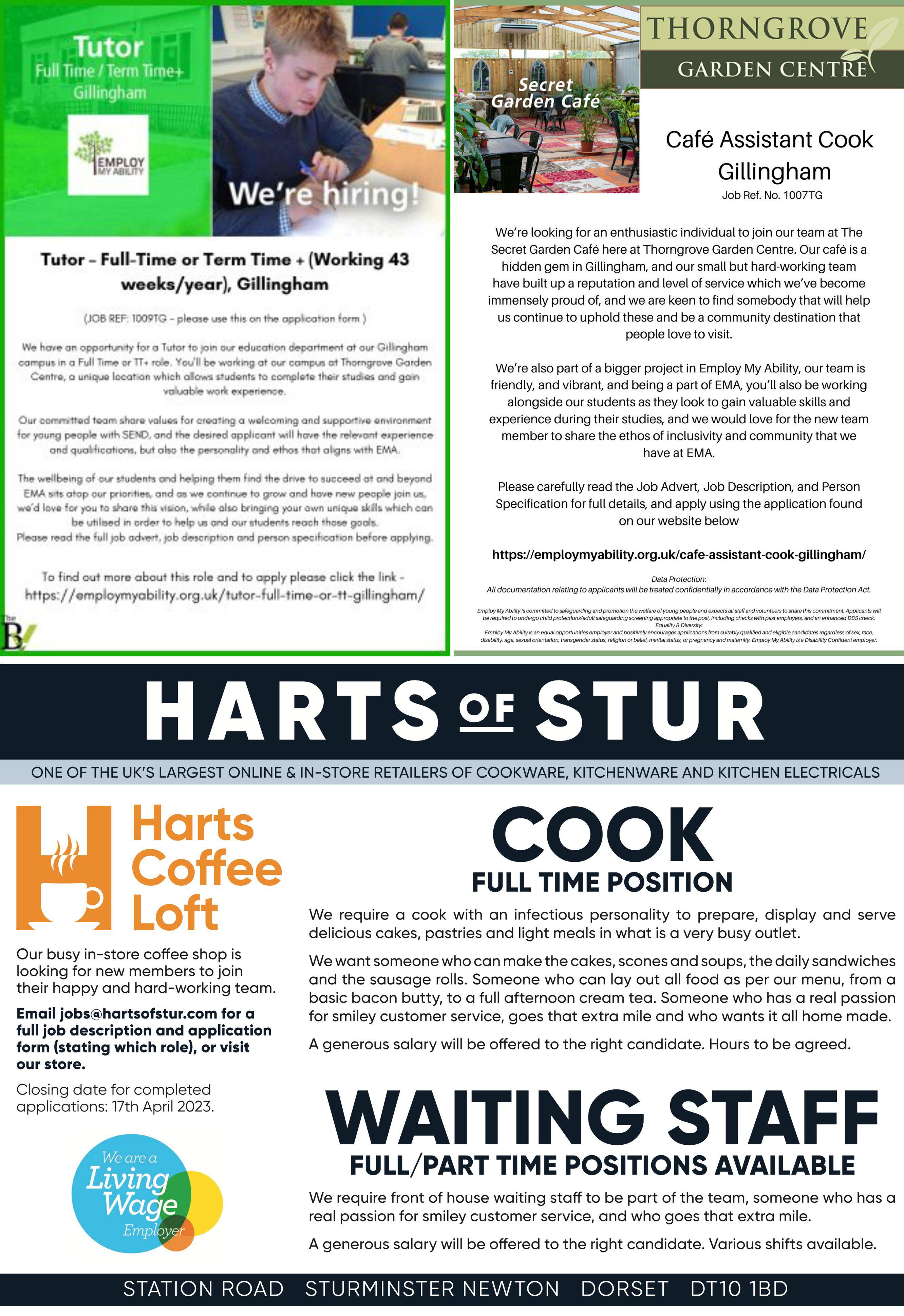





P R O D U C T I O N
S C H E D U L E :
N e x t P u b l i c a t i o n D a t e :
5 t h M a y
S u b m i s s i o n D e a d l i n e :


1 s t M a y
N e x t P u b l i c a t i o n D a t e s :
2 n d J u n e
7 t h J u l y
F u r t h e r f o r w a r d s - p u b l i c a t i o n a l w a y s f i r s t F r i d a y o f t h e m o n t h .
C o p y b o o k i n g d e a d l i n e a l w a y s t h e F r i d a y p r i o r t o p u b l i s h i n g
G
G e t i n t o u c h w i t h L a u r a o n e d i t o r @ B V m a g a z i n e . c o . u k
W A
G r e a t n e w s ! I f y o u k n o w w h a t y o u w a n t , t h e n s i m p l y
h e a d t o h t t p s : / / w w w t h e b l a c k m o r e v a l e c o u k / a d v e r t i s e /
t o b o o k o n l i n e
O r g e t i n t o u c h w i t h C o u r t e n a y t o c h a t a b o u t w h a t y o u ' r e l o o k i n g f o r :
a d v e r t i s i n g @ B V m a g a z i n e . c o . u k
0 1 2 5 8 4 7 2 5 7 2